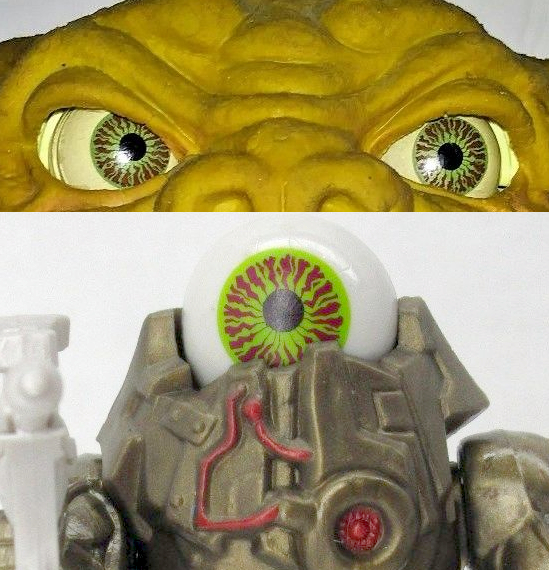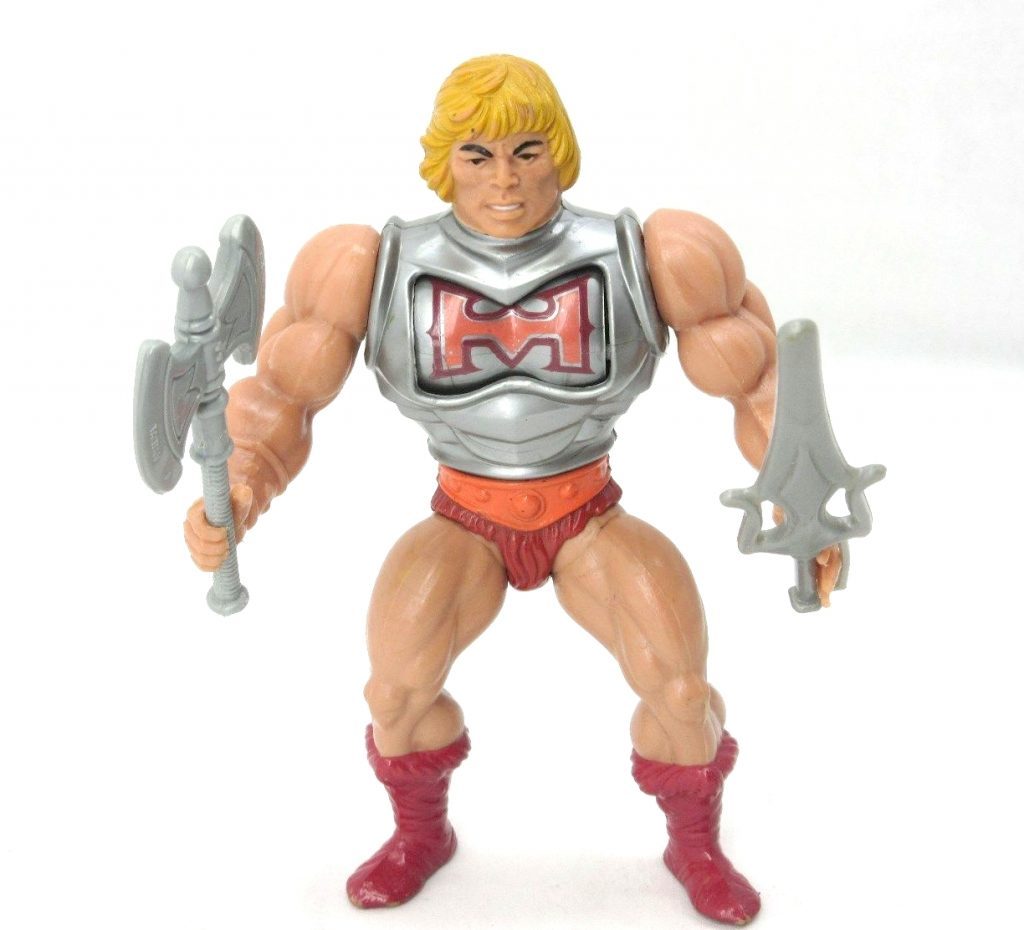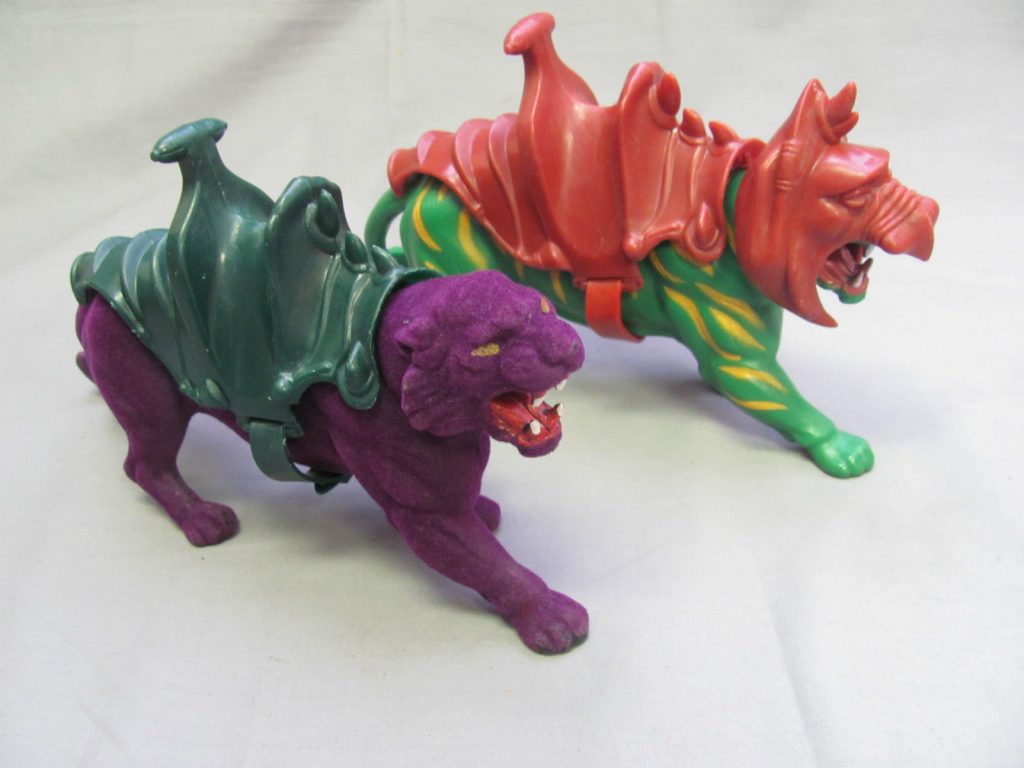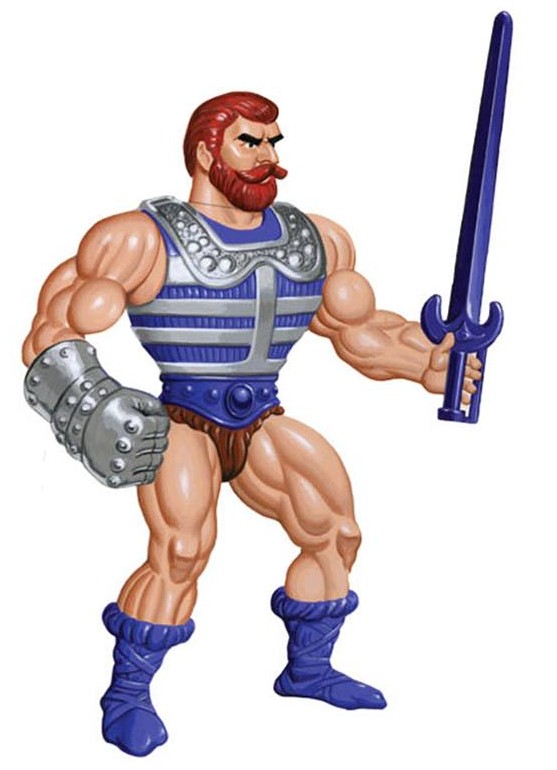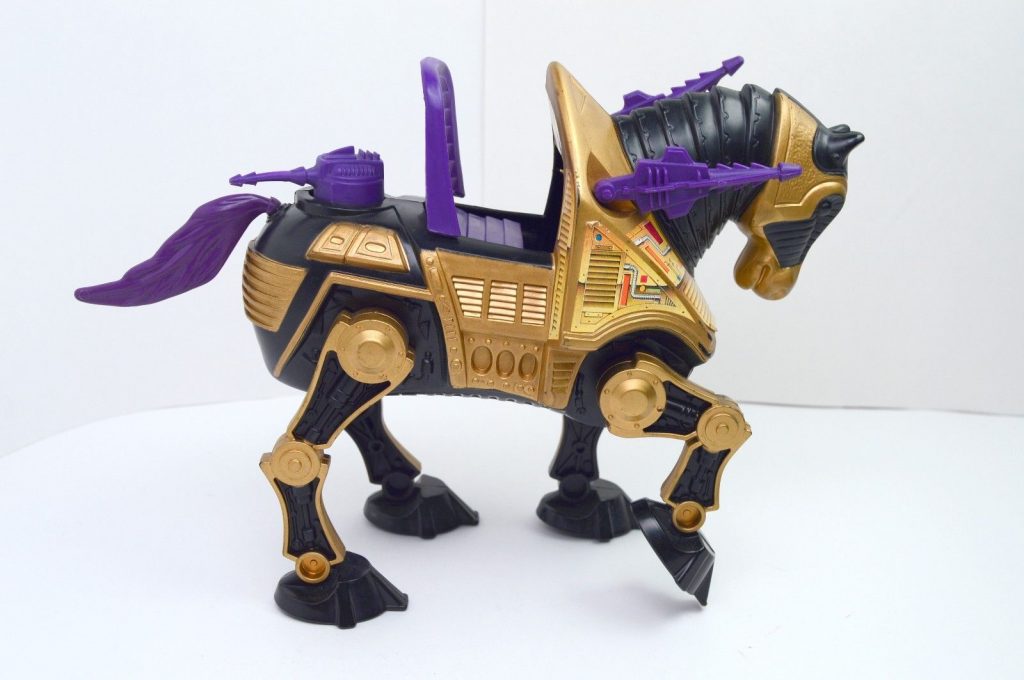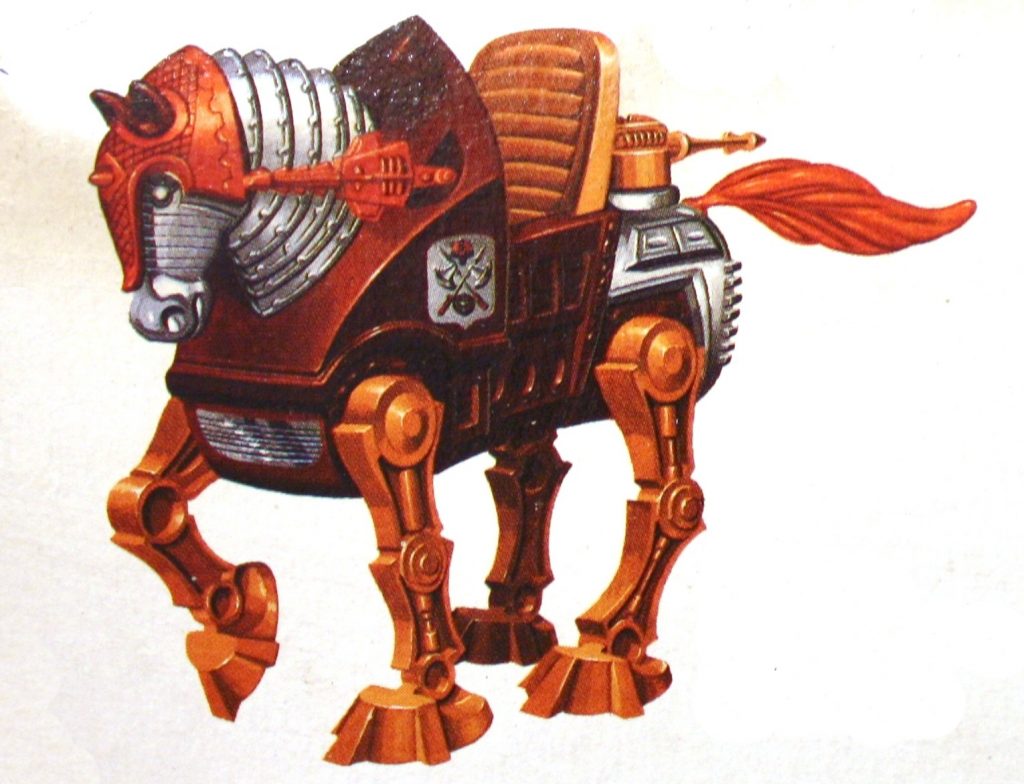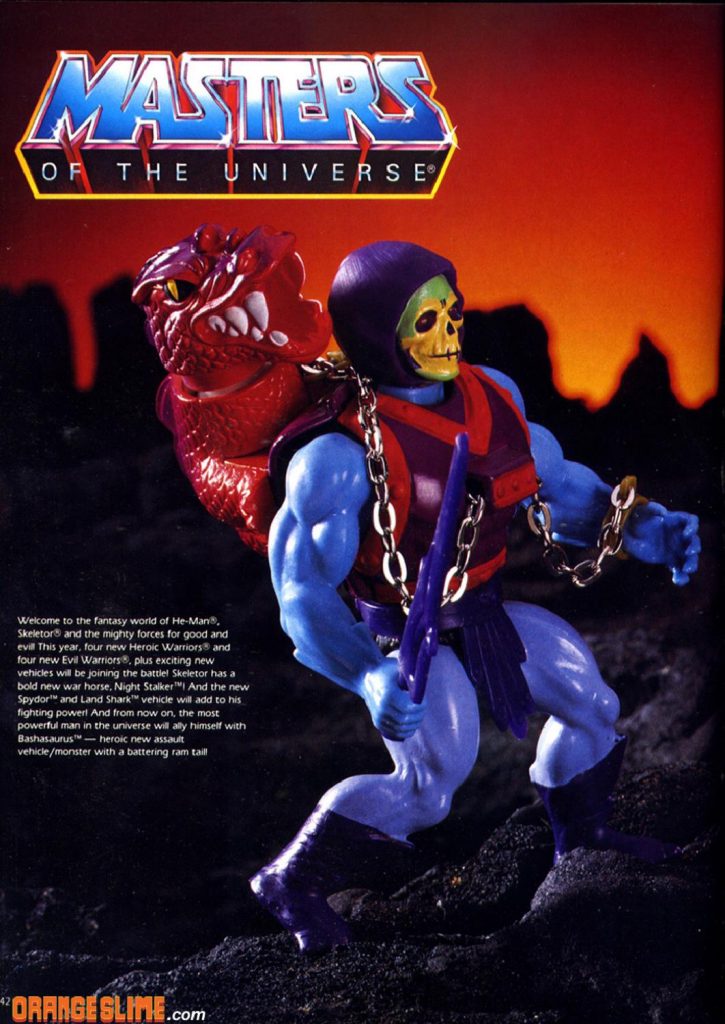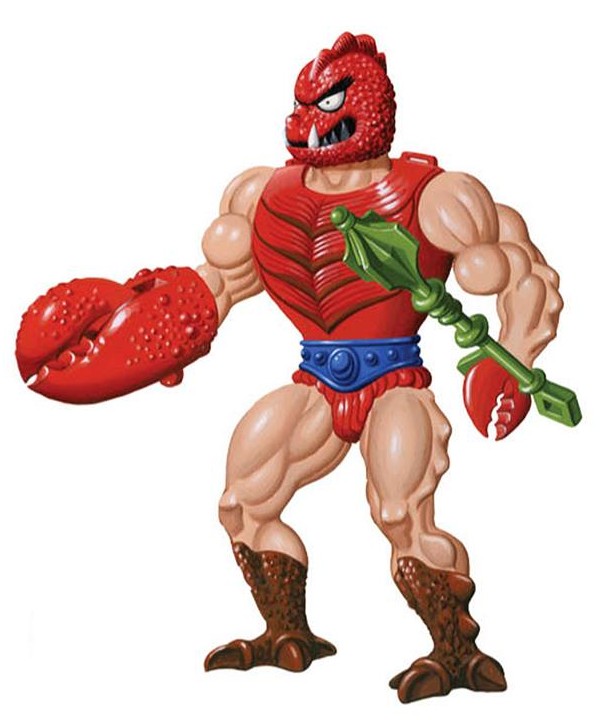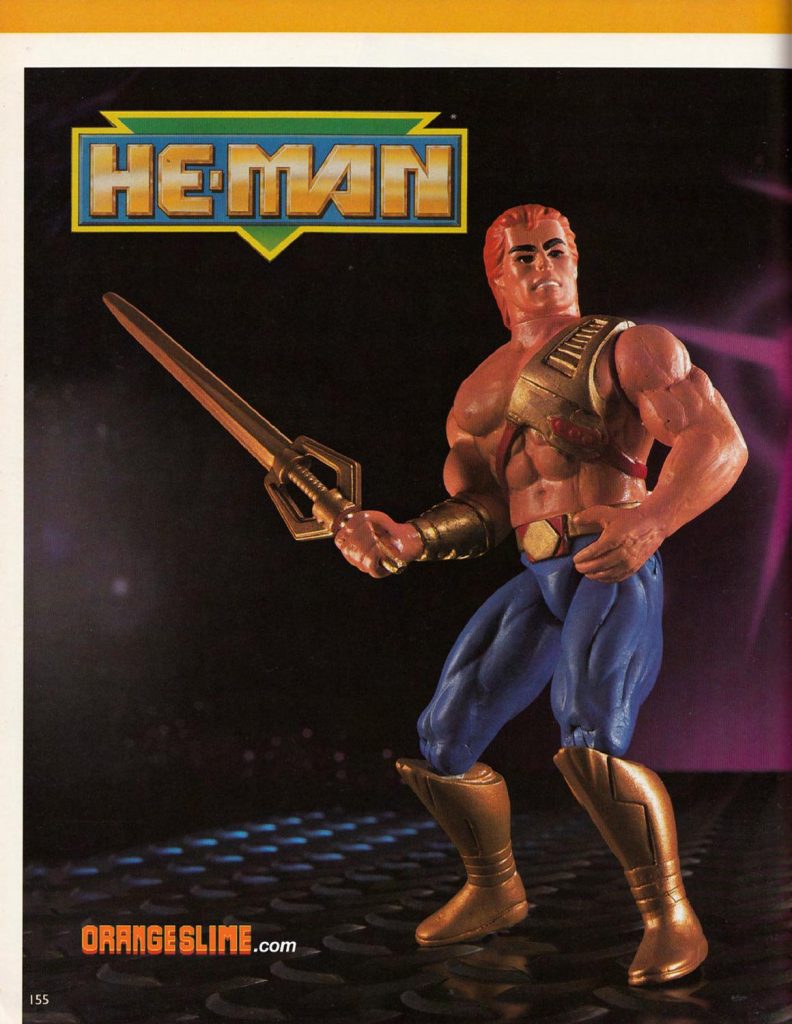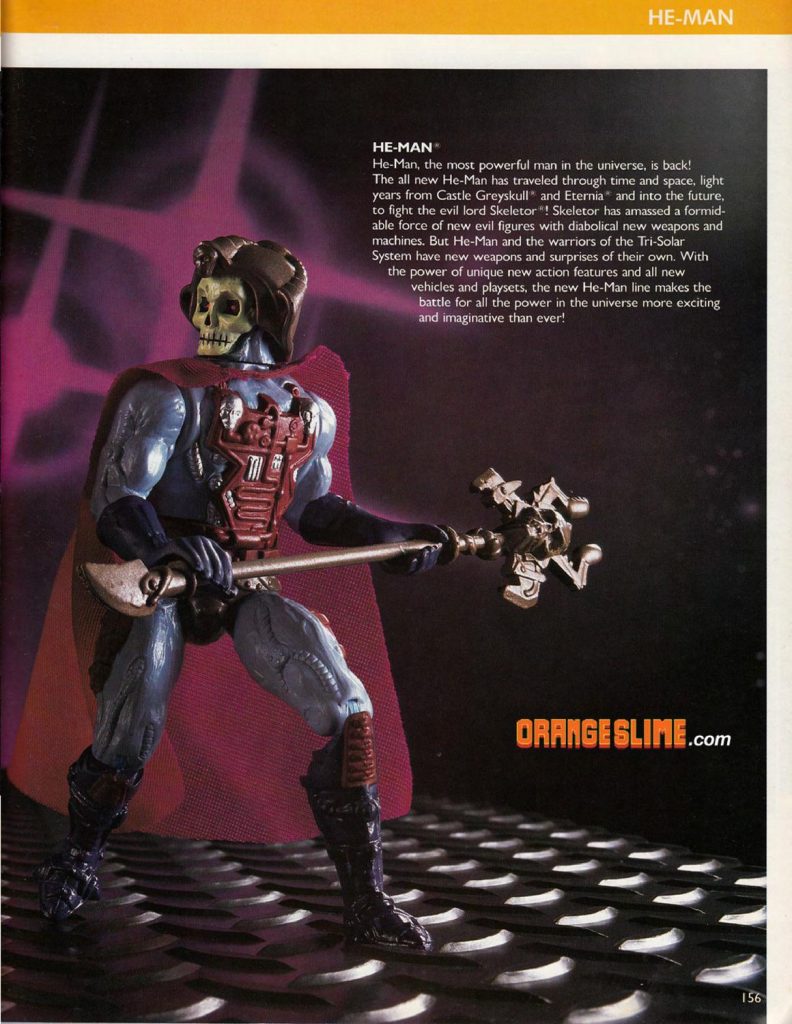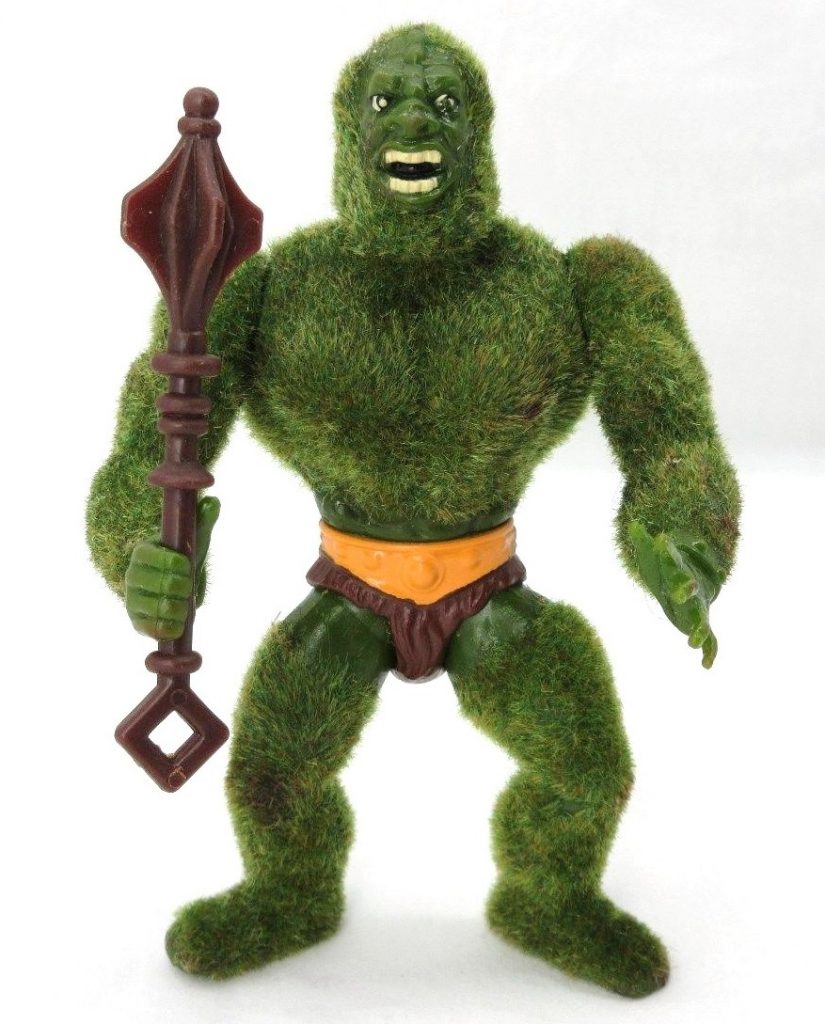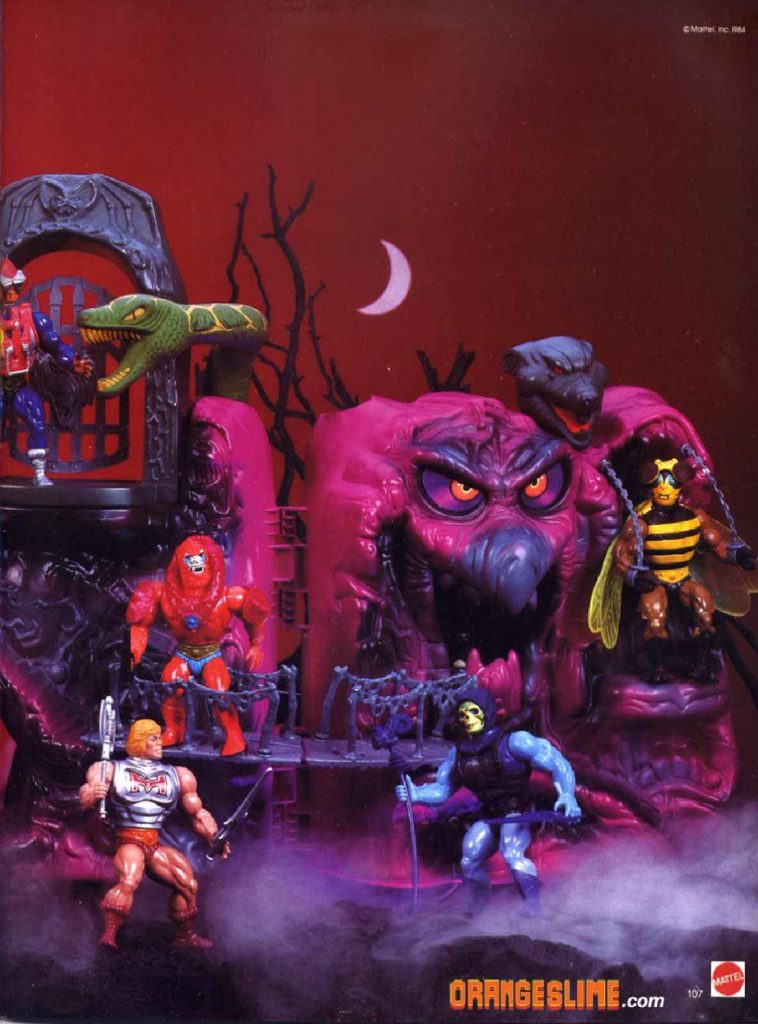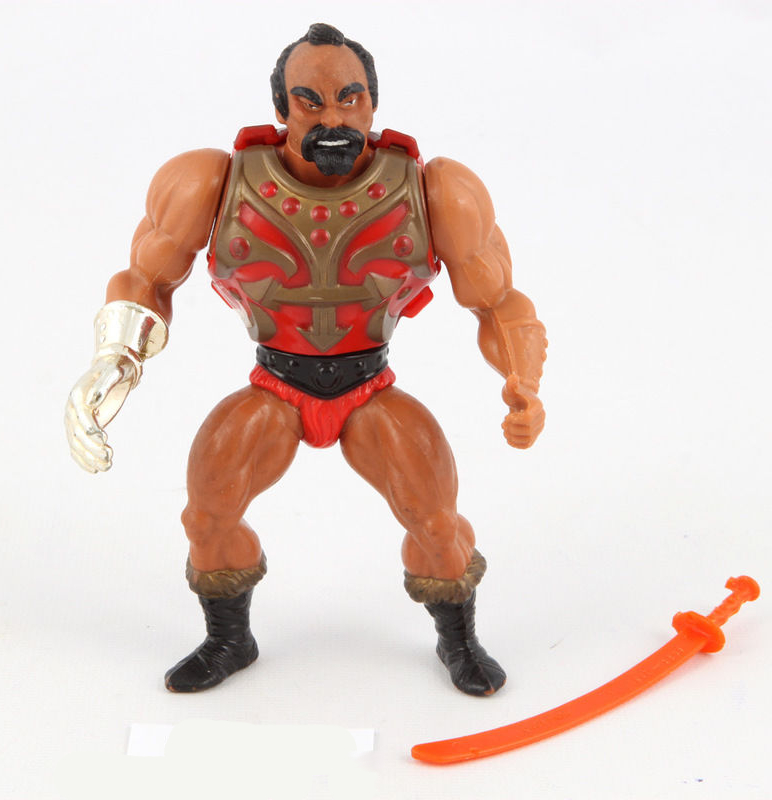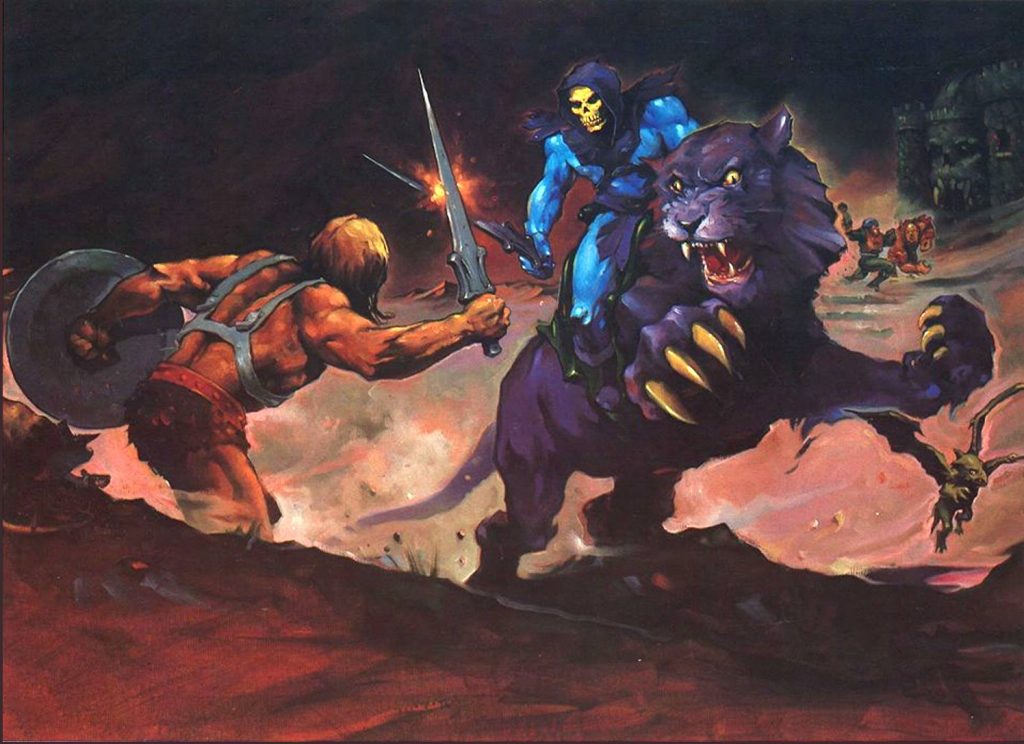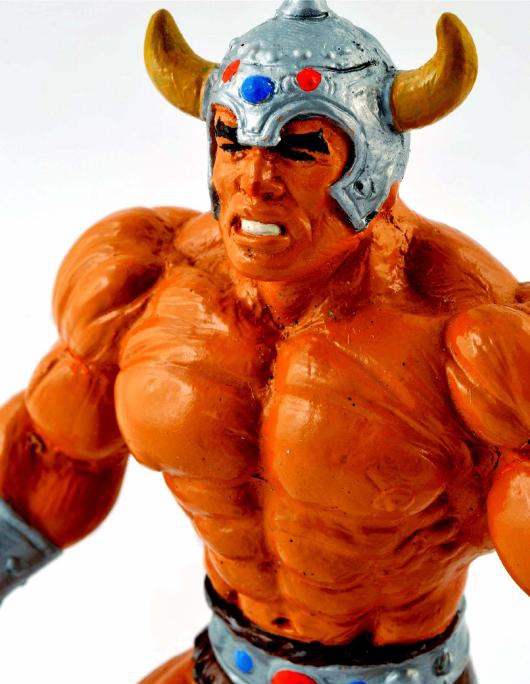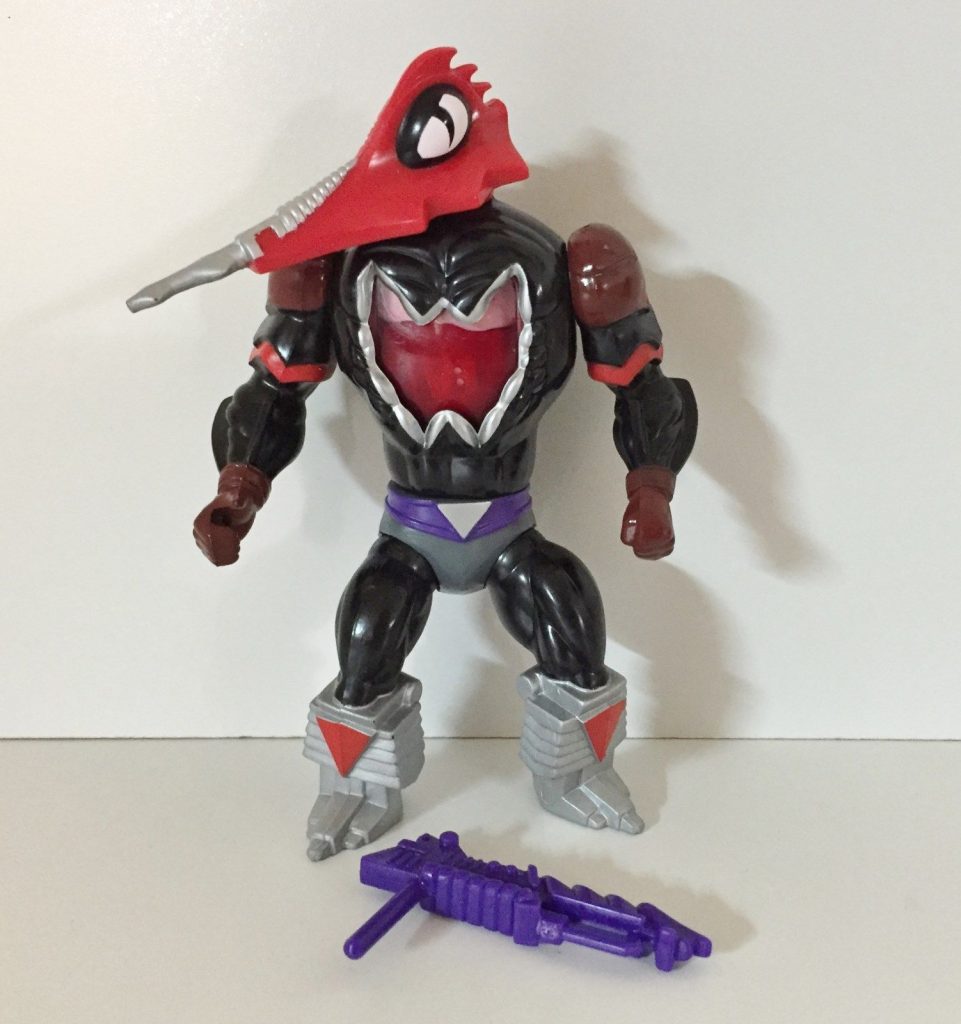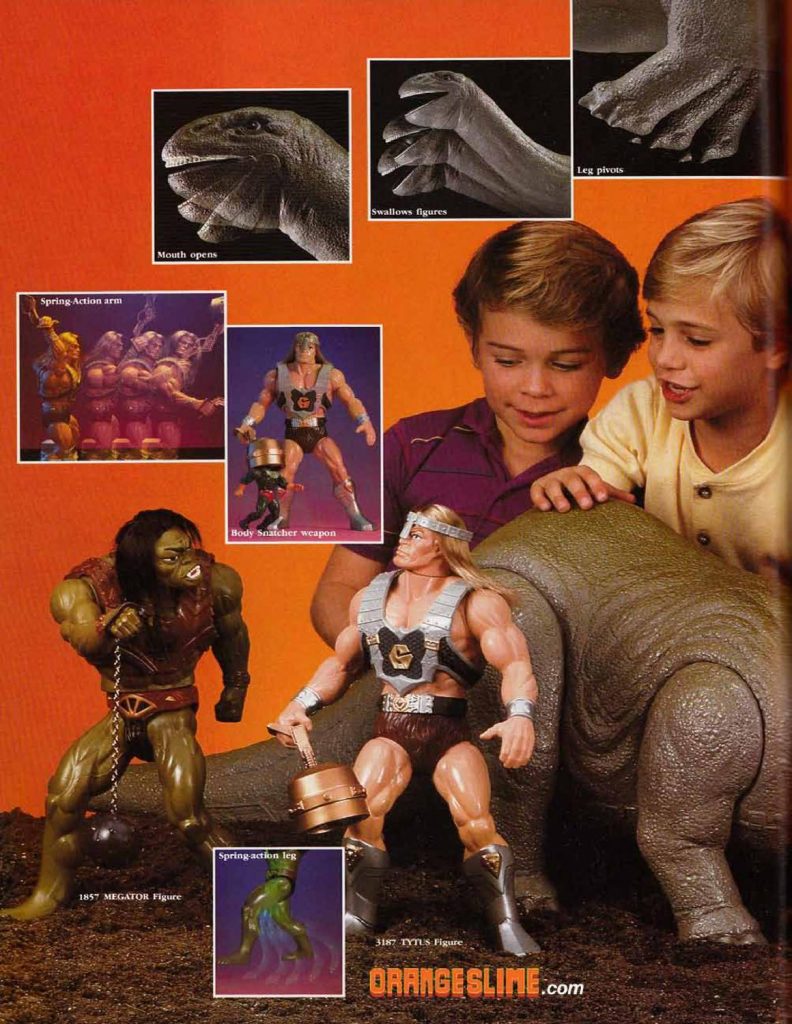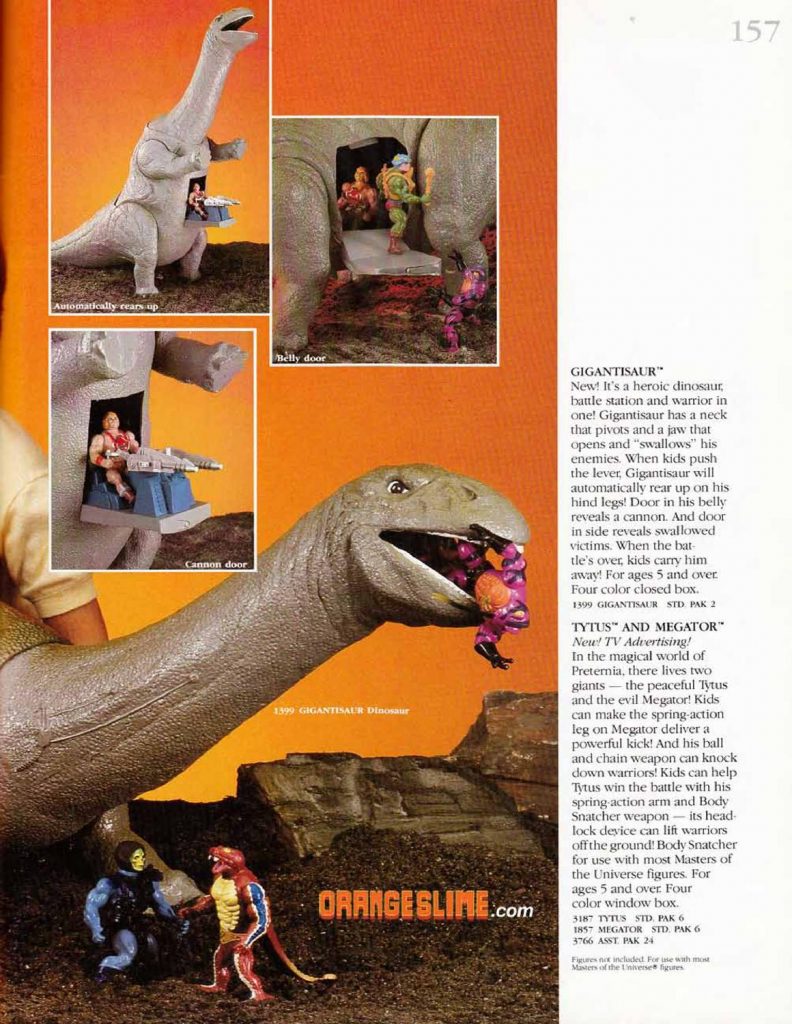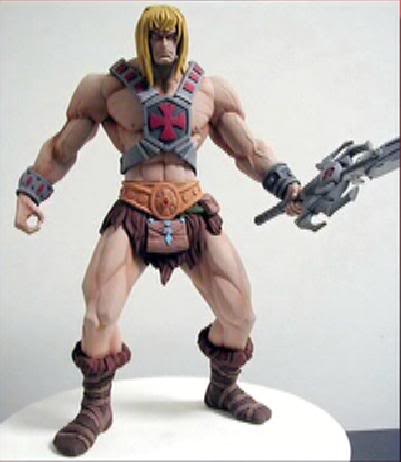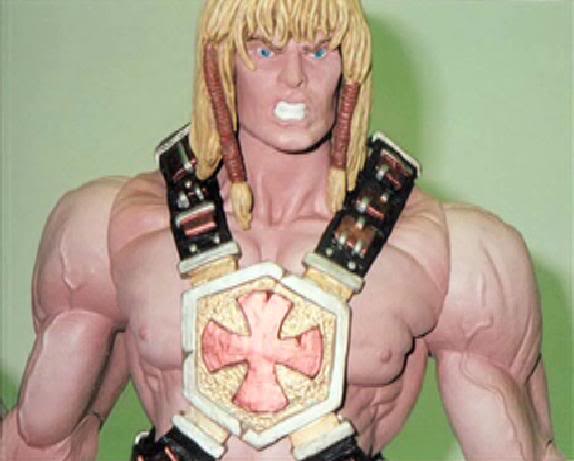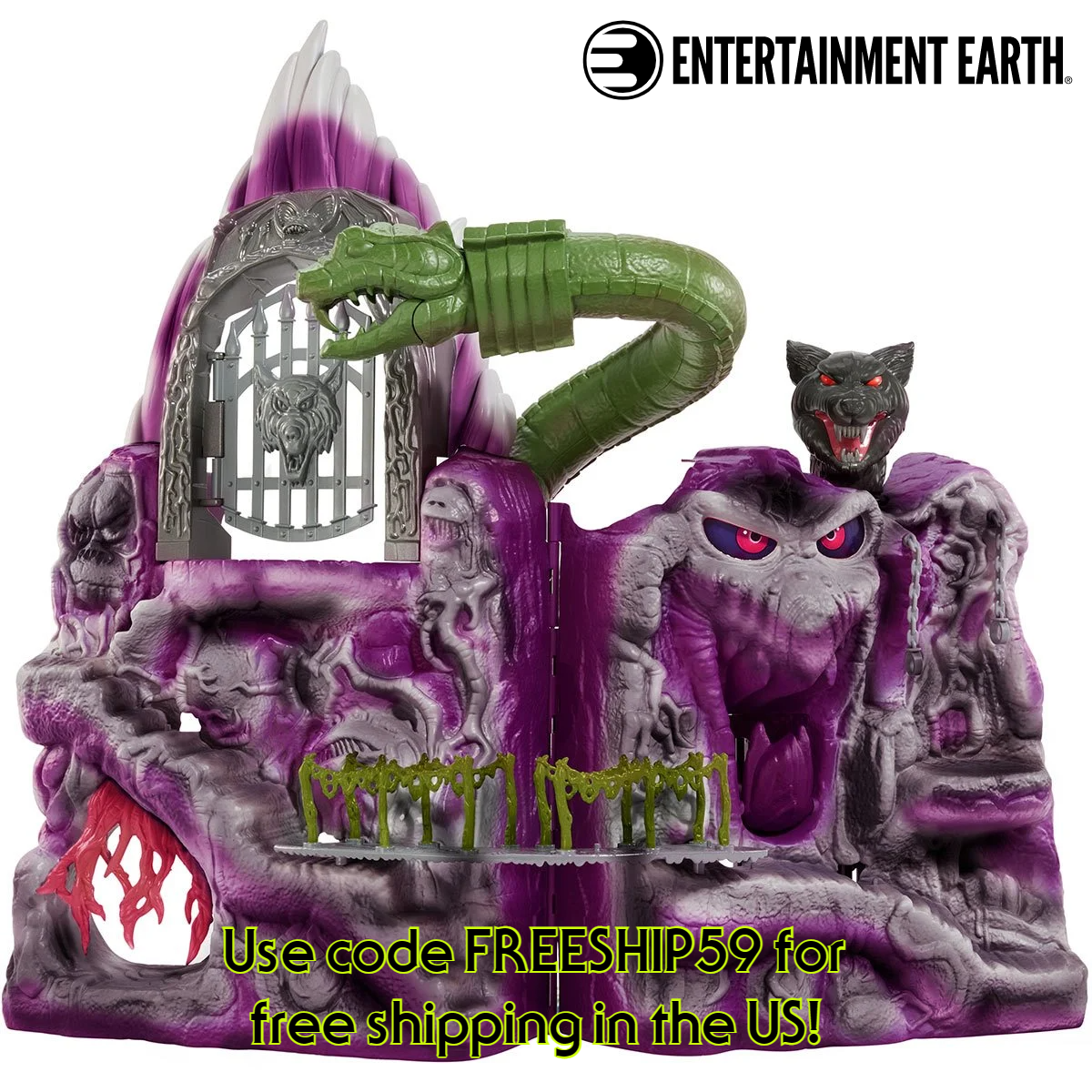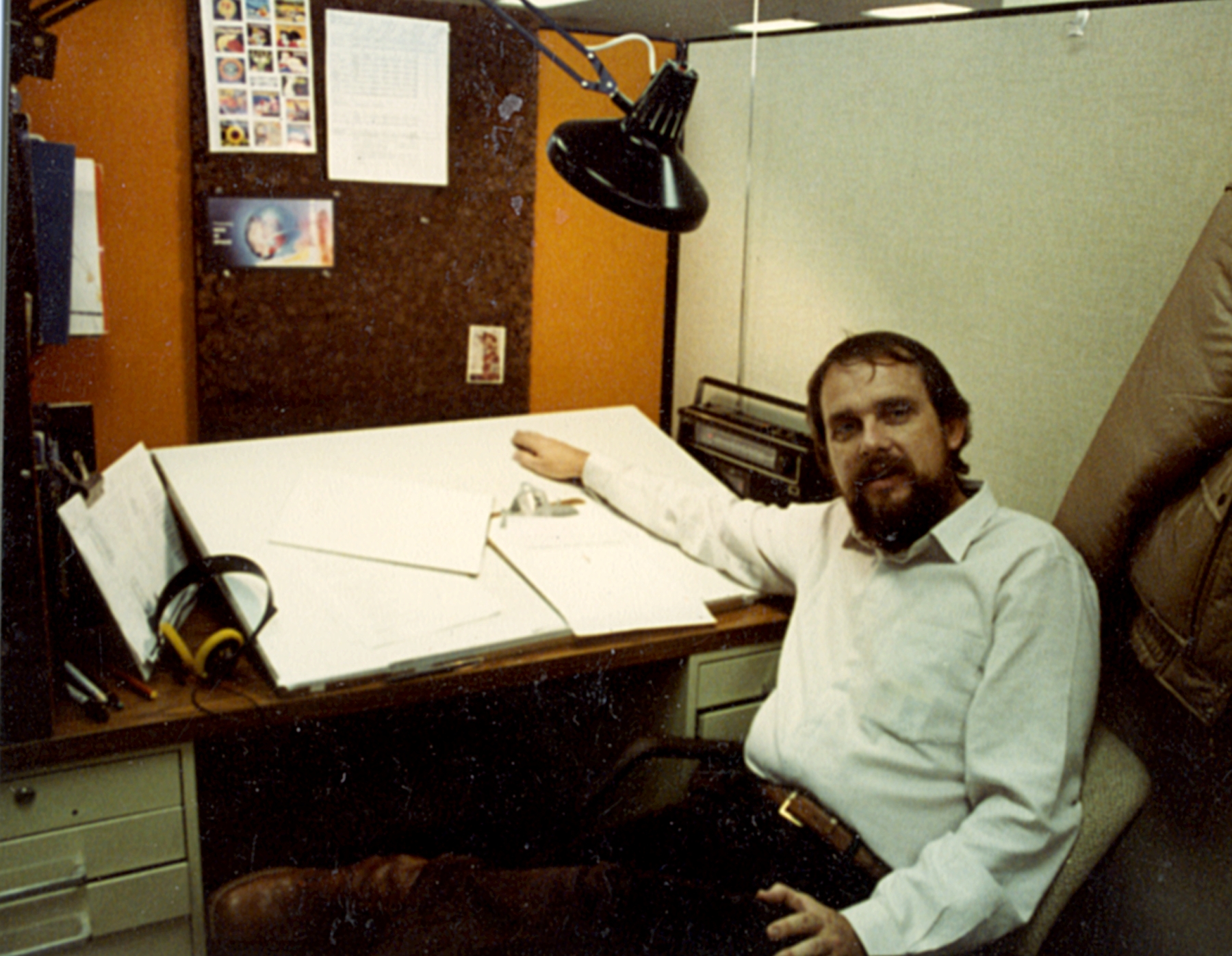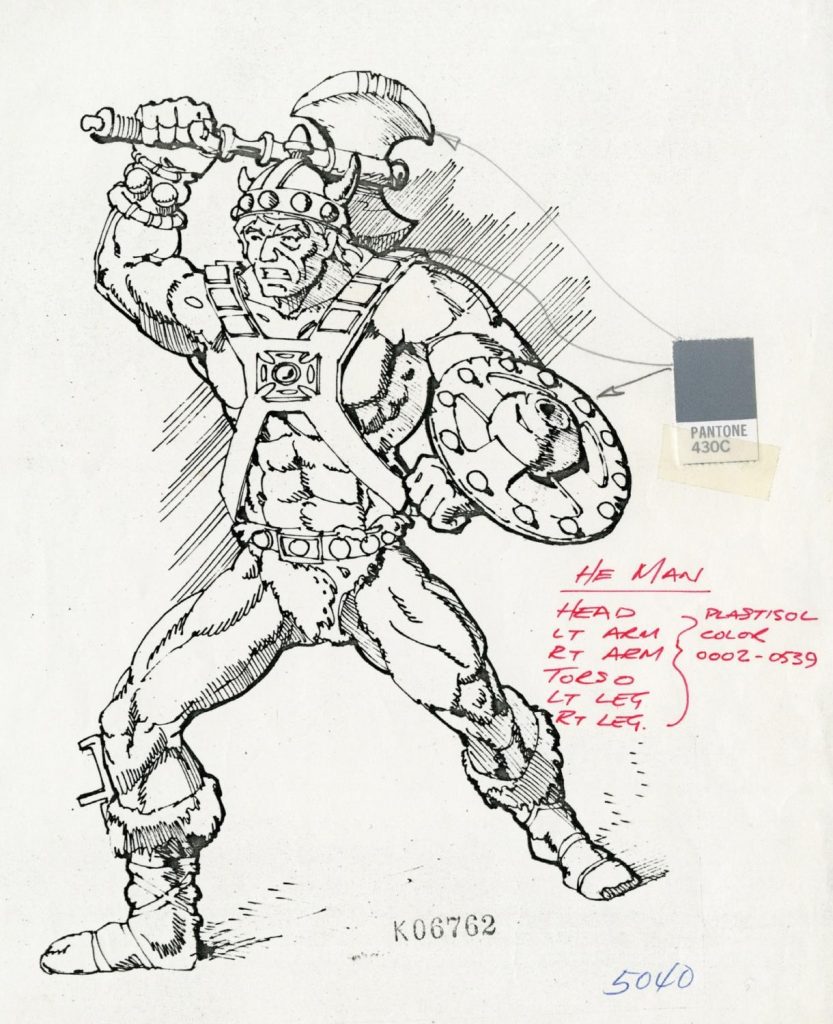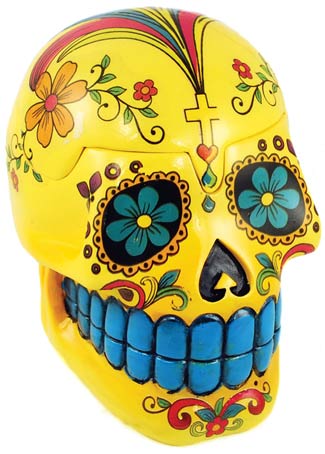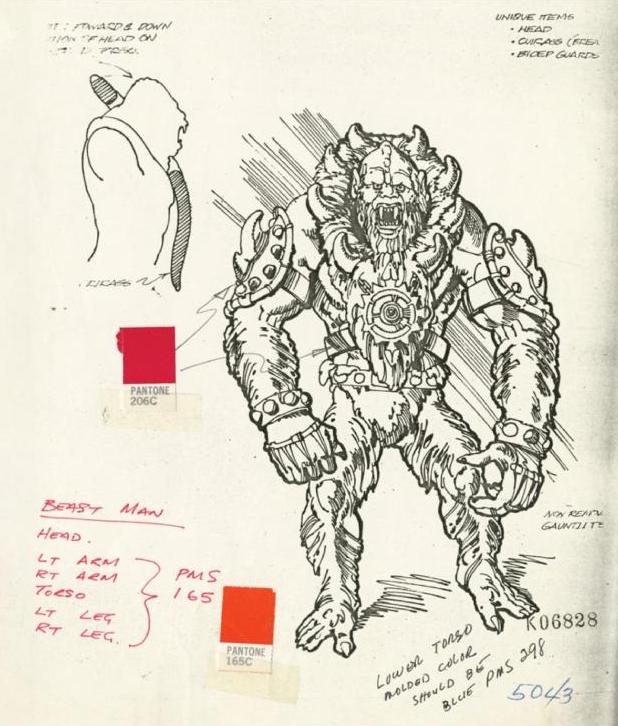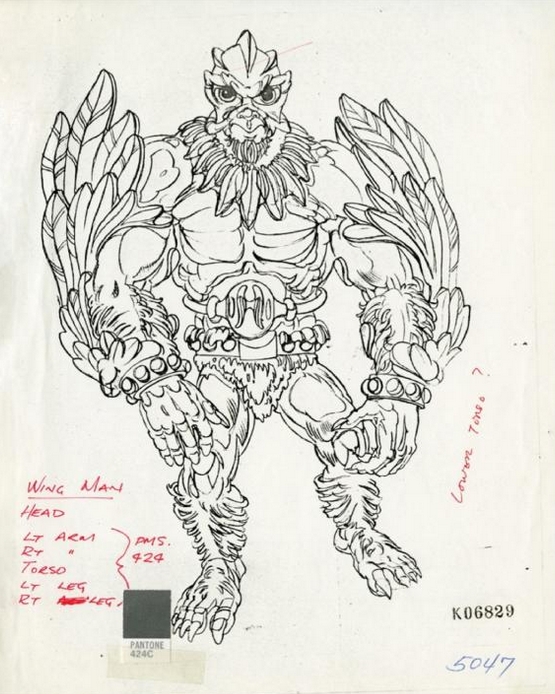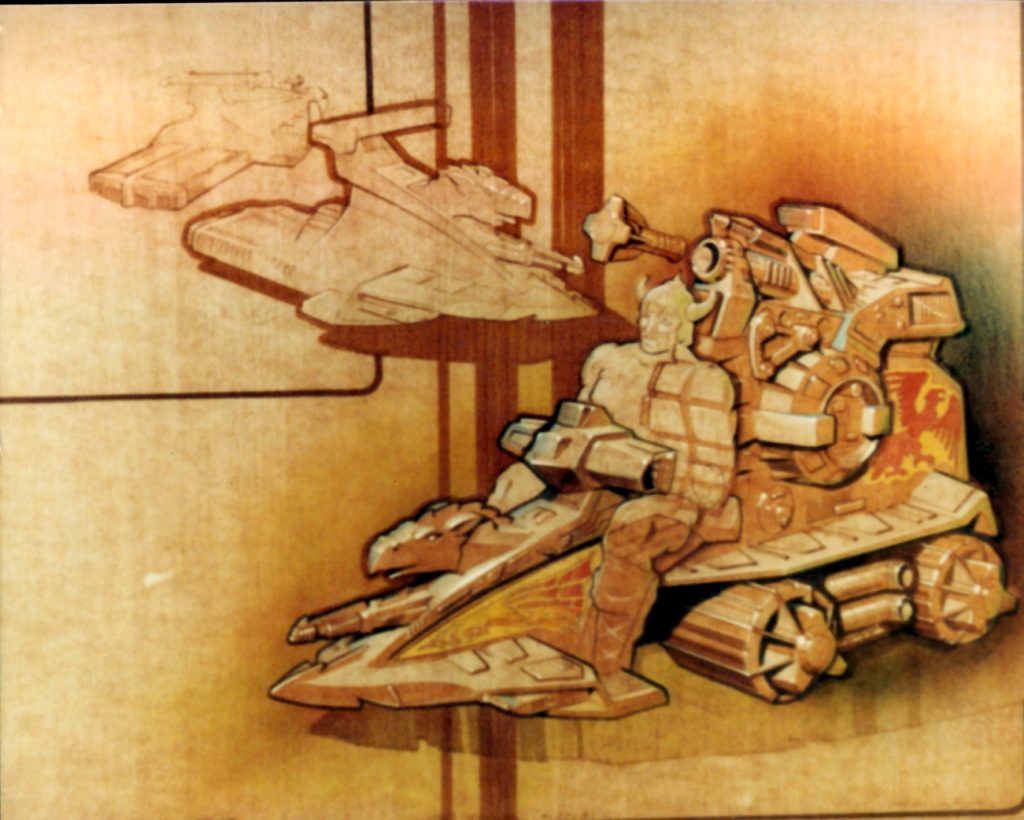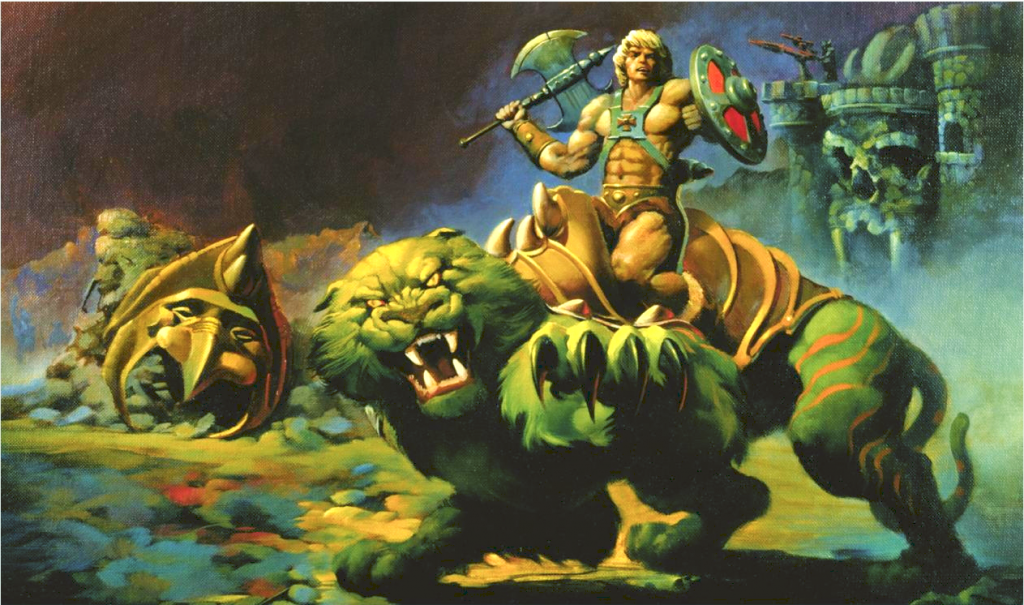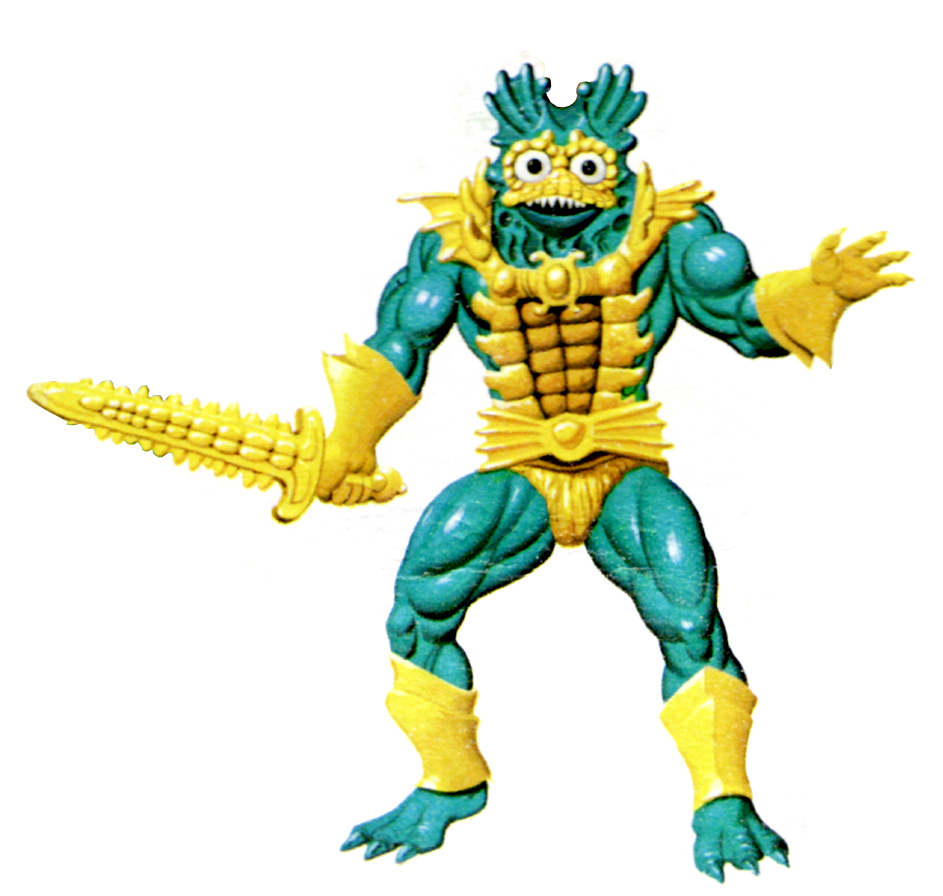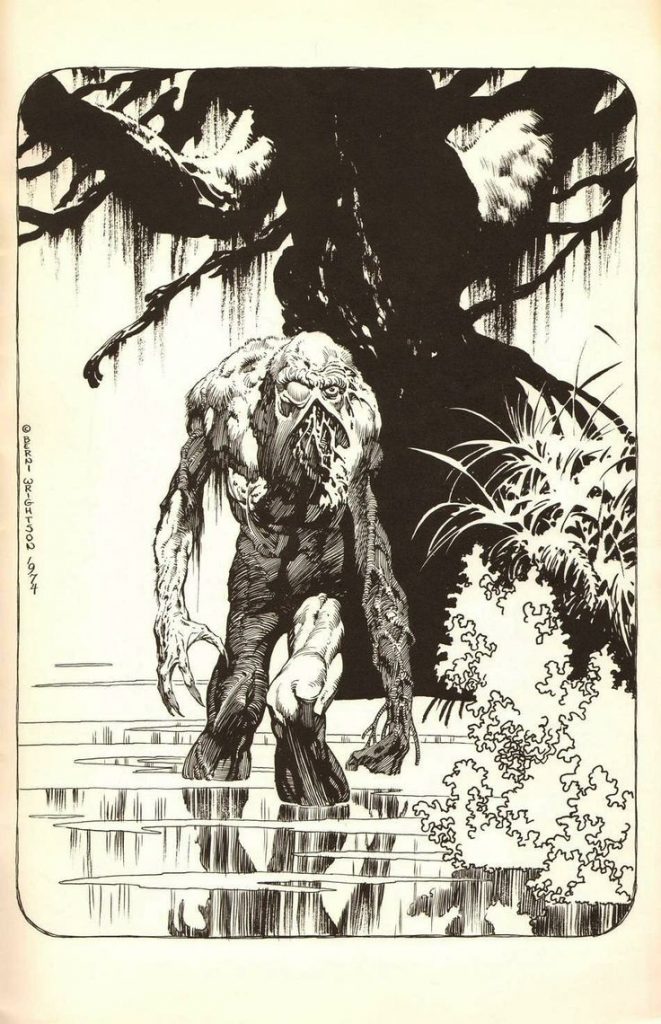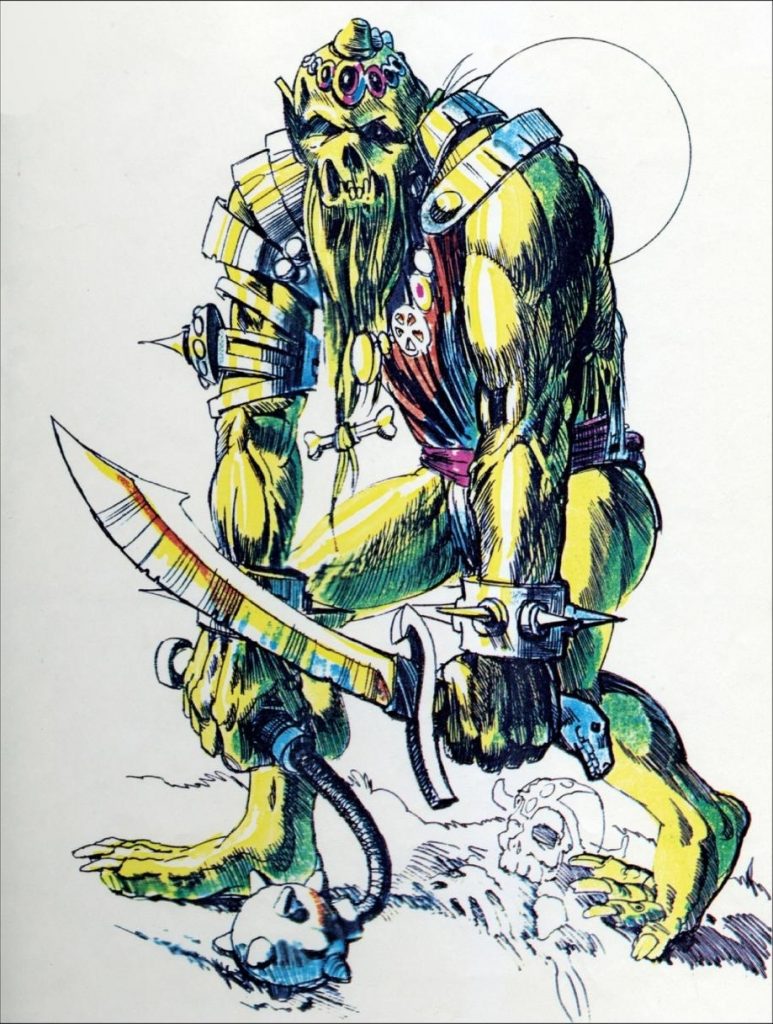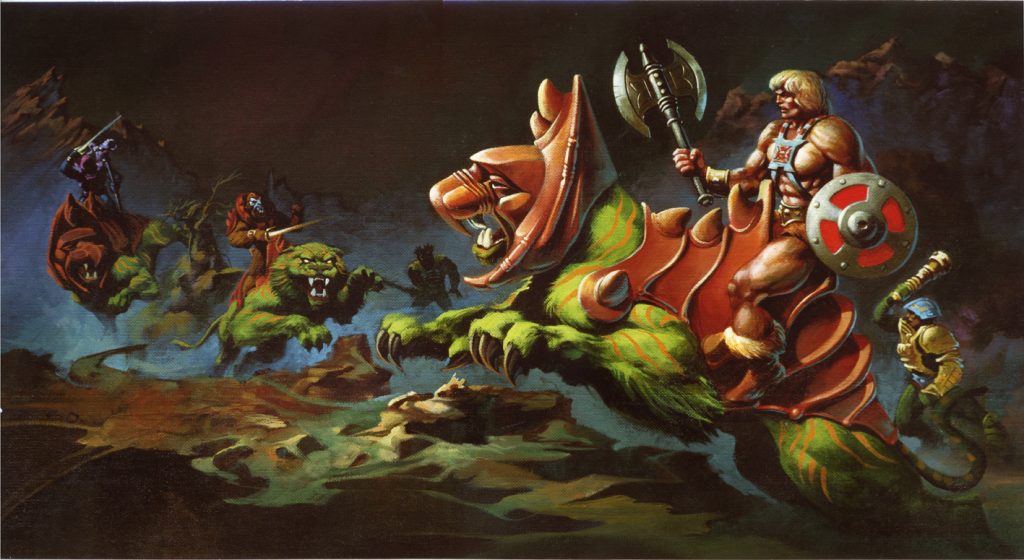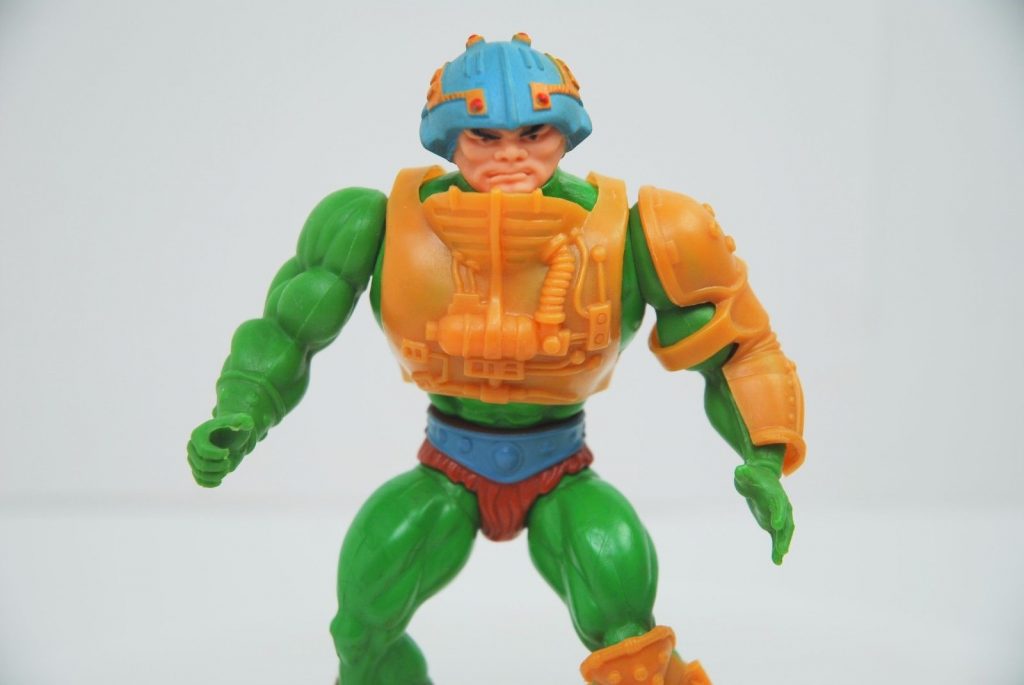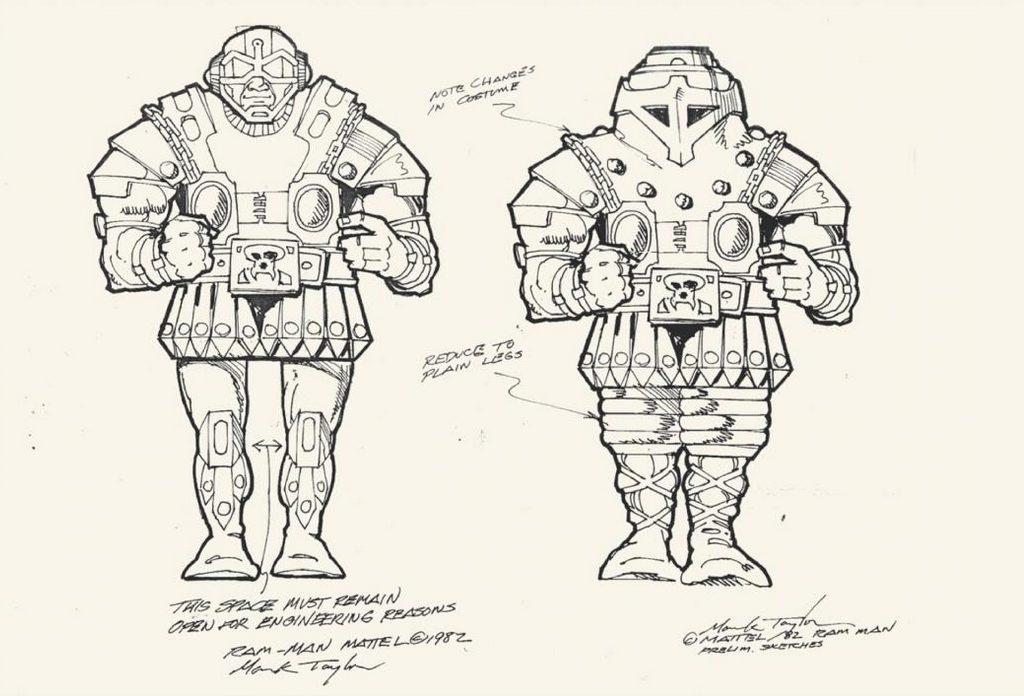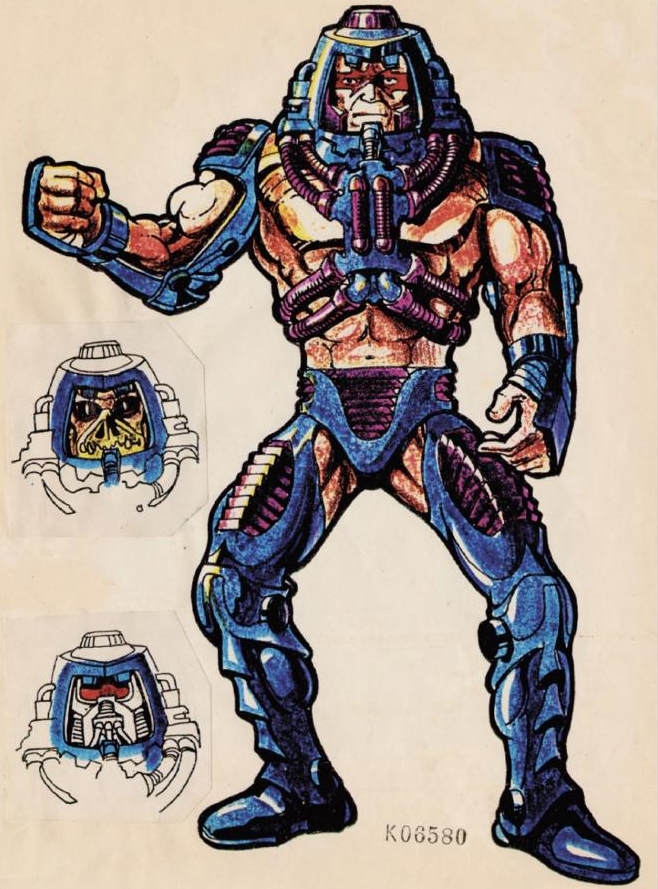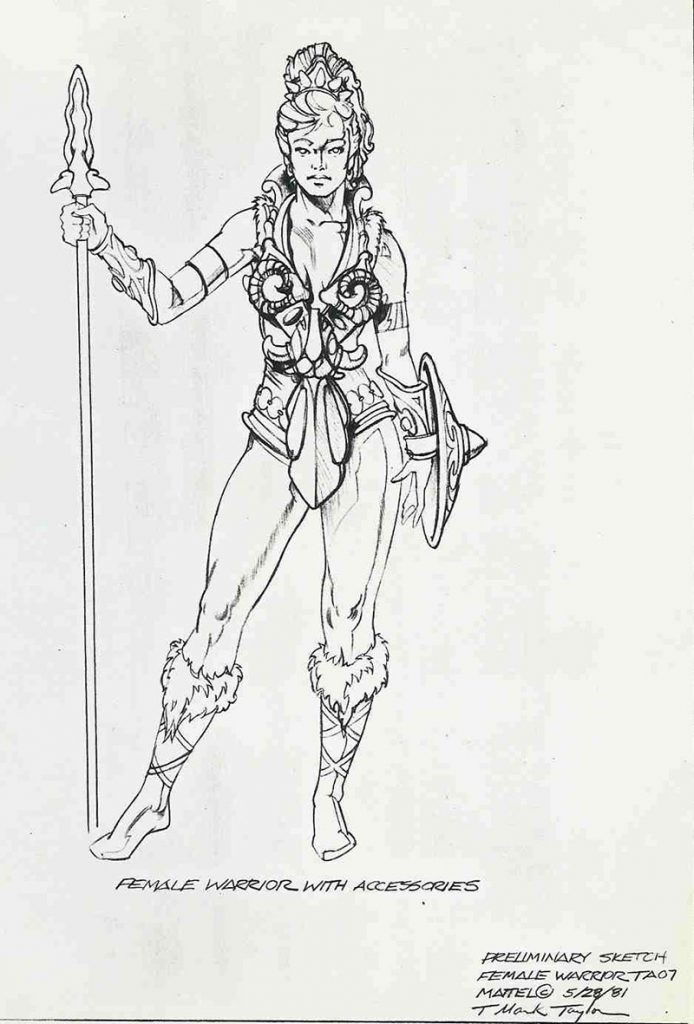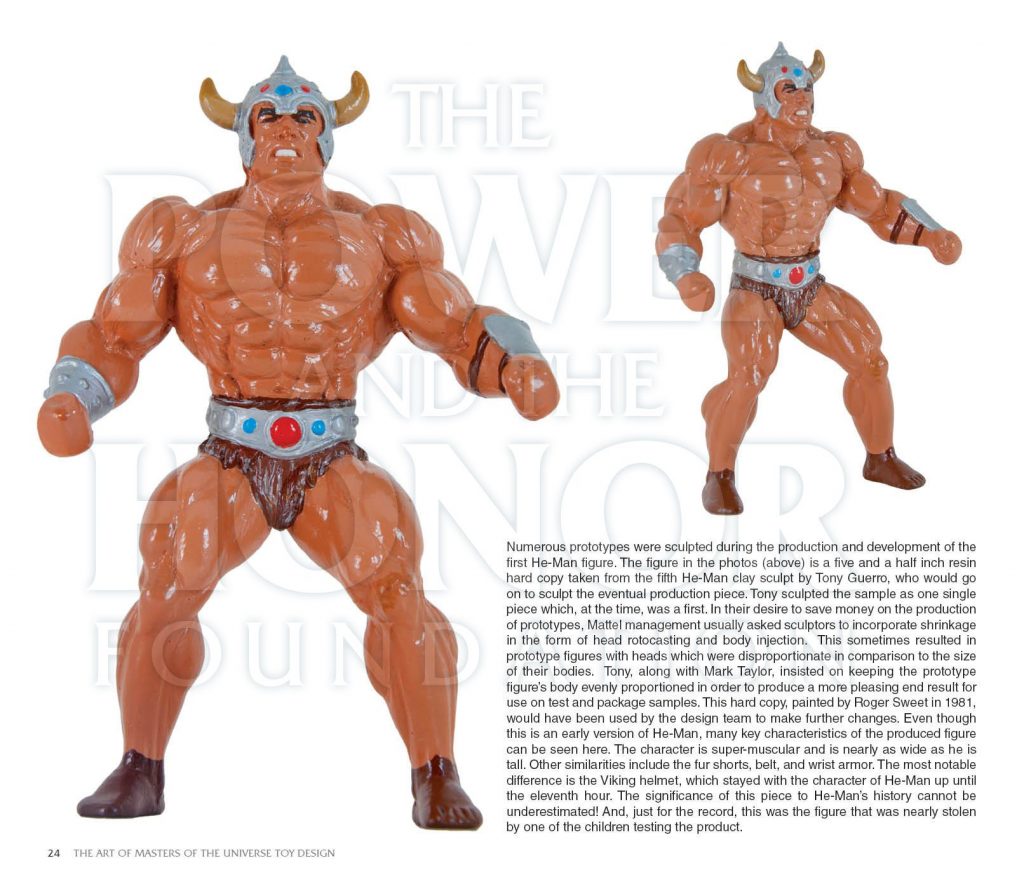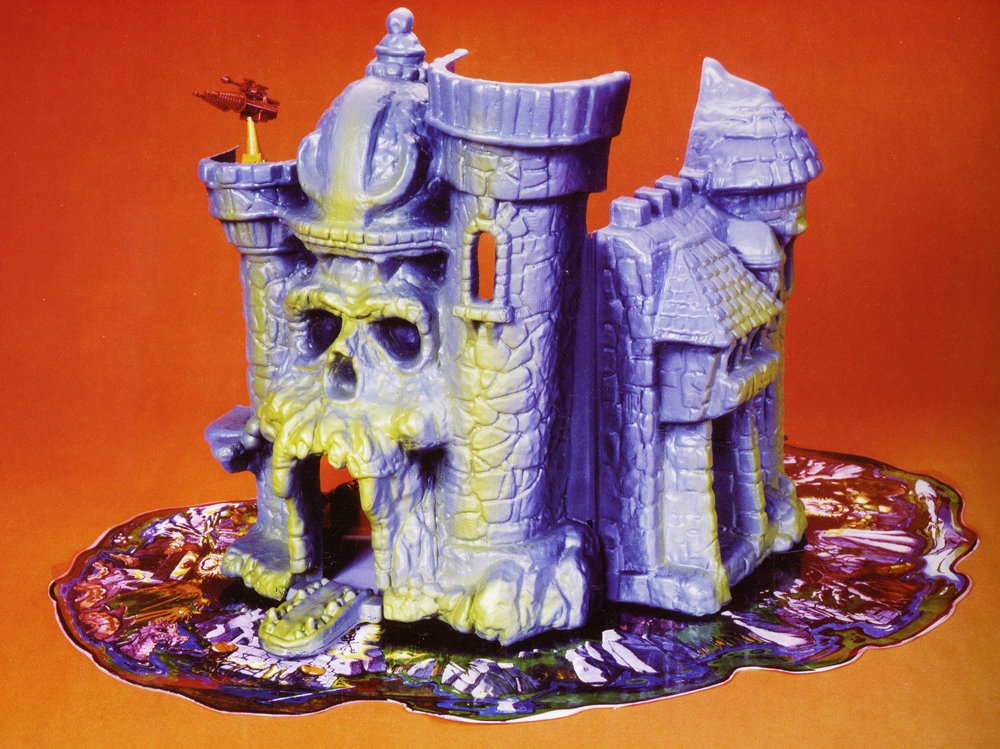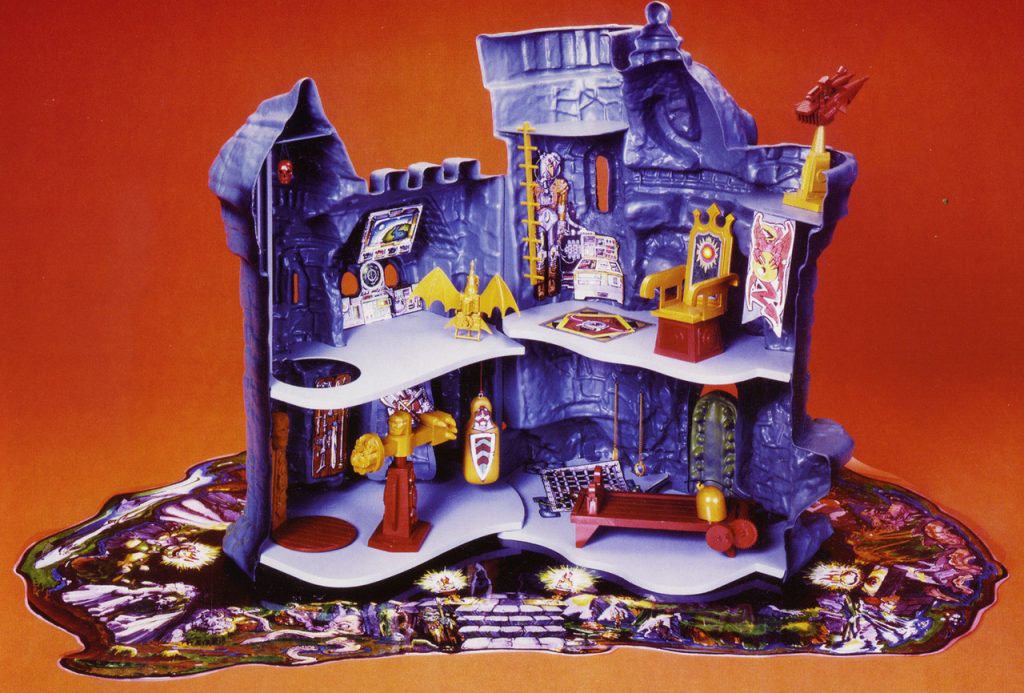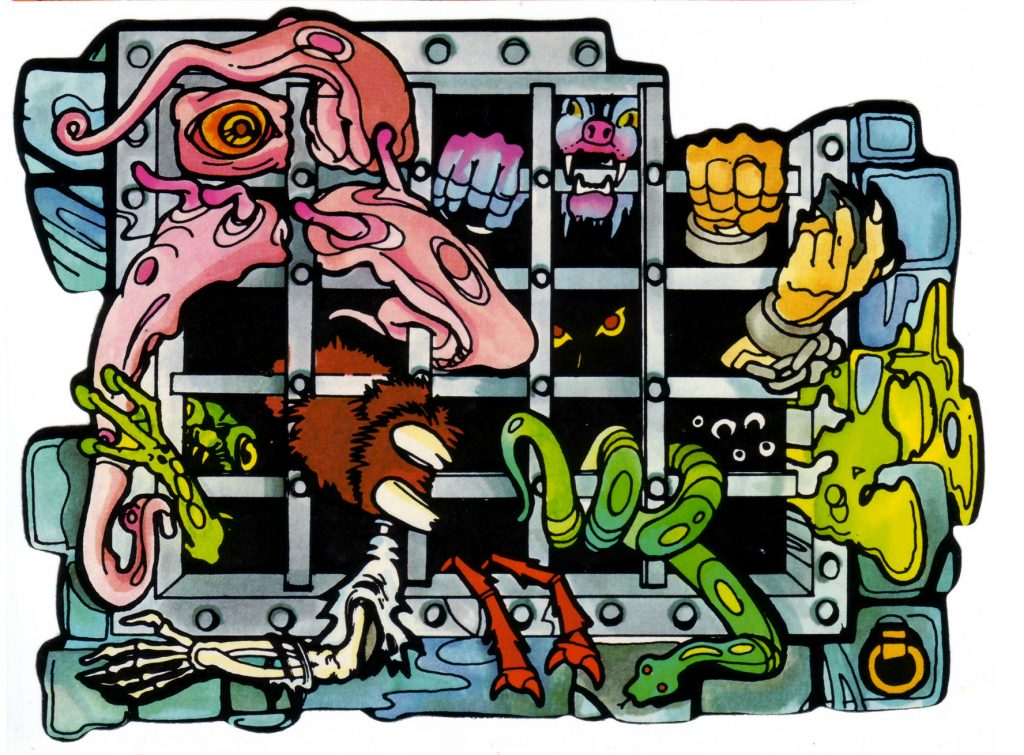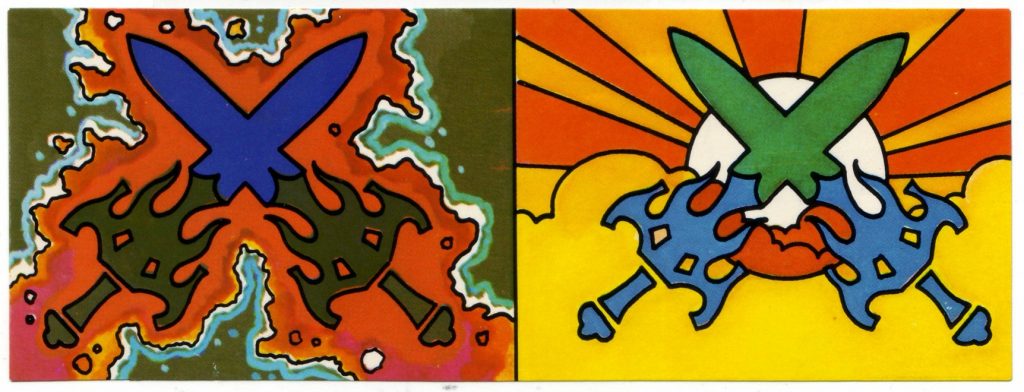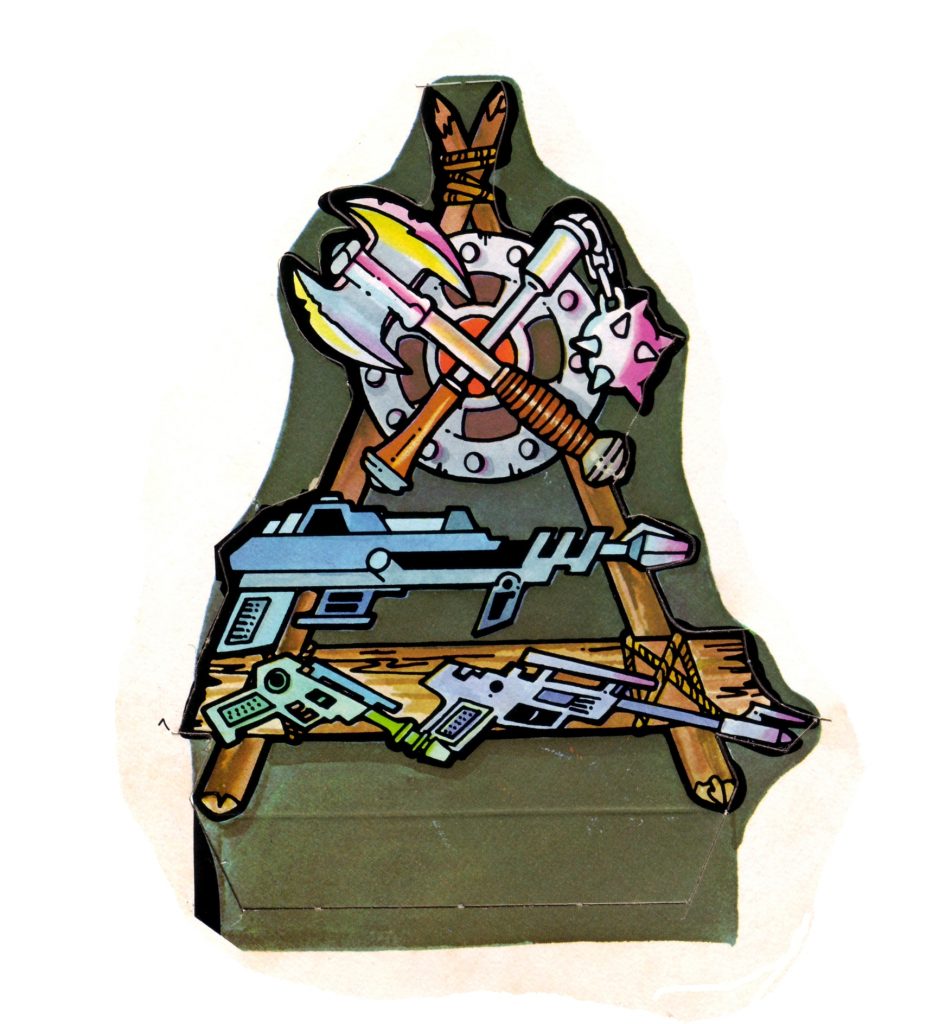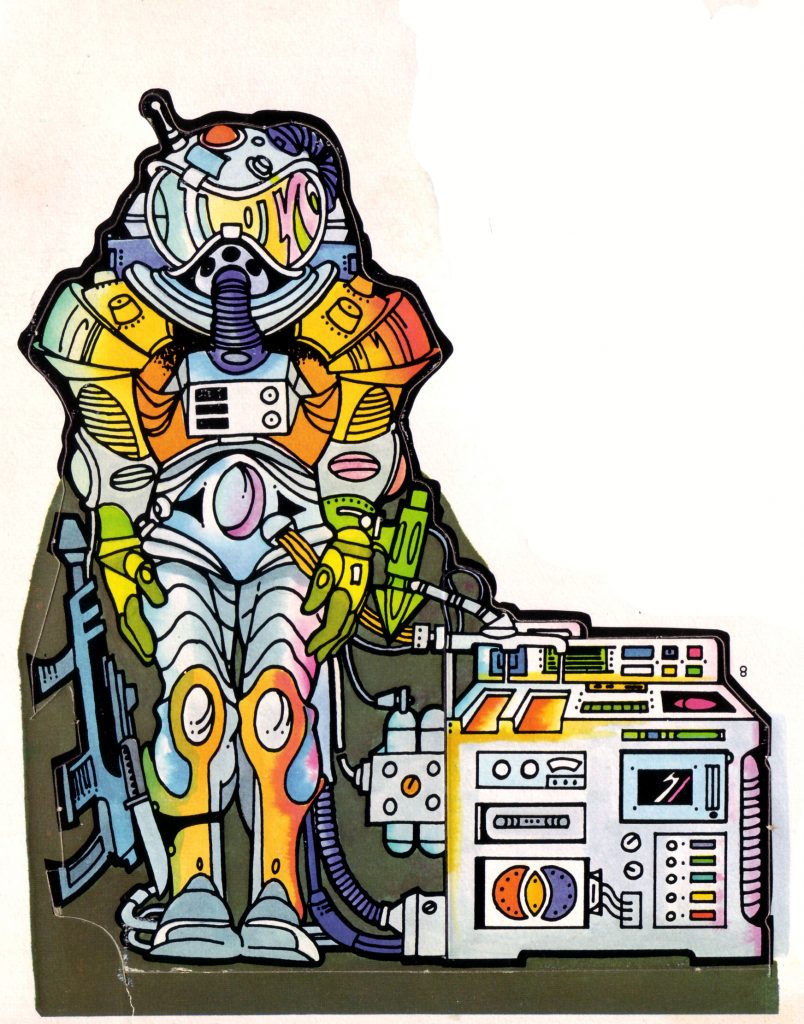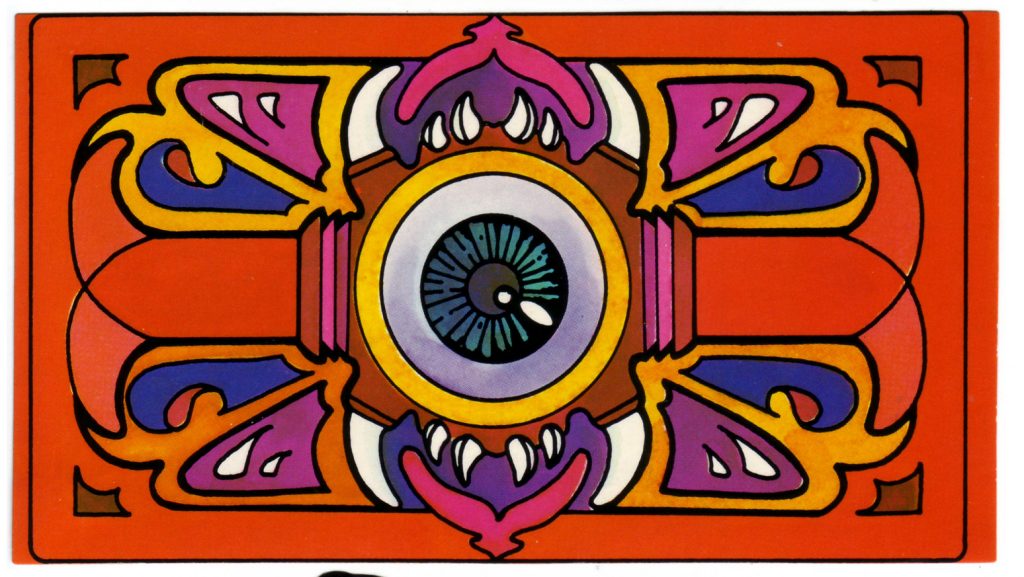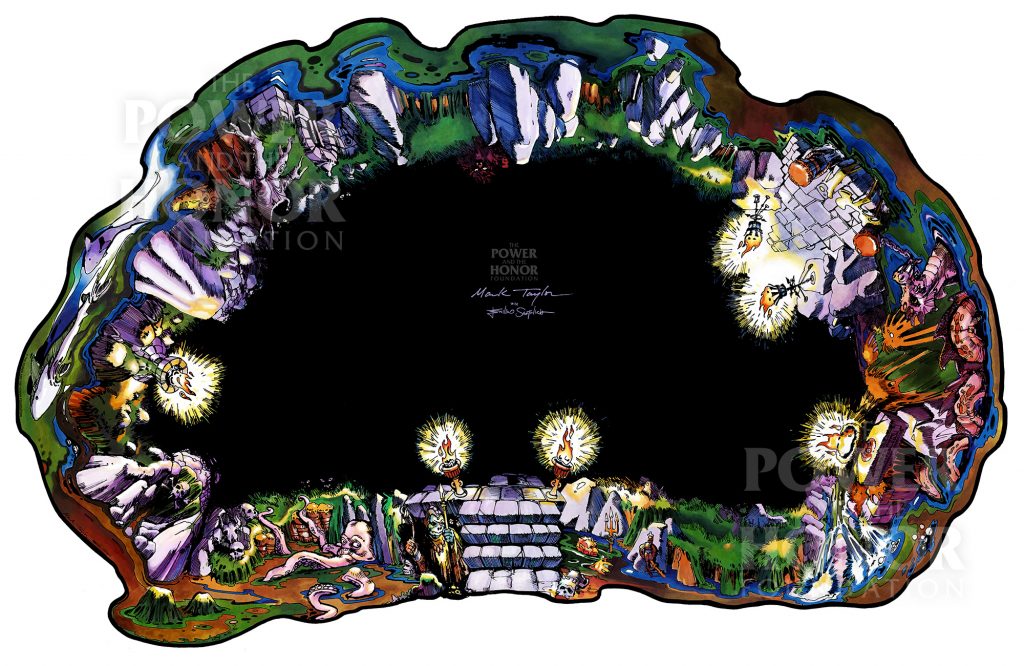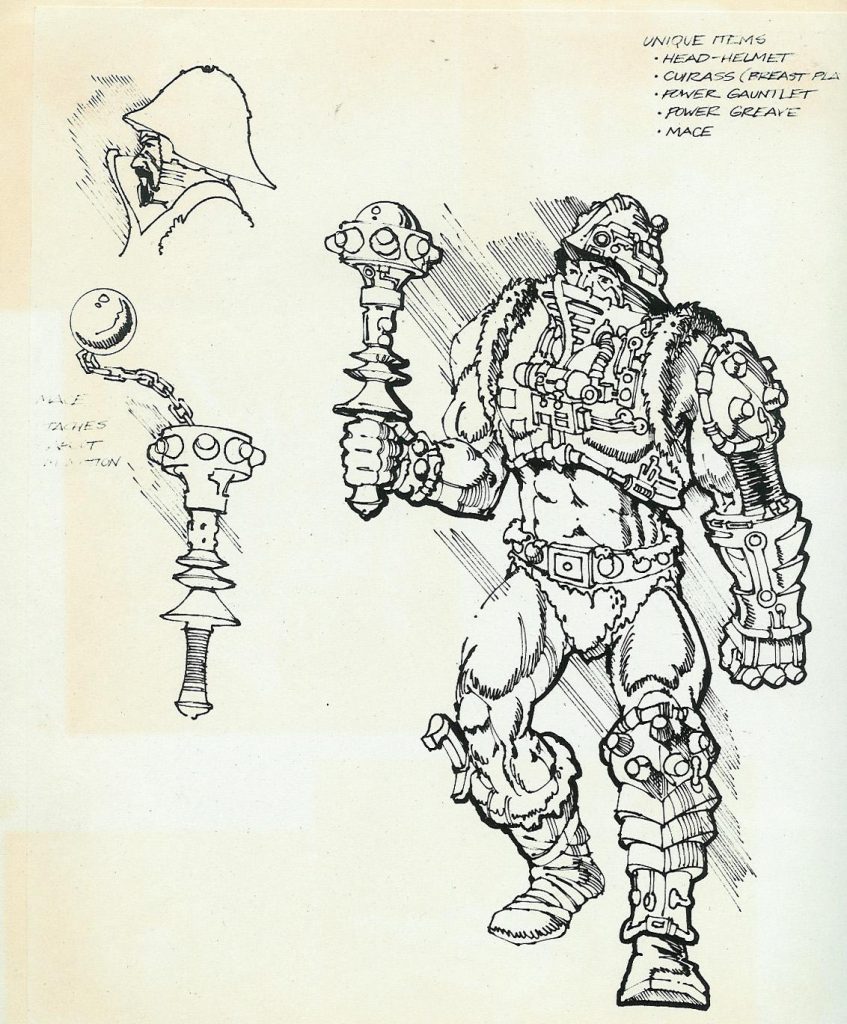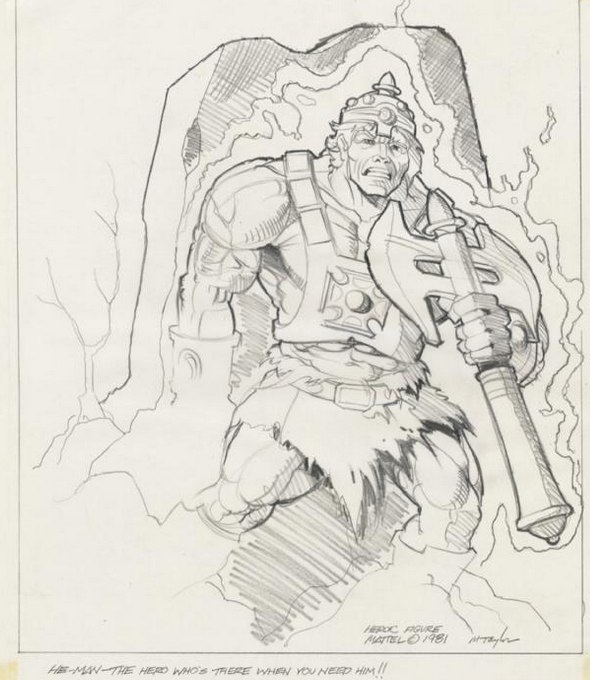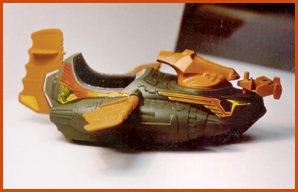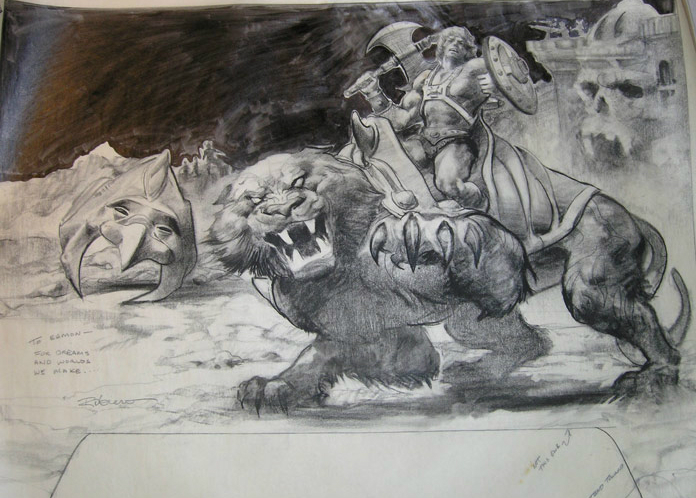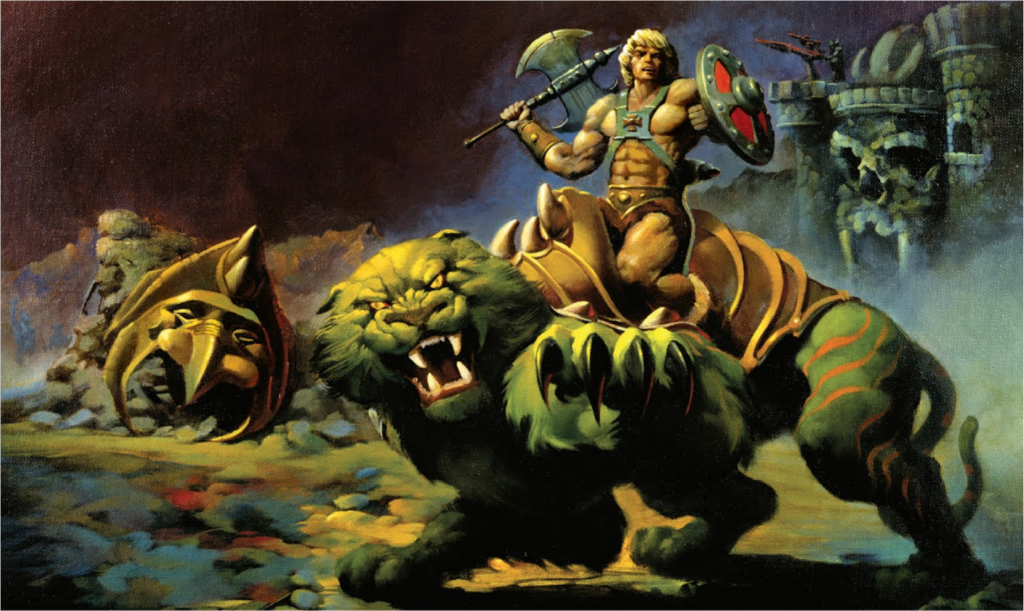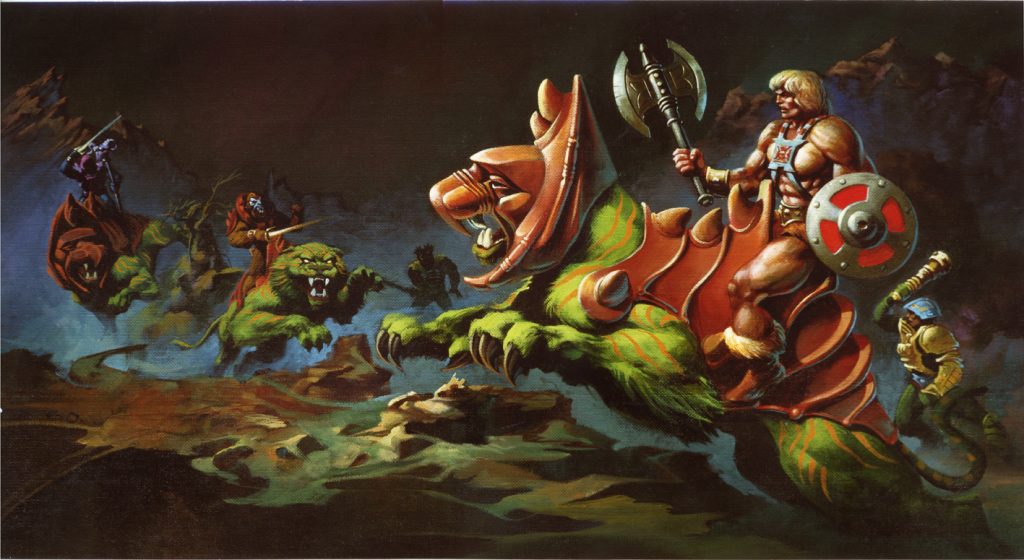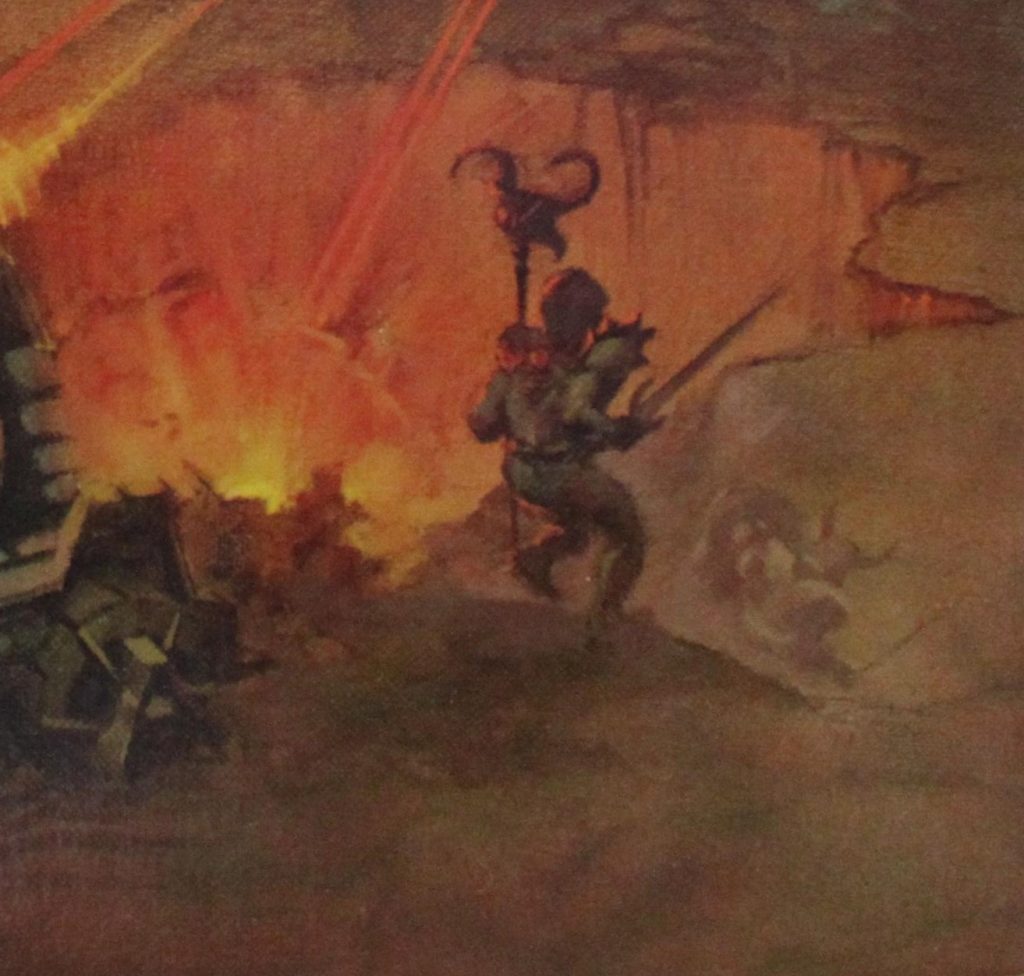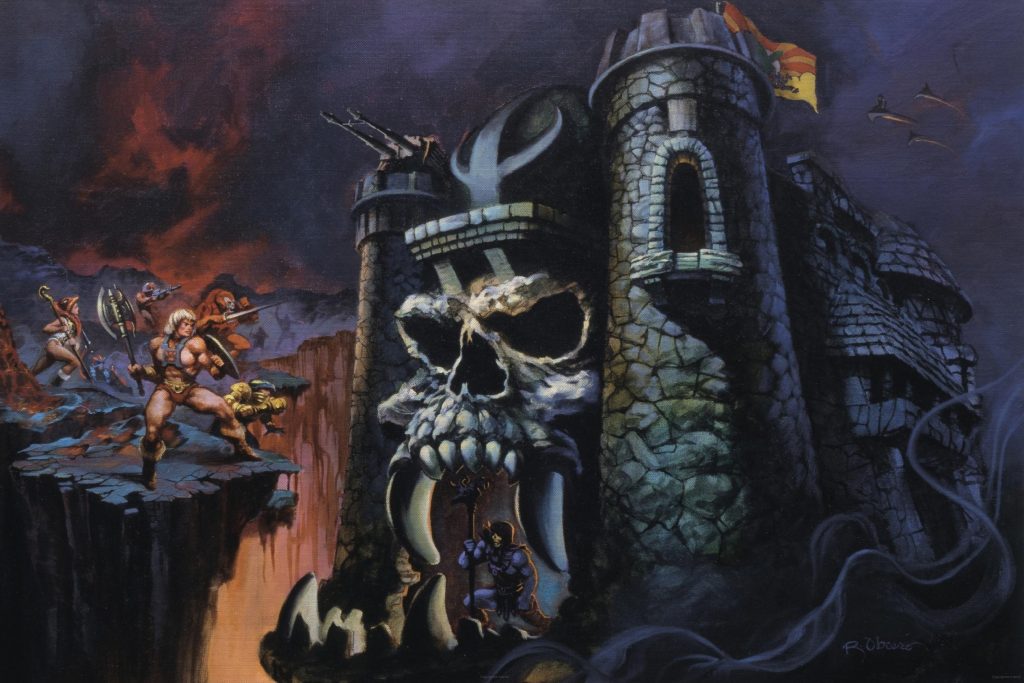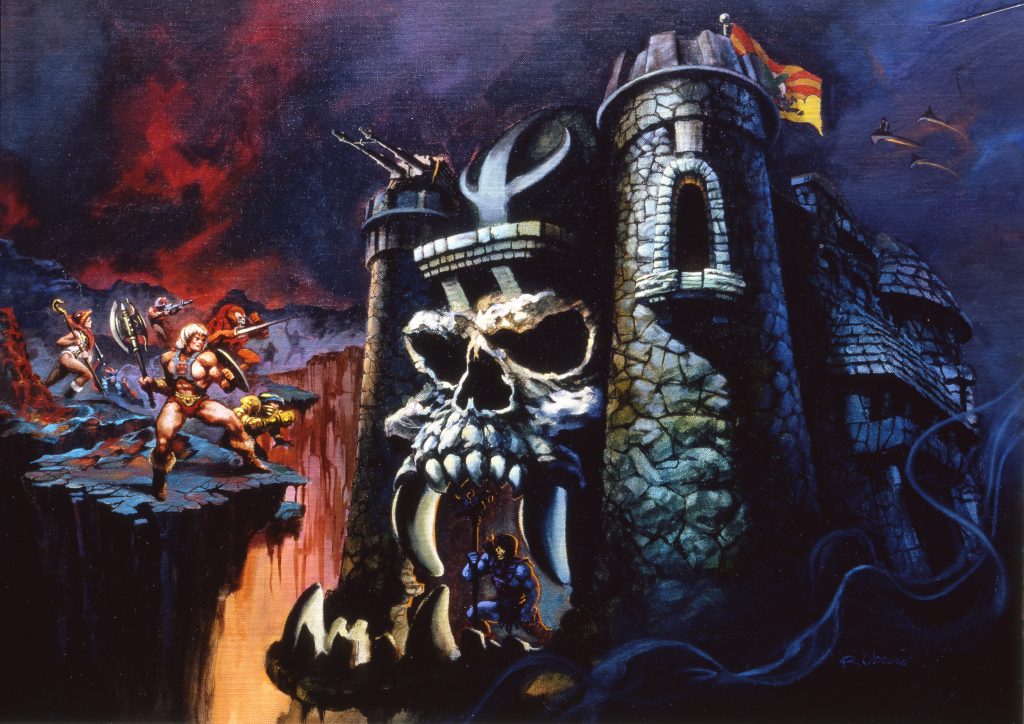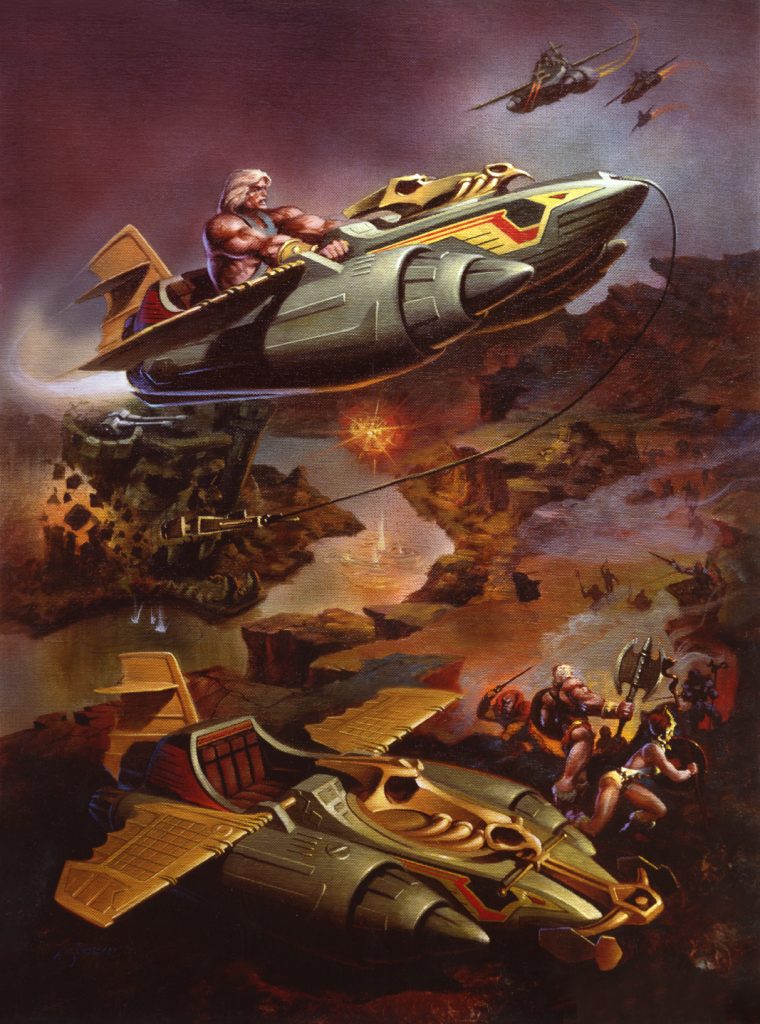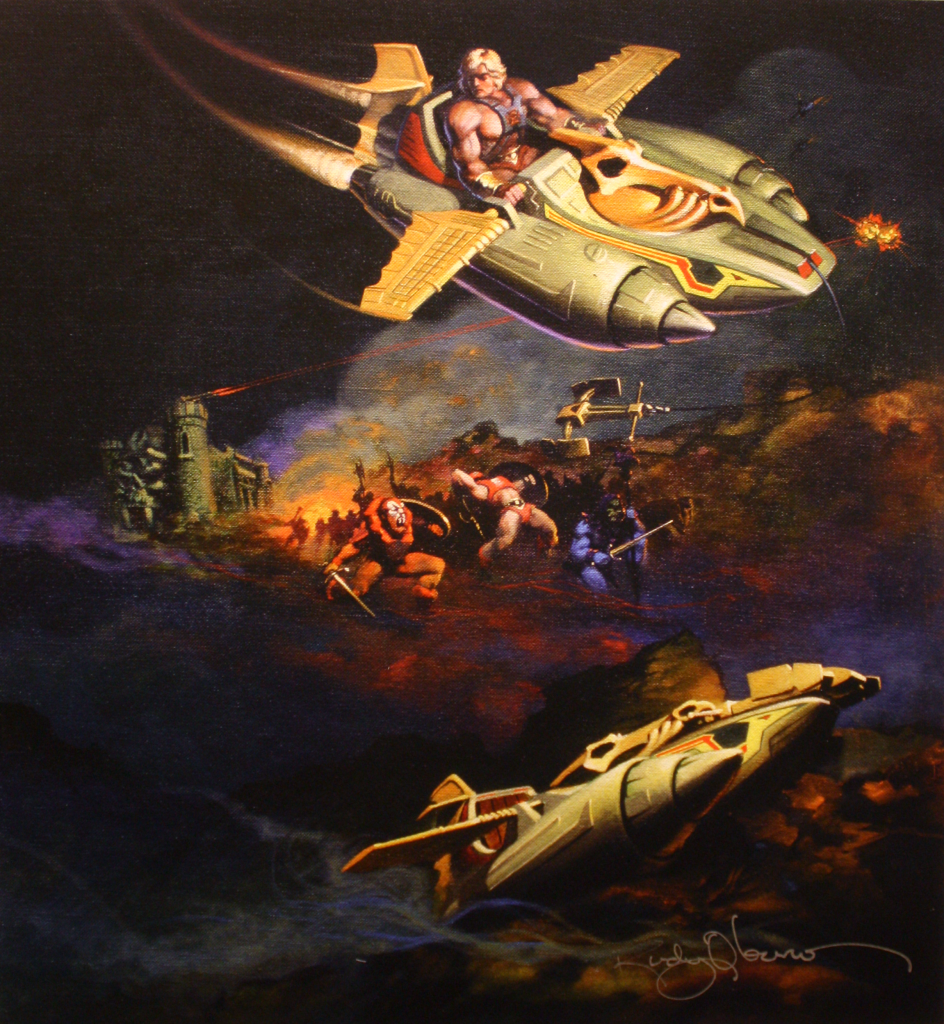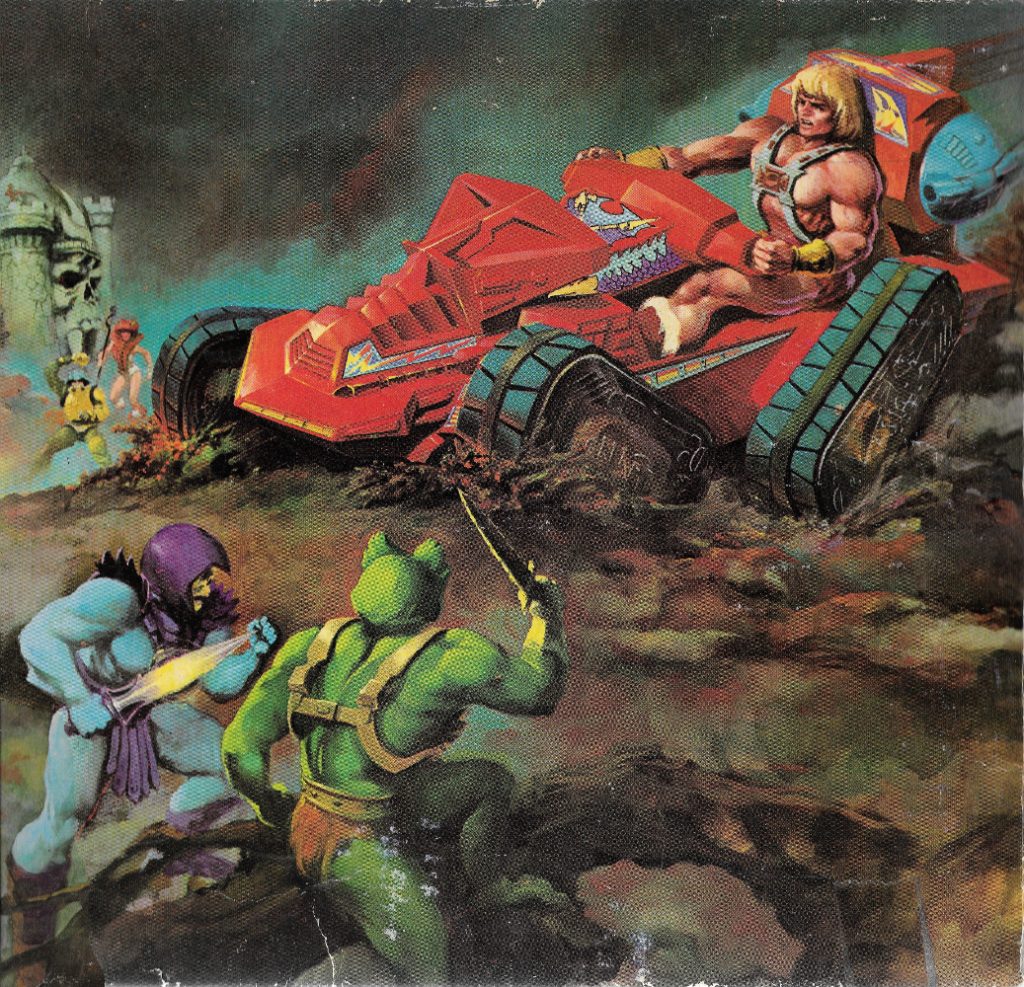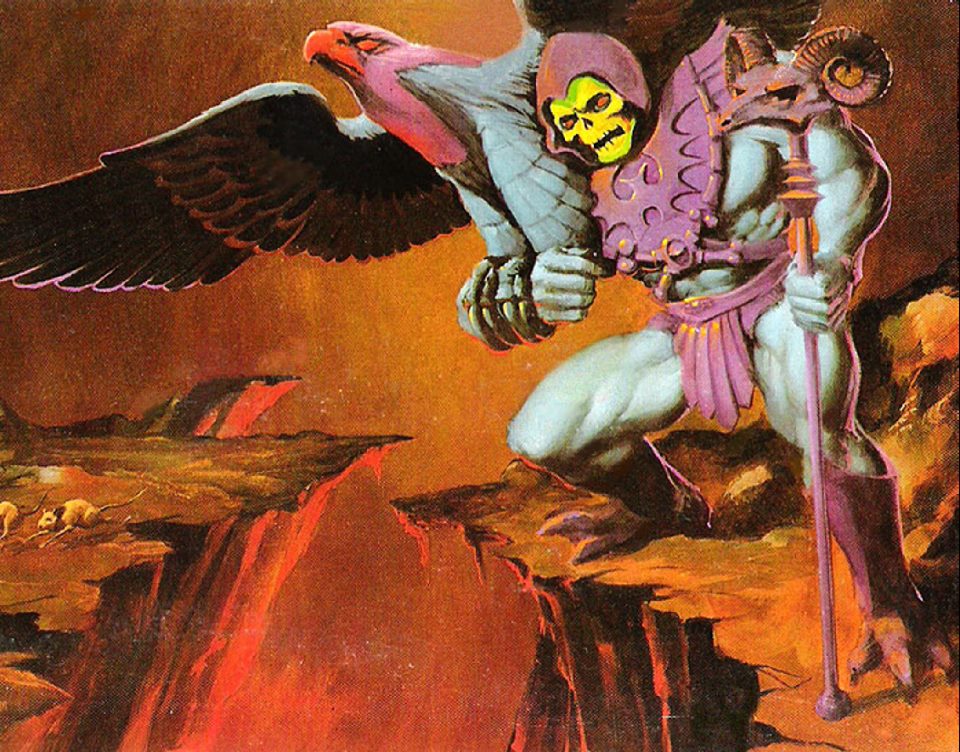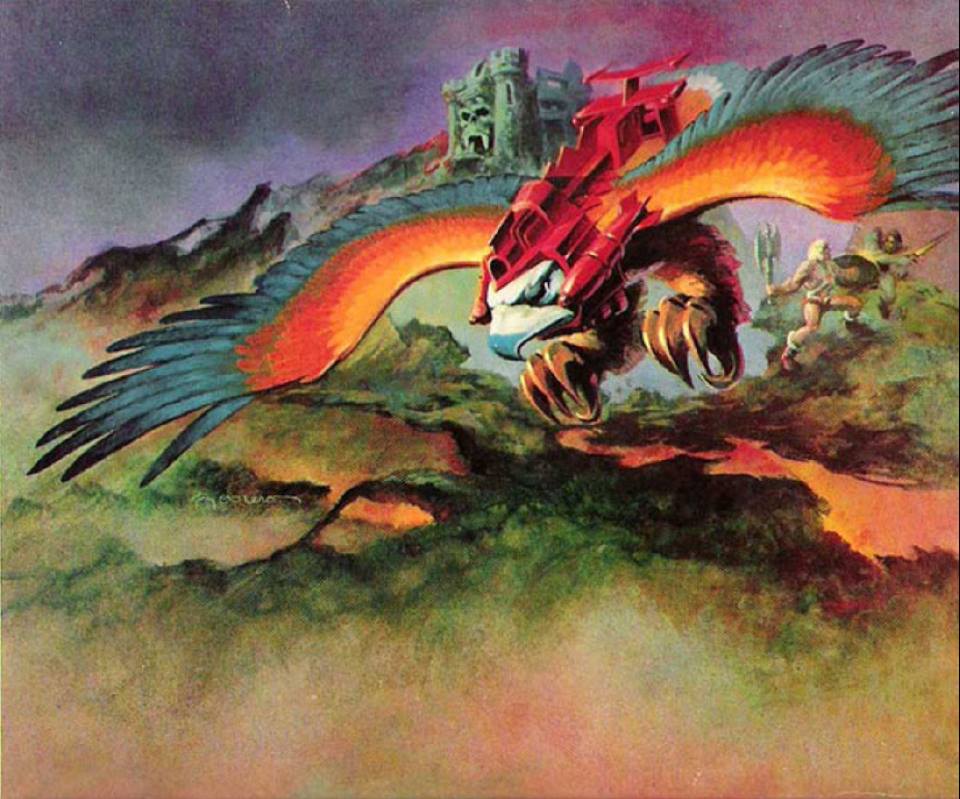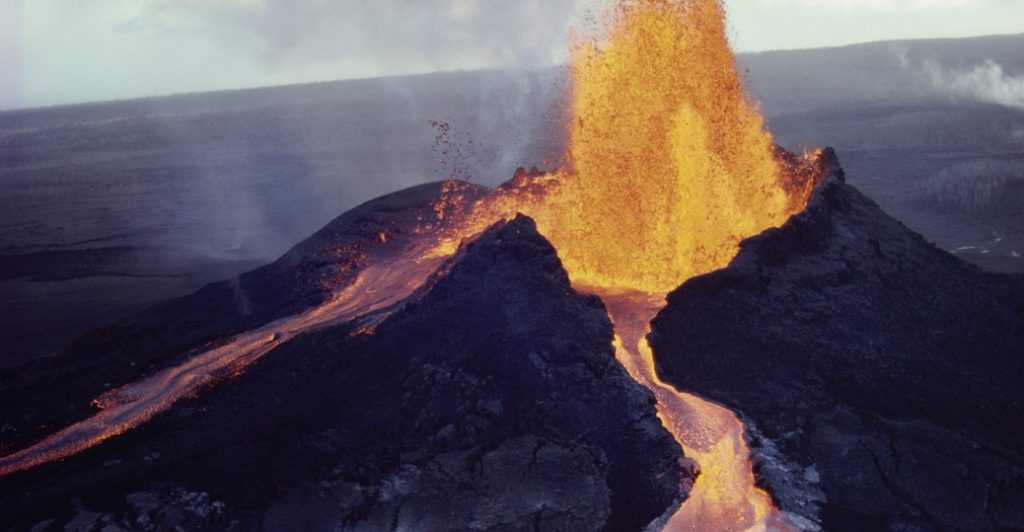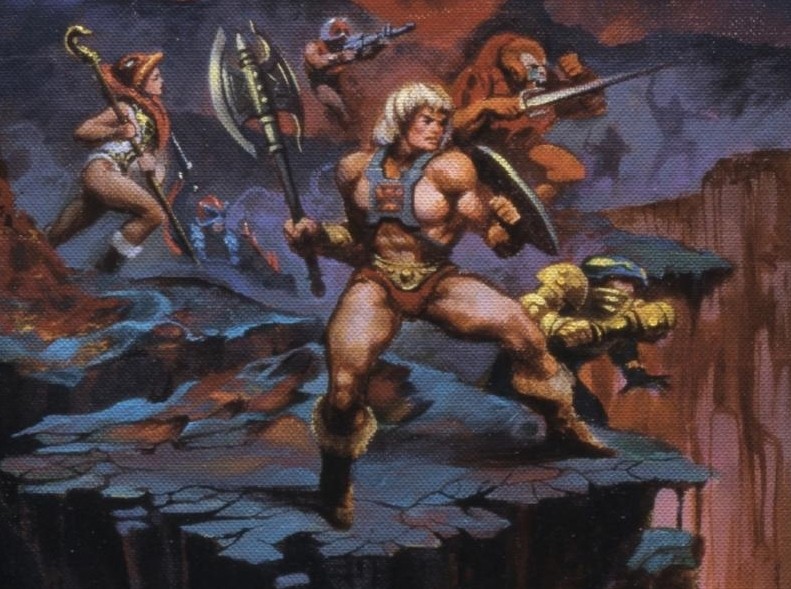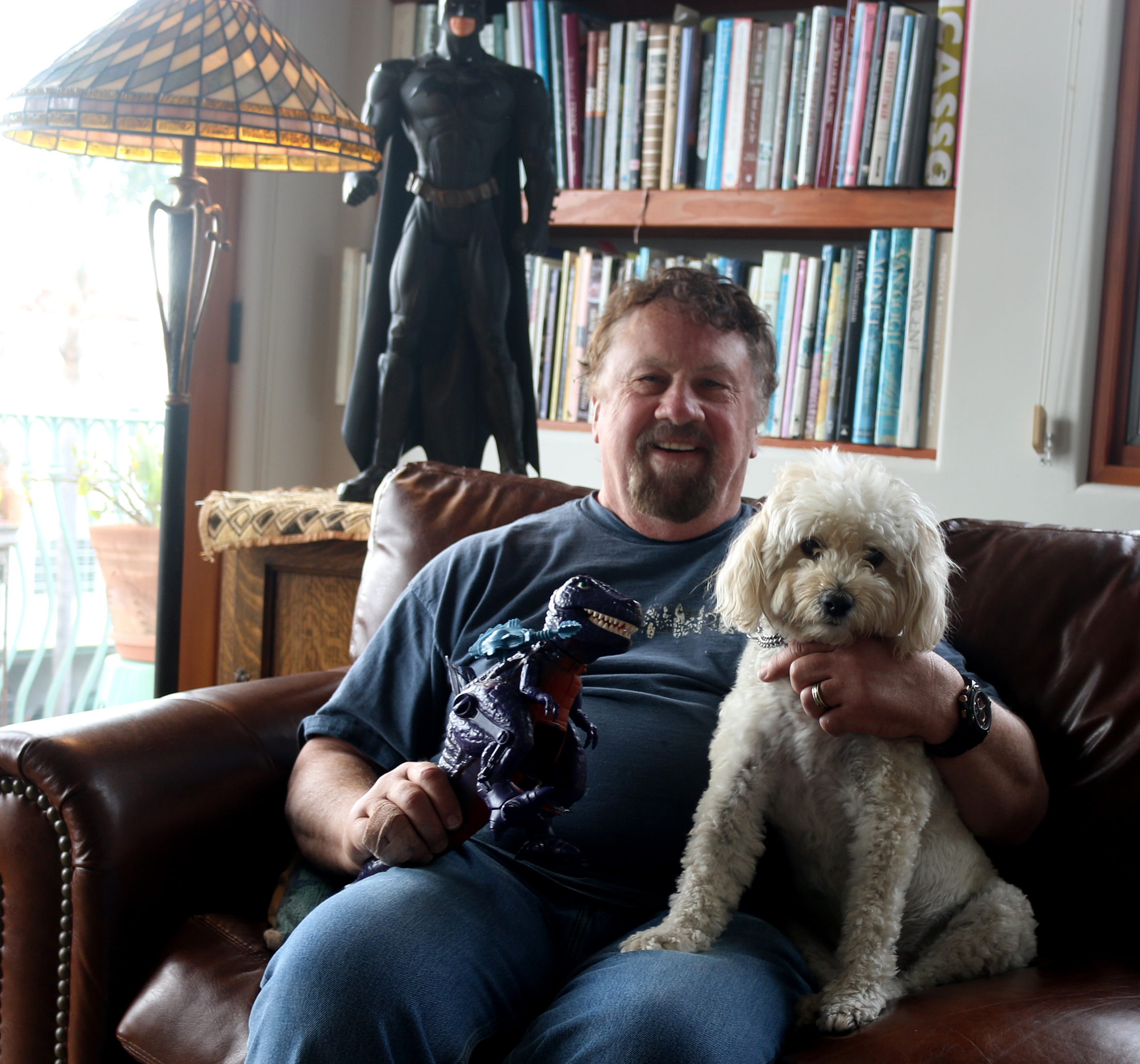
My interview with David Wolfram started off with some comments he made on my post about Battle Blade Skeletor. Our conversation continued from there by email, and turned into quite a fascinating interview.
David Wolfram: In the studio today, I took a break and stumbled on your blog. Nice to see that people are still interested in this stuff! Yes, I did design Battle Blade [Skeletor]. In fact I may have a copy of the original sketch. I don’t want to get too involved with this post, but the skull armor was something that came out of brainstorms for new MOTU segments. One one my proposals was mutant space pirates, with many of them wearing variants of skull armor. Once we started working on the new line, I adopted that for the Skeletors that I designed. The hair on BB was supposed to be a lot gnarlier, but we had to work with someone from the Barbie group, who couldn’t give me what I was looking for- they only did pretty. If you have any other burning questions, fire away!
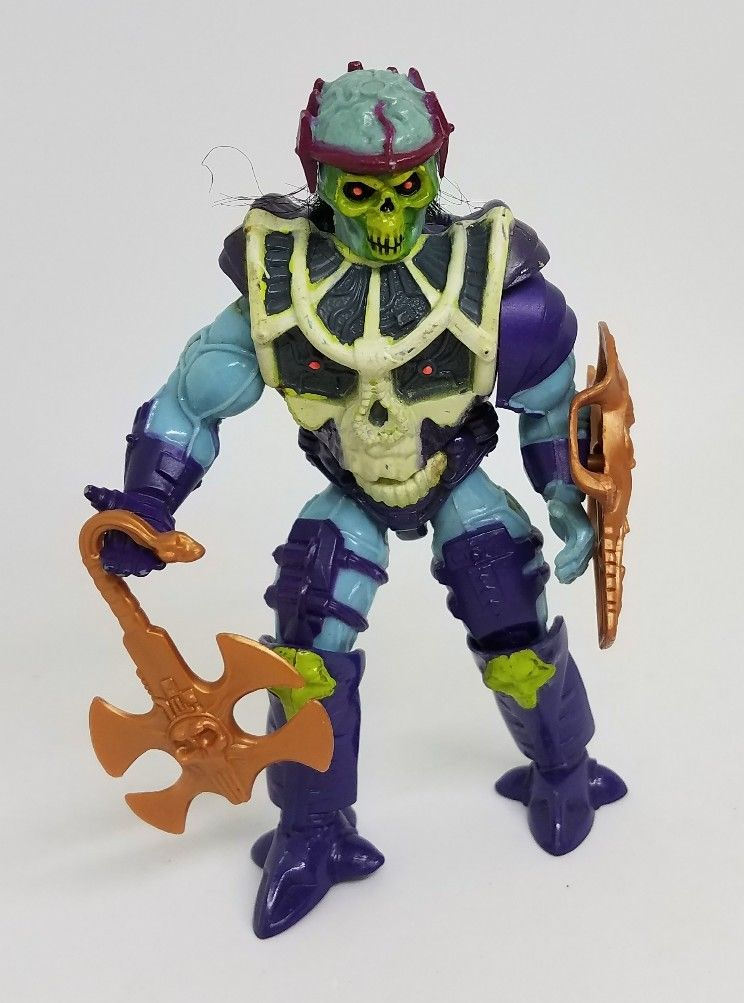
Battle Ram: Thank you for clarifying some points. I’d love to hear more about the mutant space pirates, and I’d also love to see your original sketch for the character if you can find it. In fact, I’ve interviewed several other designers/artists from Mattel (Ted Mayer, Mark Taylor, Martin Arriola, Rudy Obrero) and it would be an honor to feature you on the blog as well. Also curious what you had in mind for [Battle Blade Skeletor’s] hair!
I’d be especially interested in background information on everything you worked on both for the 1989 He-Man line and your work on the original Masters line.
DW: By the way, I happened to stumble on your blog while taking a break from getting materials ready for a painting class that I am teaching beginning this Monday. Occasionally I google myself to see which images of my art come up, and I saw the Skeletor images, and got into reading your blog. Since I was mentioned specifically, and that it was pretty current, I thought that I would weigh in. I find it interesting after all these years that it is still being discussed.
Here is my concept drawing for Tyrantisaurus Rex. It originally started out as a heroic vehicle, but marketing begrudgingly made the decision that it would be better suited for Skeletor.


DW: Here is a concept sketch for [Laser Light] Skeletor. I also came across a color sketch of [Battle Blade] Skeletor, done from my original sketch, but computer colored much afterward. Sadly, a lot of the original art and prototypes, which we were encouraged to archive, were destroyed when we moved from the original Hawthorne location, to the new headquarters in El Segundo. So much great history was lost, along with much of my best work.
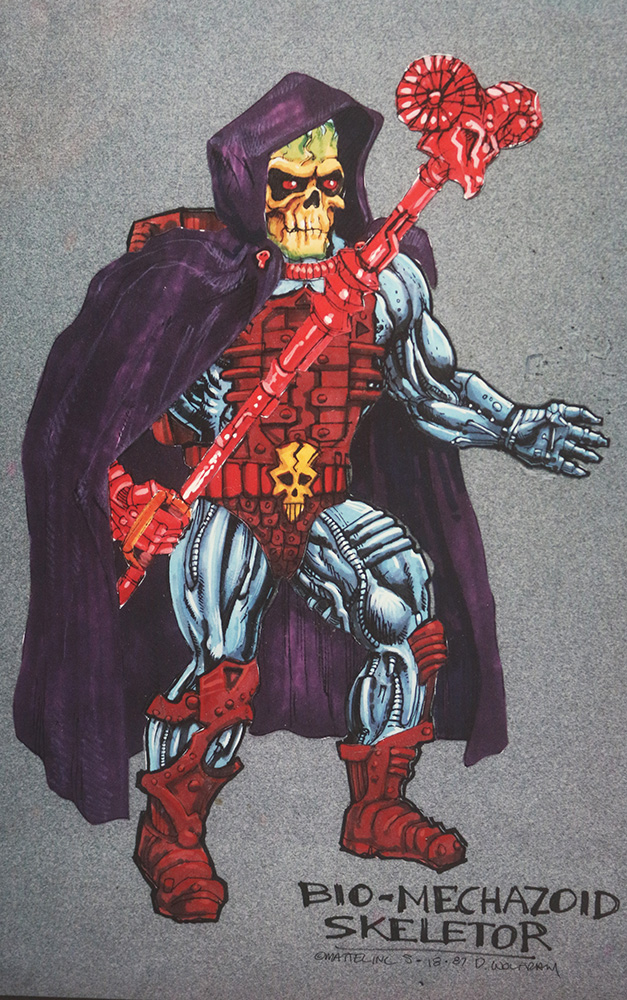
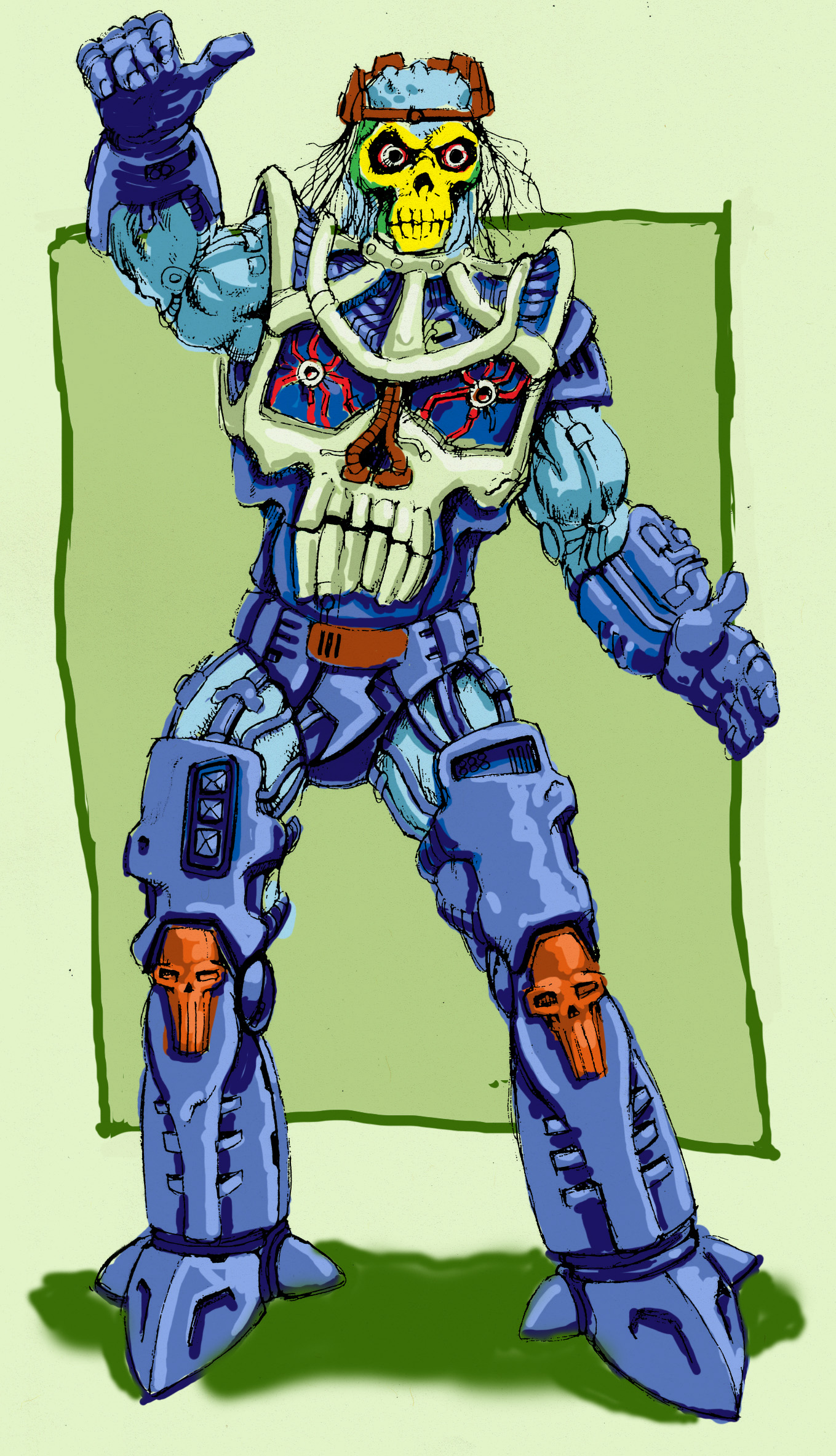
BR: What’s the story behind Laser Light Skeletor and Laser Power He-Man? Skeletor especially is radically different from previous versions, covered with wires and implants, with a very different and creepy face. What was inspiring that look?
DW: While MOTU was tanking domestically, it was still going strong internationally, which was a year behind in the product cycle. This was done to have something new for that market. LISA (the light transmitting plastic) was a fairly new “shiny toy” for the designers at the time, so that was the hook for that segment. I think Martin did the final He-Man design. I frankly don’t remember for what purpose I did that awful He-Man illustration for, but I’m sure that it was after the fact (and most likely rushed), and I’m sorry that it has survived.
I did the design for Skeletor. My working name was Bio-Mechazoid Skeletor, and it was inspired by influences like Giger, and the Gibson novel, Neuromancer. Sadly, like many of our products of the time, engineering dictated what we had to design around, and in this case it was a huge battery box. Try as we might to design around it, it made the torso oversized, so to compensate, we had to give the legs a little more bend, leading to our new working name: “Take a Dump Skeletor”.

DW: The skull armor [for Battle Blade Skeletor] was something that came out of brainstorms of new MOTU segments. One one my proposals was mutant space pirates, with many of them wearing variants of skull armor. Once we started working on the new line, I adopted that for the Skeletors that I designed. The hair on BB was supposed to be a lot gnarlier, but we had to work with someone from the Barbie group, who couldn’t give me what I was looking for- they only did pretty.
BR: How did you come to work on the original Masters of the Universe line at Mattel?
DW: I was in my last term at Art Center College of Design, and had a fairly light schedule, so I checked into freelance opportunities offered through the job placement department at AC (I can’t remember exactly what they were called), and saw an opportunity to work on a project for Mattel.
I went to Mattel, and met with Martin Arriola to discuss the project, which happened to be a dinosaur project for MOTU. Coincidentally, at my drawing board I had a small black and white TV, and as I was working on my school projects, I would always watch the afternoon MOTU cartoons, so I knew the property, plus I had a lifelong interest in dinosaurs, so I jumped at the opportunity. I worked on this project on a freelance basis until graduation, then I started working in-house at Mattel as a temp, which is the back door way that many people end up working there.

DW: Shortly thereafter, I was hired full time. I ended up staying for 22 years, and worked on four different He-Man lines while I was there. Martin and I were not the prototypical Mattel designers, coming from an illustration, not product design background, which ended up being a nice niche in dealing with characters, and storyline-driven products.
Early on, Martin told me all that I needed to know about product design is understanding how parts come out of a tool, which ended up being true for the most part.
BR: Correct me if I’m wrong. From the original MOTU line, you designed Laser Power He-Man, Laser Light Skeletor, Mosquitor and Tyrantisaurus Rex. Is that right? What am I leaving out?
DW: To set the record straight, I worked as the primary designer on Tyrantisaurus, Bionatops, Snake Face, Ninjor, King Randor, Scare Glow, Clamp Champ, and Laser Light Skeletor. I also was the designer on Gigantosaur, which actually went through three different iterations. Additionally, I worked on bits and pieces of other items, like designing the weapon for the heroic giant [Tytus], the revised drawing and weapon for Mosquitor (that you credited me for). I did a little bit on Eternia (but I can’t remember what), the movie characters, etc.
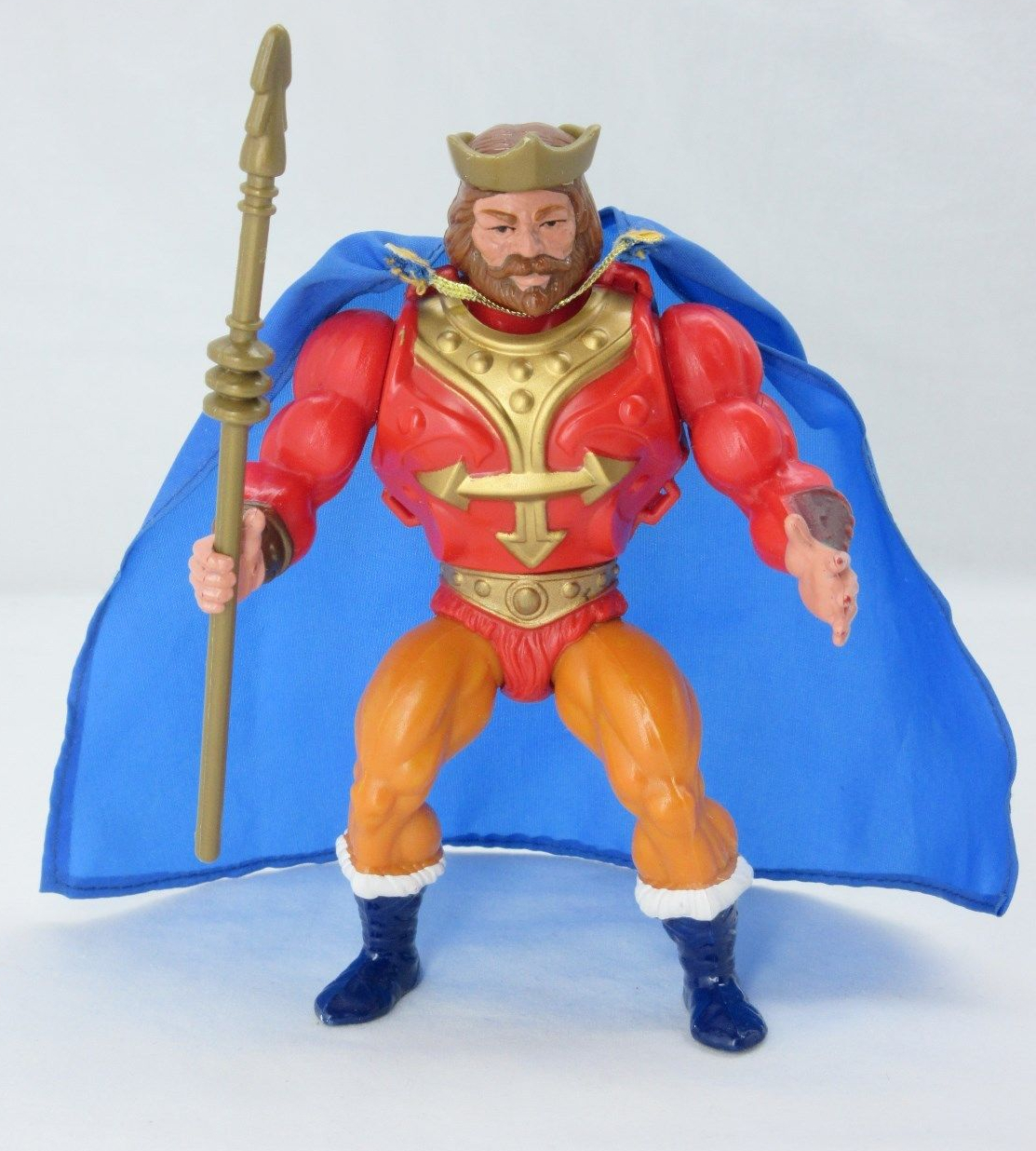
BR: I’ve been trying to put together a list of all the “New Adventures” toys that you designed or contributed to. Here’s what I’ve put together so far: 1989 Skeletor, Disks of Doom Skeletor, Battle Blade Skeletor, Doomcopter, Optikk, Hoove, Sagitar, Nordor. I’ve heard you did most of the other evil characters.
DW: I guess you can add Slushhead (my name Kalamarri), Quakke, The guy with the whip [Flogg], Lizorr, Butthead (from a Mark Taylor concept), Staghorn (From a Dave McElroy concept), and I’m sure a few more.The evil characters were always the most fun to design.

BR: Laser Light Skeletor seems to have been the predecessor to the 1989 “New Adventures” Skeletor design – many of the details are quite similar, albeit with a differently colored costume, plus a helmet. Can you talk about that evolution?
DW: Laser light Skeletor and the corresponding He-Man were both done for the international markets. The domestic MOTU line was essentially dead after the 1986 (or maybe 1987, it is hard to remember precisely). Pre-Toy Fair, which was a Mattel-only event held in August in Scottsdale for many years. I remember the marketing person saying that no domestic buyers even wanted to go in the gallery.
However, the international markets were a couple of years behind in their product cycle, so they wanted a few pieces of new news. It just so happens that one of the new MOTU segments we had been looking at was a “Power Crystal” segment with crystals “powering” vehicles, interacting with playsets, etc. The He-man and Skeletor were borrowed from that segment.
You will see a copy of one of my concept drawings, for Bio-Mechazoid Skeletor, where I started to use the mutated bio mechanical detail. I don’t know why, but it looks like the staff was drawn by Martin Arriola, and added.
The first Skeletor of the New Adventures was designed by Mark Dicamillo, who had just become the group manager, replacing Roger Sweet, after a particularly acrimonious meeting. Mark adopted the styling from Laser Light, since it really hadn’t been seen in the US, and everybody seemed to like it.
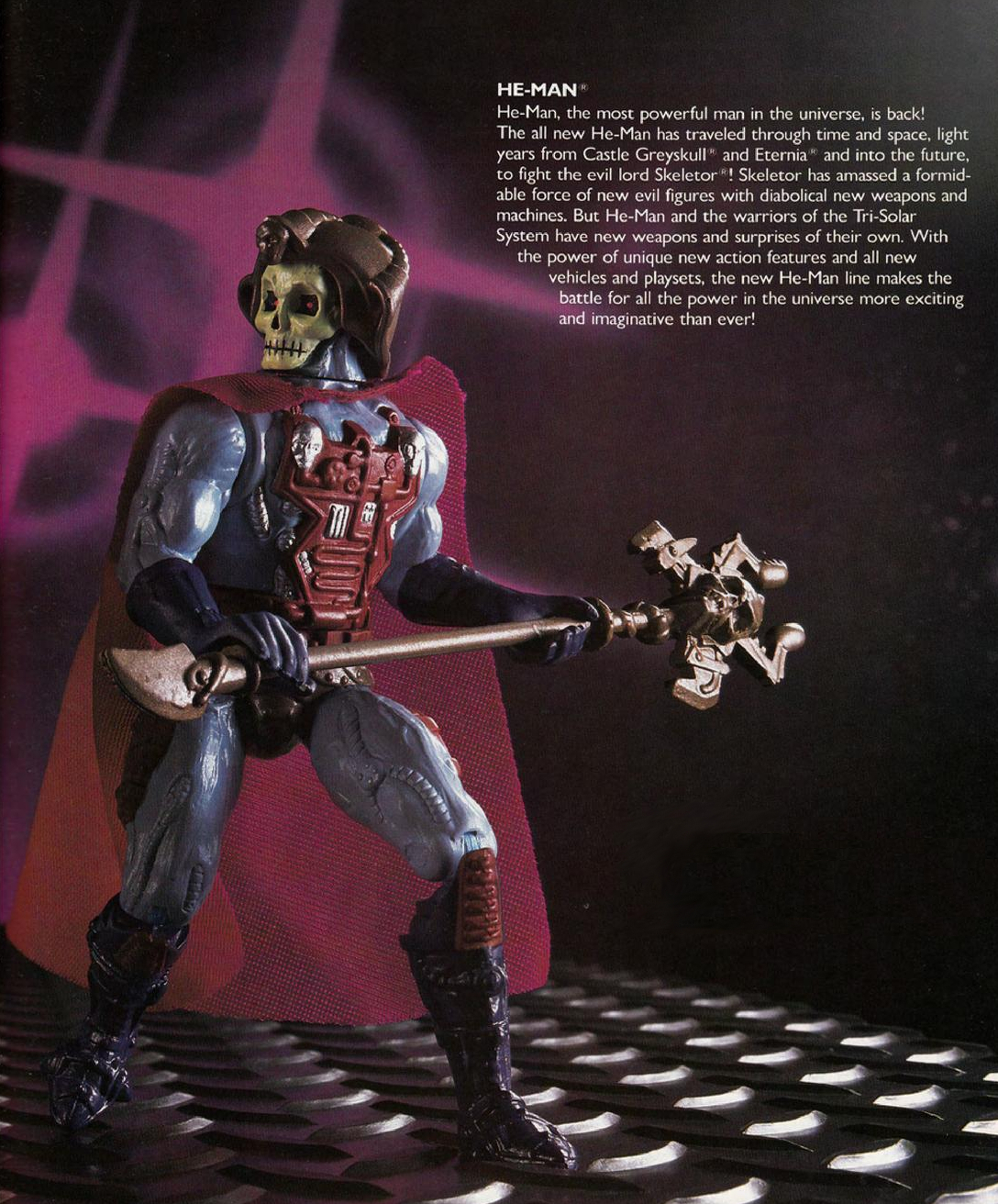
BR: Regarding the first version of New Adventures Skeletor, there was some concept art (drawn by you) included in the Dark Horse Art of He-Man book. I assume then that Mark DiCamillo put a slight redesign together based on your Laser Light design, and then you drew up a final version?
DW: Always interesting to see something I’ve done, and completely forgot about! I would say your thoughts are pretty much what happened. We probably needed to have a consistent look to the presentation boards.
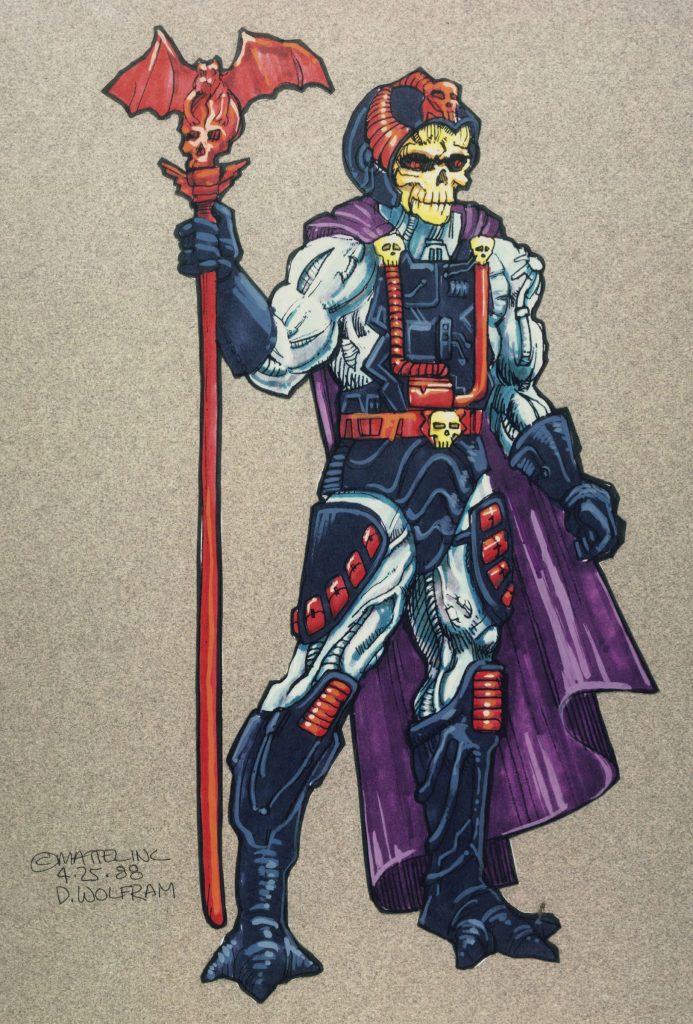
BR: You mentioned that Battle Blade Skeletor’s armor came from your proposed sub-line of mutant space pirates, I assume that Disks of Doom Skeletor comes from the same pool of designs. Can you talk about that figure? I love the “glowing” eyes feature on that one.
DW: That was one of my favorite figures in that line. Mattel was very gun-shy (no pun intended) about using projectiles. By using the discs, we got around all the safety concerns. I also liked that a child could cock the figure, and then launch the disc using the trigger. It also gave me the opportunity to use the styling that I had been playing around with, and as a twofer I also got the LISA glowing eyes.


BR: Regarding Scare Glow, I’ve always thought that was a pretty ingenious concept, despite the fact that it reused mostly existing parts. Did any concept art survive for that? What inspired you there?
DW: Early on in my Mattel career , I was given the task to do four figures using minimal new tooling. They were Scareglow Skeletor, King Randor, Ninjor, and Clamp Champ. The four characters had already been conceived of and the the concepts sold in, so all I had to do was to make it happen.
Part of that was going through the tooling banks to find parts to add to the appearance of the figures. I did get new tooling for Clamp Champ’s weapon, and for four heads. Hal Faulkner, one of our good outside sculpting vendors, sculpted the heads.
Ninjor was a dead ringer for Lee Van Cleef, who had done some karate or kung fu based show around that time, so we had to change that.
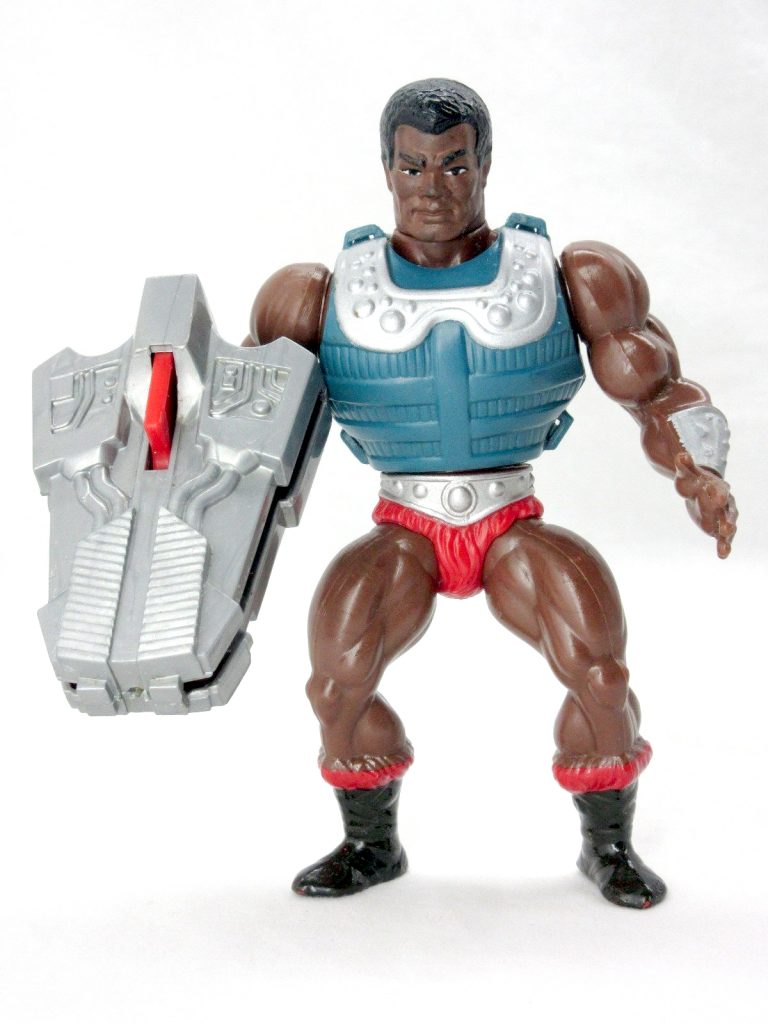

DW: Scare Glow was the first Skeletor without a molded hood, and the paint scheme was pretty easy to figure out. It had a fair amount of luminescence, so I was pretty happy with it, and I got to learn how to work with soft goods for the first time. There is an adage in the toy industry, that “once you add glow-in-the dark, it’s a pretty good clue that the line is dead”, and it pretty much was.


BR: When you mentioned Scare Glow, you referred to him as Scare Glow Skeletor. Was he considered a Skeletor variant, then? There has been some debate among fans about that for many years.
DW: As I mentioned before, the concept was pre-sold, I just executed. In my mind, It was never actually Skeletor, but some ghostly construct that used his likeness, and as I recall on the back of the package or somewhere else, that was supported.
[Note: in the 1987 Style Guide it says: Skeletor conjured up this spirit in his own image to frighten travelers on the pathways of Eternia. Scare Glow is invisible during the daylight, but glows at night.]
DW: About Skeletor: As I previously stated, I was a student at Art Center (1982-85) before I started working at Mattel. Sometime early on, one of my fellow students brought in a Skeletor figure, and I thought it was brilliantly conceived. I had read at one point about Jungian symbology, and the skull motif is used commonly, as in warnings for poisons etc., to connote death or danger, something even a small child could imagine as the ultimate manifestation of evil. I think right about that time I started watching the show while at home working on my projects, which definitely helped me hit the ground running at Mattel.

DW: Here are a few sketches of some of my New Adventures characters. Unfortunately, as I may have mentioned before, all my finished presentation boards have been lost. As designers, we were encouraged to send all of our finished drawings and prototypes, etc off to our archives dept, with the provision that we could always retrieve art as needed. As we were getting ready to make the move over to El Segundo, we got word that all of the items in the Archives were going to be disposed of. Despite protests from all the designers , that is exactly what happened, and no one retrieved anything. What a treasure trove that was! I’m happy that I still have some things from that period to share, but it sadly it isn’t the fancy stuff.
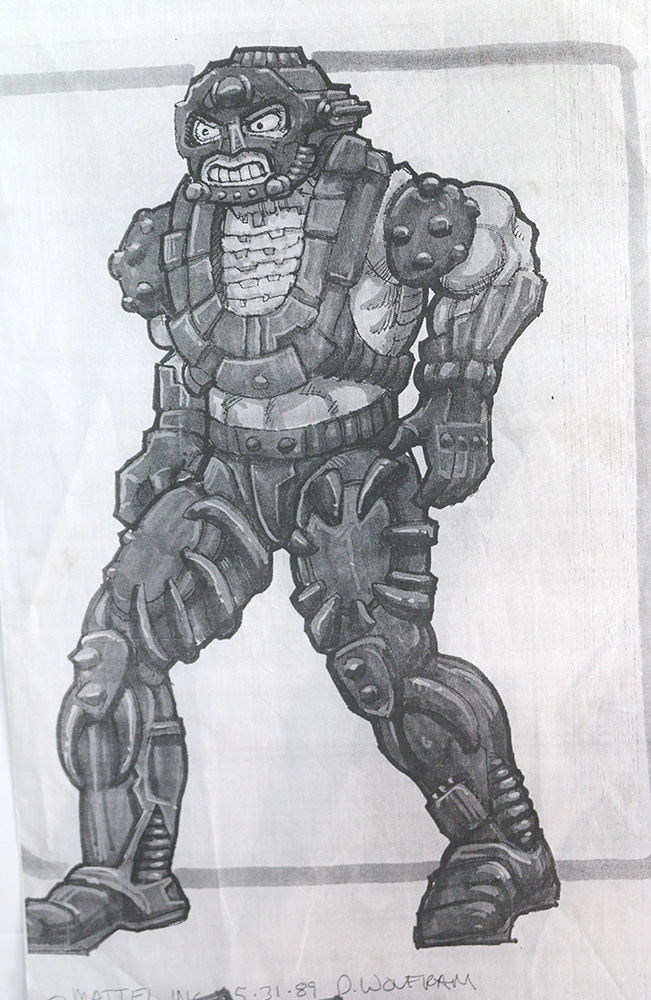
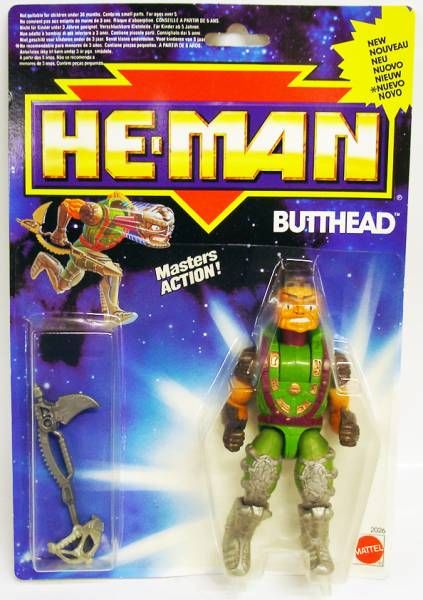

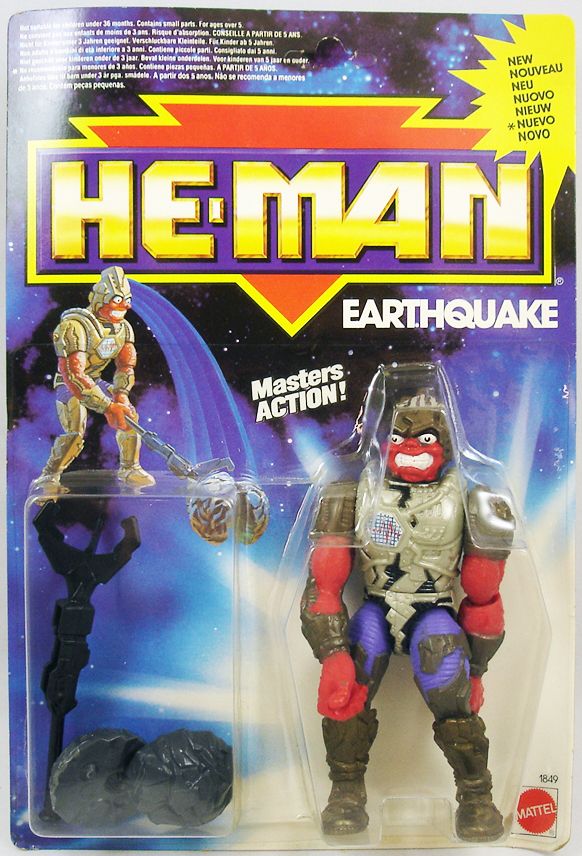
BR: For Lizorr (a.k.a. Lizard Warrior), you wrote on the concept drawing that he would have color changing skin. I assume the idea was to use similar material that was used in some of the GI Joe figures like Zartan, that would change with exposure to light or heat? The actual figure didn’t have that. Was it cut for cost reasons?
DW: That was an early prelim sketch. Cost probably knocked that thought out real soon.

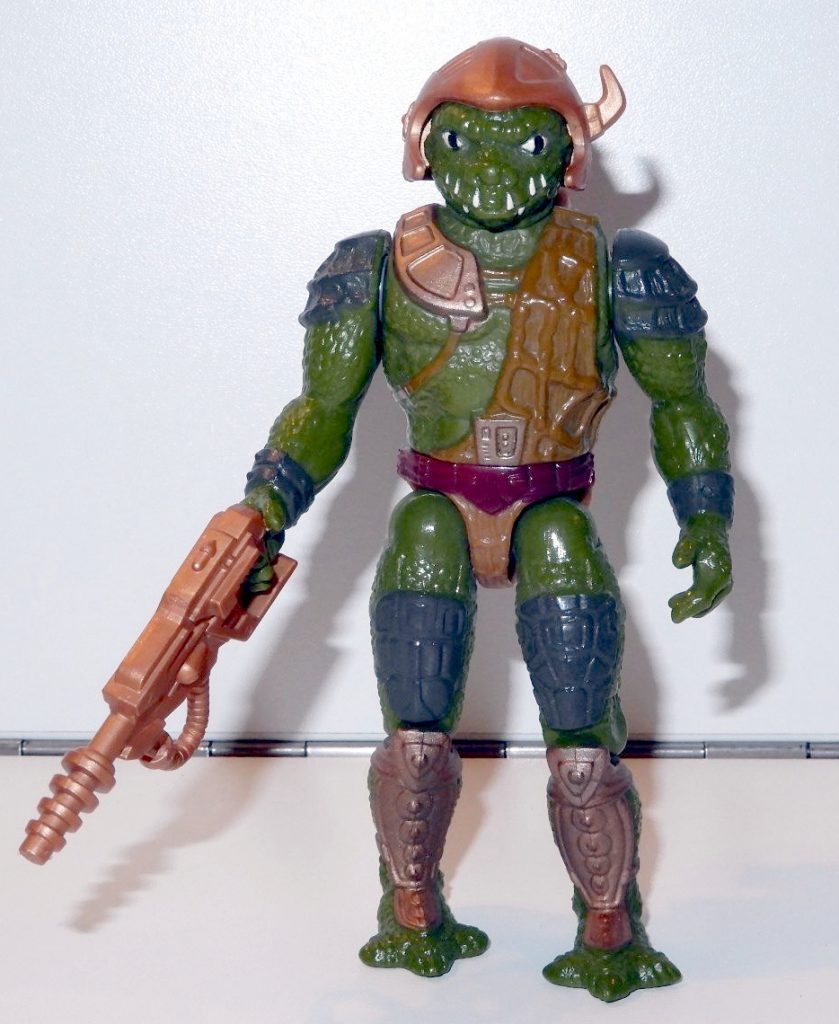
DW: Tharkus [Sagitar] was designed to be an equine homage to ERB’s Barsoomian Tharks, but unfortunately the sculptor assigned was primarily a preschool sculptor, and after some bad engineering moves it sort of moved down a different path than I envisioned.


DW: Even though I didn’t design it, here is a picture of a Darius figure. He was supposed to swing a big battle mace. It worked great in preliminary models, which used metal gears, but once the gears were molded in ABS plastic they would bind up and freeze. No amount of coaxing from engineering could change that, so even though it was fully tooled up, the toy was dropped.

DW: Oddly enough, one original that I did hang onto, probably since it wasn’t product-related, was the drawing I did defining the New Adventures world. Mark Dicamillo and I sat down for a few hours brainstorming, and then I drew this up, which was sent to the writers and animators for the show.
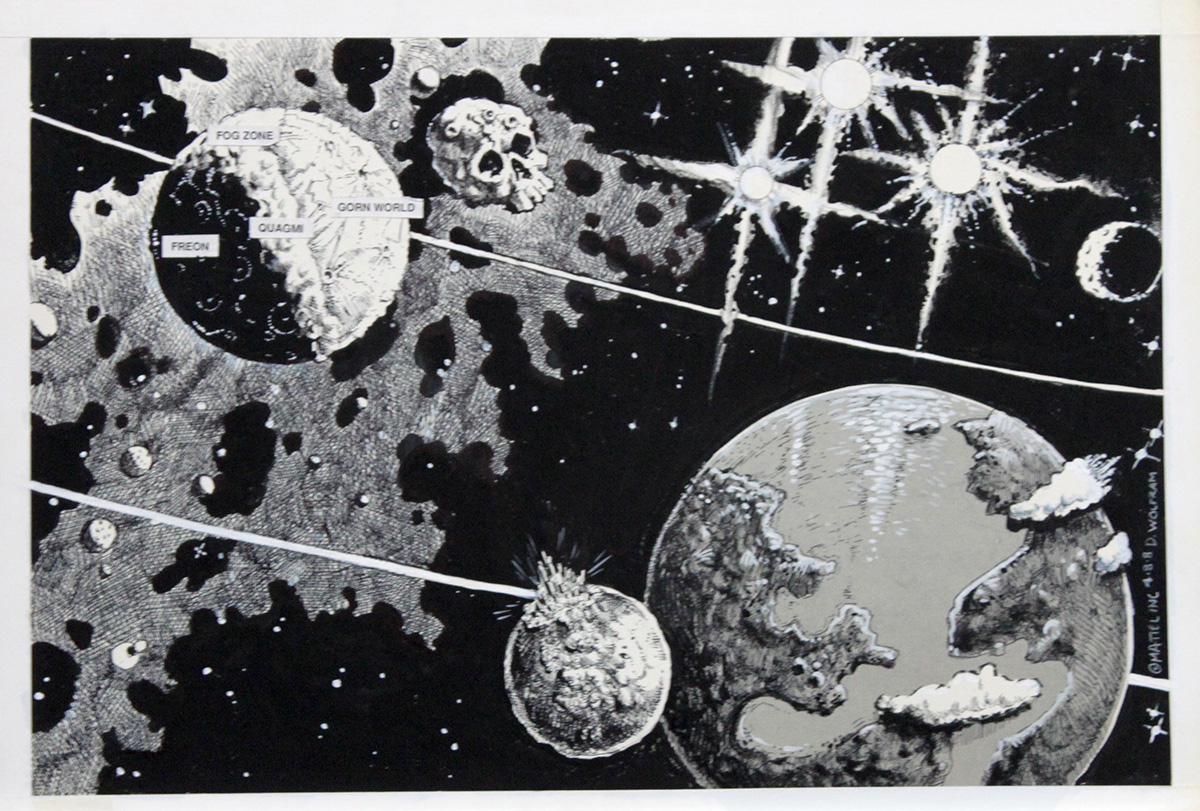
[Note: the above image was also referenced in several New Adventures minicomics, such as The New Adventure (below), illustrated by Errol McCarthy.]
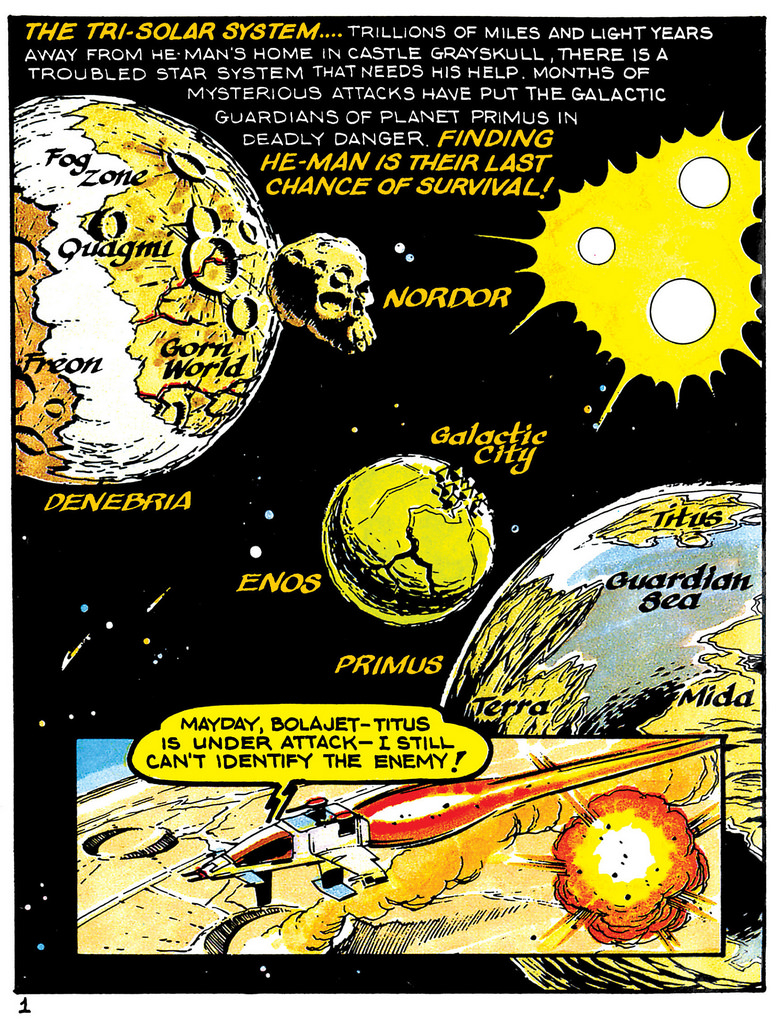
DW: I also came across another Skeletor image that apparently never went anywhere.

DW: Also included: the only MOTU mutant space pirate sketch that I have, as well as a later one that showed the skull-themed pirate armor that ended up in Disks of Doom Skeletor.
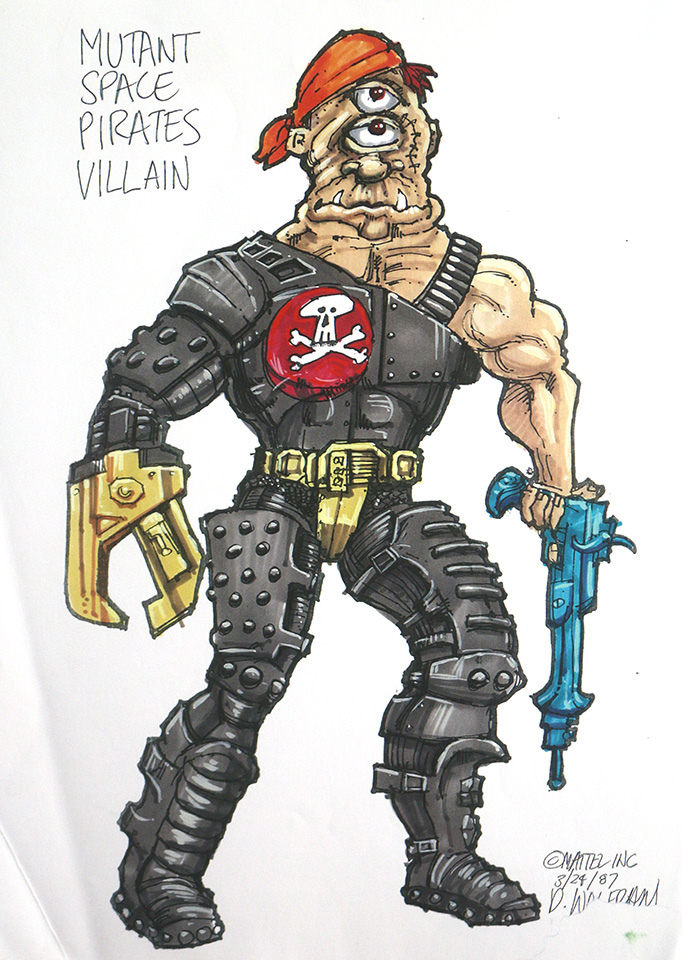
Unused Space Pirate concept by David Wolfram.
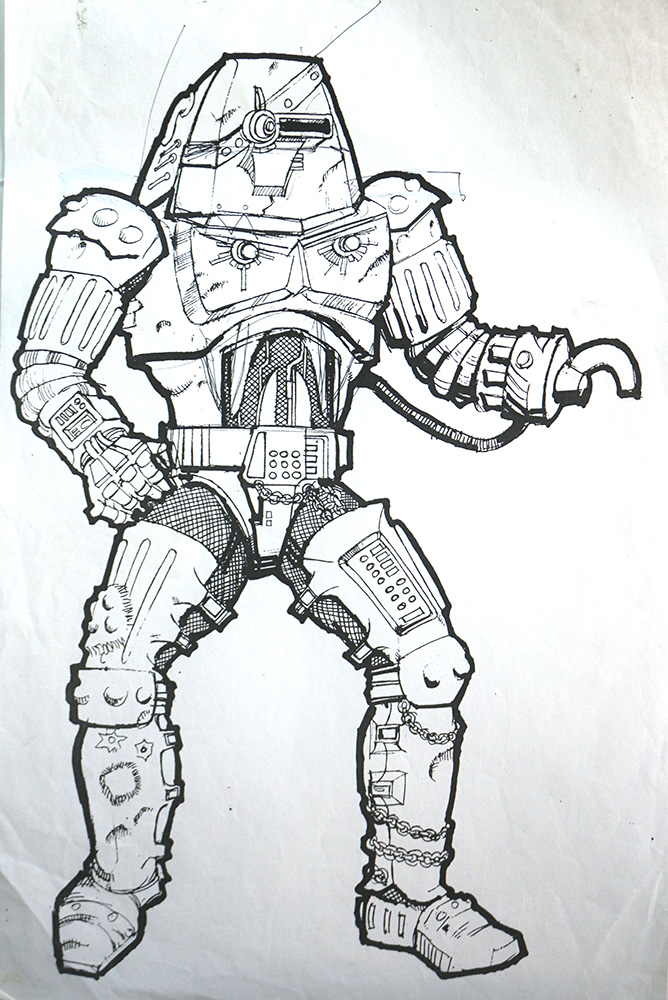
Note that much of the leg designs here were eventually used for Optikk, while the upper body and helmet were used on Disks of Doom Skeletor.
BR: Doomcopter is a fascinating vehicle. I assume the Giger influence is at play there again? It seems like the line started off with some very typical “Star Trek” type vehicles (like the Shuttle Pod, Starship Eternia, etc), but then the next vehicles were much wilder (for example. Doomcopter and Battle Bird). Was there a conscious effort to shift the tone?
DW: Lots of Giger influence there. I have this one partial sketch. As you can see on both this product as well as Nordor, the skull motif is an an important design element. I really didn’t do a lot of vehicles. I did an early sketch of a walking tank like vehicle which ended up becoming Terrorclaw and the Shuttle Pod. The vehicles ended up being designed by three different people: Dave McElroy, Steve Fouke, and Miller Johnson. Oh, and the Starship was designed by Terry Choi.
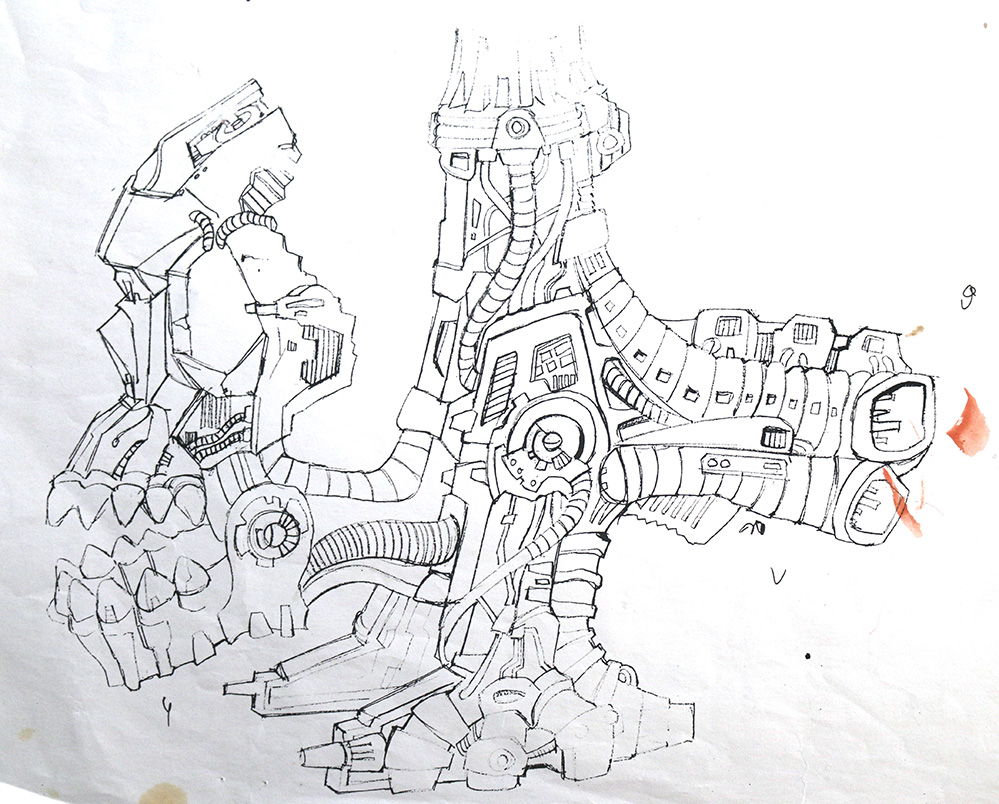
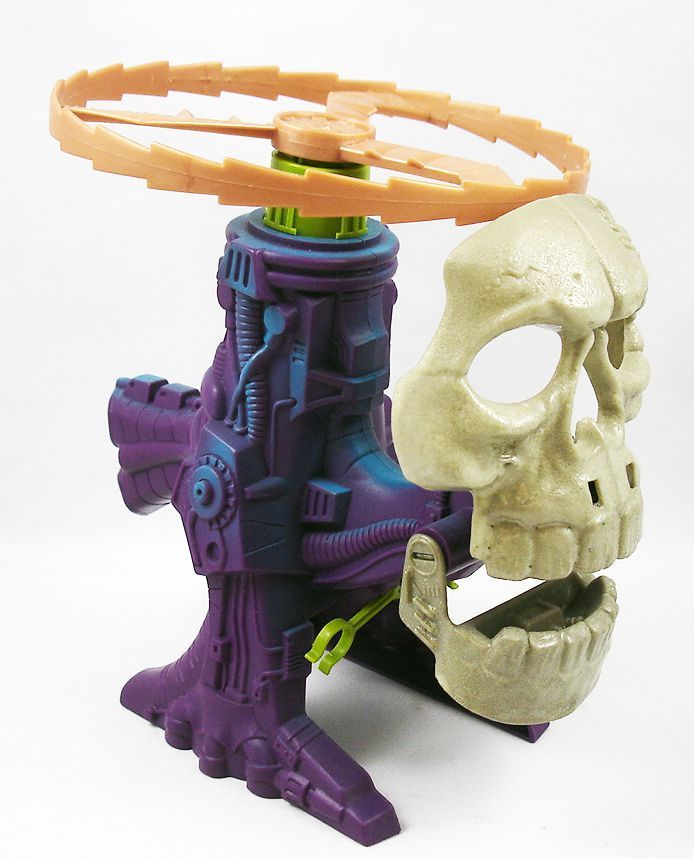
BR: Optikk is, I think, probably most people’s favorite figure from the New Adventures of He-Man line. Can you talk a bit about your process with him? He’s a very sharp looking design, head to toe in dark metallic brass color, and that creepy giant eye peering out from the suit.
DW: It was always one of my favorites. He was originally something that I did for a MOTU theme testing board, and he made it into the first wave of evil New Adventures figures.
As designers, we had been asking for quite a while for some nice molded metallics, and we finally got them. I know I used a lot of that dark bronze and copper over the next few years. We actually had a fairly limited palette to work from based on the Munsell color system, and unfortunately many of the colors were too ‘pretty’ for my design ethic, so I ended up using the same colors over and over again. To get any new colors into the system took forever, and took an act of congress. Later, as we started working on more licensed properties where we had to used specific colors from a style guide, that system was abandoned.

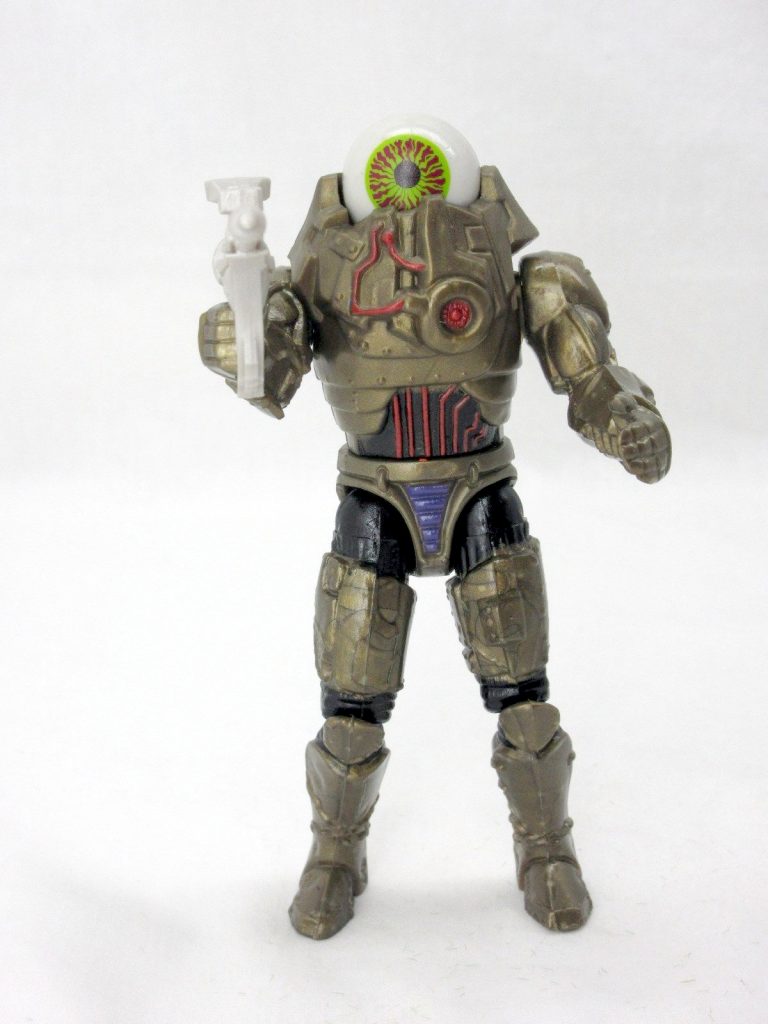
DW: In the early sketch of Optikk, the thought was that his eye would be removable and go into the forks of the staff. We were looking at making the eye like the compasses that went on car dashboards at that time, but I imagine that approach ended up being too expensive, so we went with the simpler execution. The eye tampo design was the same one that I had designed and used on “Boglins”, another Mattel creature line from that time.
BR: I had no idea Optikk’s eye design came from Boglins! What other lines did you work on at Mattel, that weren’t He-Man related?
DW: Over my Mattel career I worked on most action figure and boys’ entertainment lines. I was a designer for 11 years, and then I managed the Boy’s entertainment design group for another eleven. One of my favorite early lines was “Skateboard Gang”, it was a cute skateboard themed line based on a Hot Wheels XV racer chassis. You could rev them up and the flywheel would let you do all kind of tricks. Often I was called in to give ‘personality’ to lines that needed a boost, like “Food Fighters”.
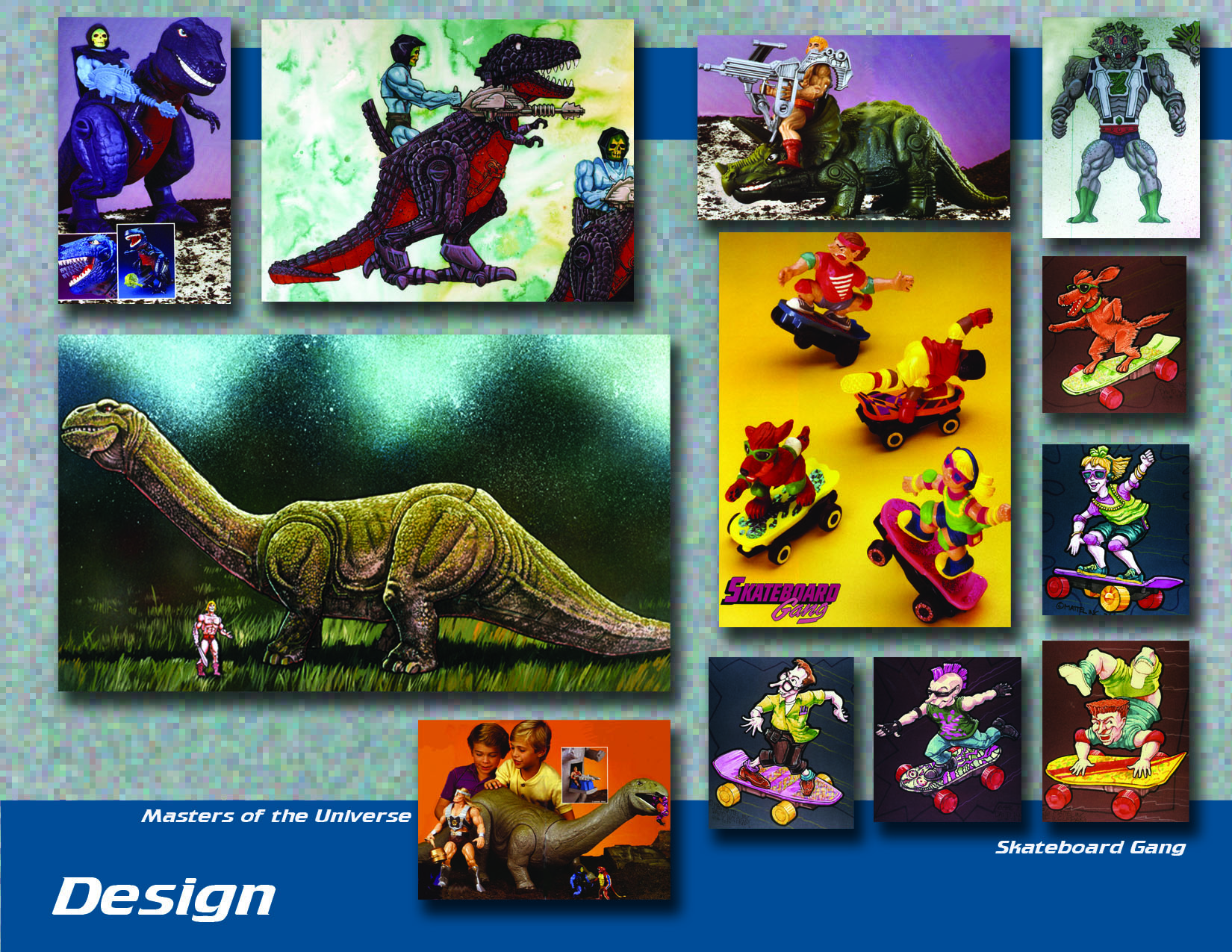
DW: Boglins, Captain Power, Computer Warriors, Mad Scientist, and “Hook” were all lines I worked on at the old Hawthorne Location. When we moved to El Segundo, I worked on Last Action Hero, The Flintstones, Street Sharks, and Judge Dredd among others. Sadly, upper management at Mattel at that time had our group chase lame ideas from the outside that ultimately didn’t go anywhere. We had a two year stretch where our group didn’t generate any product that went to market. … [And] how could I forget Max Steel? Not so big here, but HUGE in Latin America.
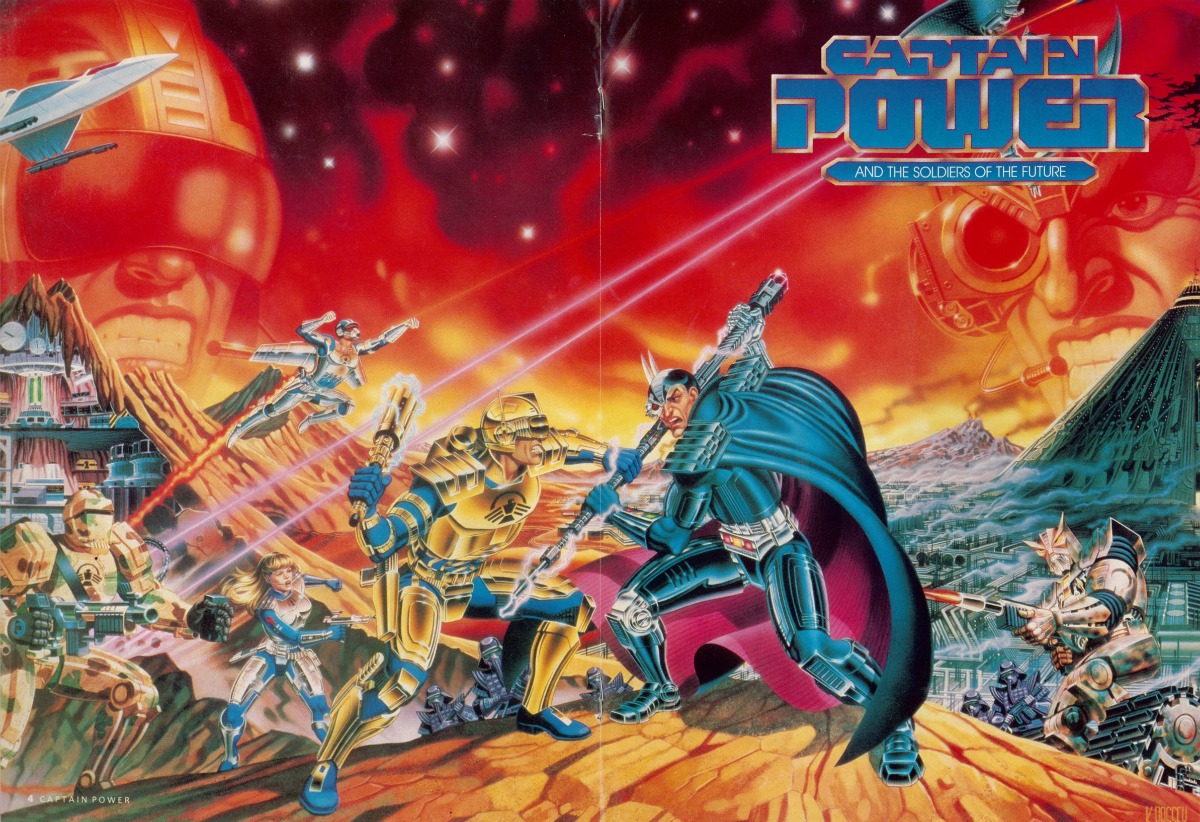
DW: We got some good licenses with Disney/Pixar, Nickelodeon, and Warner Brothers, which led to Toy Story, Hercules, Atlantis, Spongebob, Batman, Superman, Justice League Unlimited, and others. One of my all time favorite Mattel lines was the “Rockem Sockem Robots” Construction line. The name never fit but the toys and the construction system were great. Unfortunately, without any entertainment, the line only sold when it was highly advertised, and was eventually dropped. We also had great success with Yugioh. We set a Mattel record for getting toys to Market in five months. Our Duel Disc Launcher was Mattel’s Toy of the Year in 2005
By the way, we also worked on the 2002 He-Man reboot. It was great having the Horsemen on board for the project. For a number of years, I managed what they worked on for Mattel. I read your interview with Martin, and I also wasn’t a fan of that quasi-anime look that we had to go with, but in a big corporation we were only foot soldiers.
DW: I’m going to go on record that I think one of the main reasons the line failed was that Marketing ignored what made MOTU successful: it was having so many diverse characters, and keeping He-Man and Skeletor in relatively short supply, so kids would have to keep on going back to the store to get the “popular” figures. Their idea was to make He-Man “Batman” and have multiple variations of He-Man, and also to have the assortments heavily weighted with He-Man. That strategy did not work, and the retailer’s shelves quickly got clogged up with He-Man figures, and once retailers can’t move product, your line is in trouble. I had a number of not so pleasant conversations with the director of marketing, to no avail.
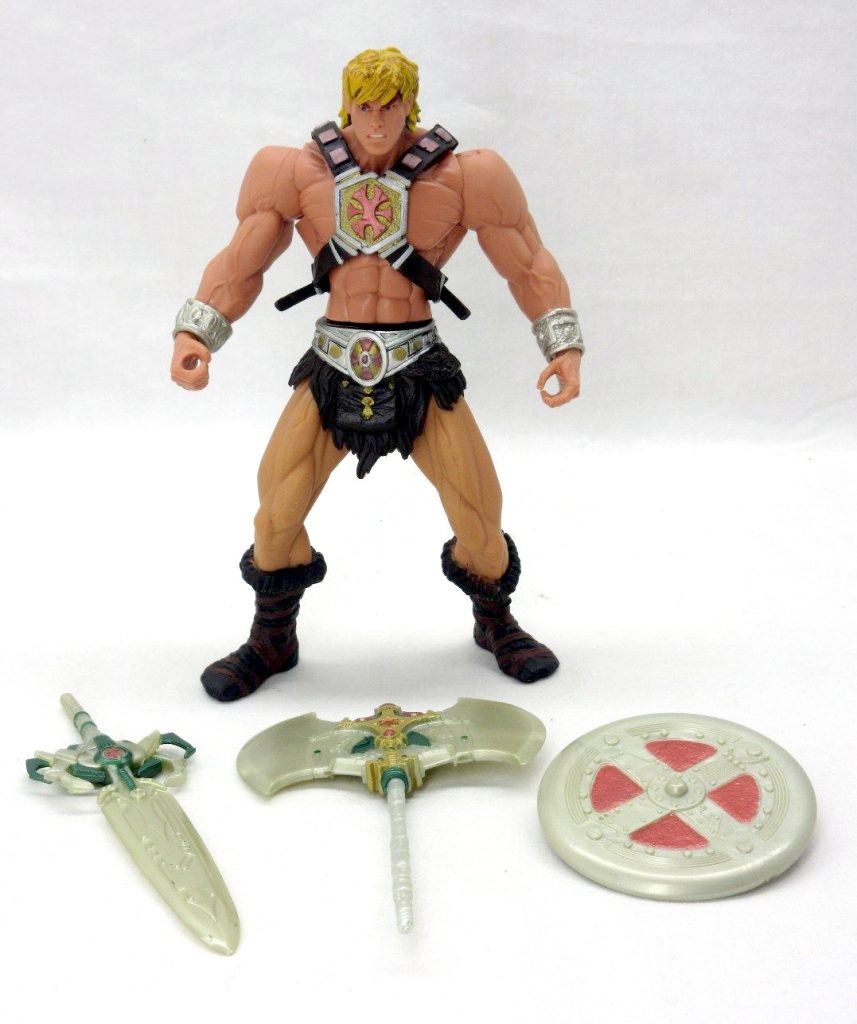
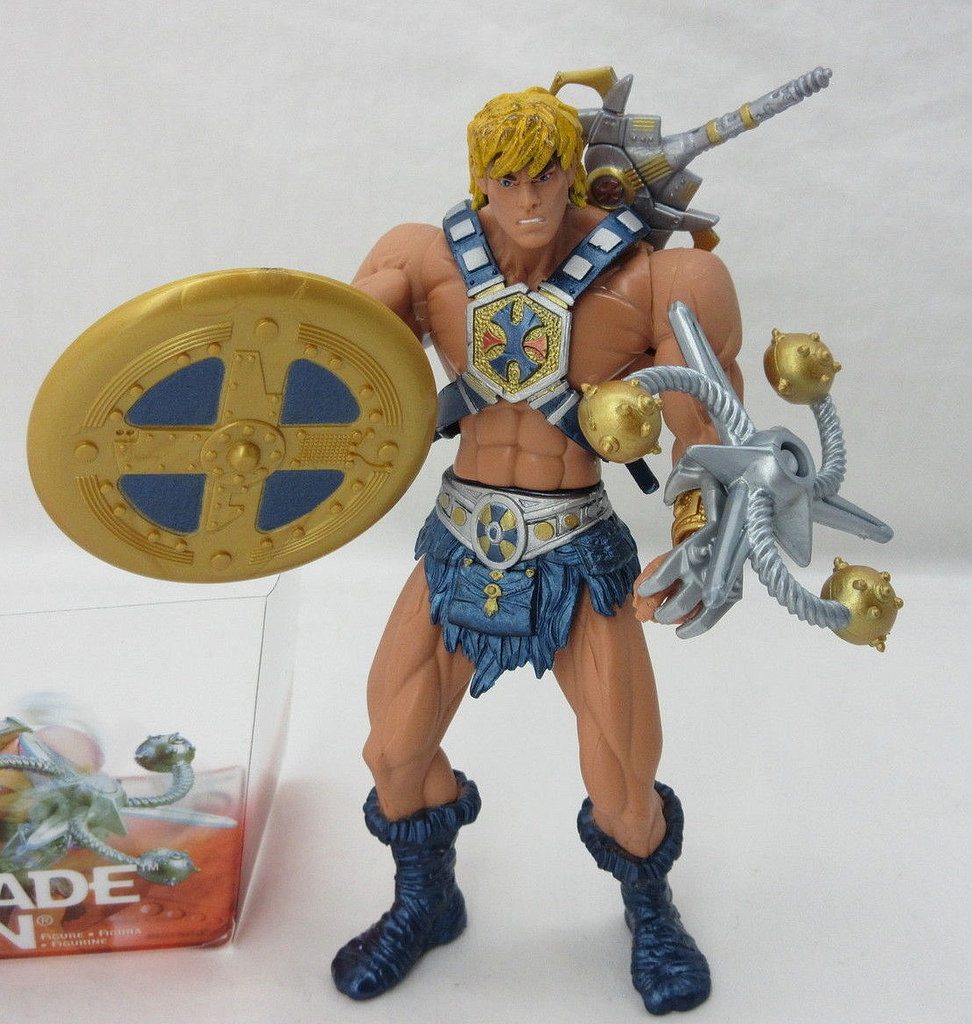
DW: In addition to a very busy and intense product cycle, we did some major pitches which were fun because we didn’t have to worry about cost or production issues, and we could be very creative. Among the more memorable were Star Wars (we did the presentation at Skywalker Ranch!), Cars, and Harry Potter (my big contribution was creating a five foot tall Hogwarts that was made of three separate playsets).
A lot of the best products I worked on over the years never made it to market, but that is just the nature of the business. Every product line conjures up a million anecdotal memories, which are fun to think about, but I have no interest in writing a book.
BR: You mentioned earlier that you worked on four different He-Man lines at Mattel. So that would be the original line, New Adventures, [200x], and then what else?
DW: You left out the 2000 MOTU retro relaunch. We had a big plexiglass showcase in our area that we brought over from the old Hawthorne offices full of most of the MOTU line. Unfortunately, we had a big skylight over our area, and many of the figures after being exposed to sunlight every day started to deteriorate, mostly due to the plasticizer leaching out of the PVC. All the original MOTU tools had long been destroyed, so I had to find mint figures on eBay that we could tear apart and cast to make new tools to recreate the original MOTU figures. The only change we made was to put a little ridge on the bottom of the feet so collectors would know that they were recreations. I was really pleased how well they came out, and the fact that they did well was the impetus to start working on a new line.


BR: The 2000 Commemorative line was great. I remember walking into Toys”R”Us and my jaw hitting the floor when I saw all the He-Man figures. I hadn’t really thought about He-Man since the 80s. Of course I walked out of there with a five-pack. Quite a few different figures were sold in that line, although noticeably missing some key characters like Ram Man, Man-E-Faces, Orko, etc. I assume Mattel wanted to focus on figures that had a lot of shared tooling? Were there Commemorative figures that were planned but never released?
DW: No. We carefully plotted out where we could maximize on the shared tooling. The production runs were low, and Mattel’s tooling was expensive, so we didn’t have the luxury of doing characters that didn’t share tooling like Ram Man or Orko. It wasn’t intended as a big moneymaker, but at the same time, it is hard to justify doing anything from a corporate standpoint that doesn’t contribute something to the bottom line. The whole line was designed as a one off, including the five and ten packs, with no thought of any subsequent waves. In retrospect, the only other figure that I wish we had, and could have done, was Battle Cat and Panthor. [Note: Battle Cat and Panthor were actually released in gift sets with He-Man and Skeletor, respectively.]

BR: There seem to have been several different artists who did the artwork on the front and back of the figure, vehicle and playset packaging for New Adventures. Do you happen to remember who they were?
DW: That is one area that I can’t help you with. I had my favorites, like Bill George, and I know a friend, Errol McCarthy did some of the backs, but for me, the package was what it was, and hopefully displayed the product as well as possible. I did have run-ins with packaging people from time to time, where I thought the overall look of the packaging didn’t represent what we were trying to do with the product, but not on any of the He-Man lines.
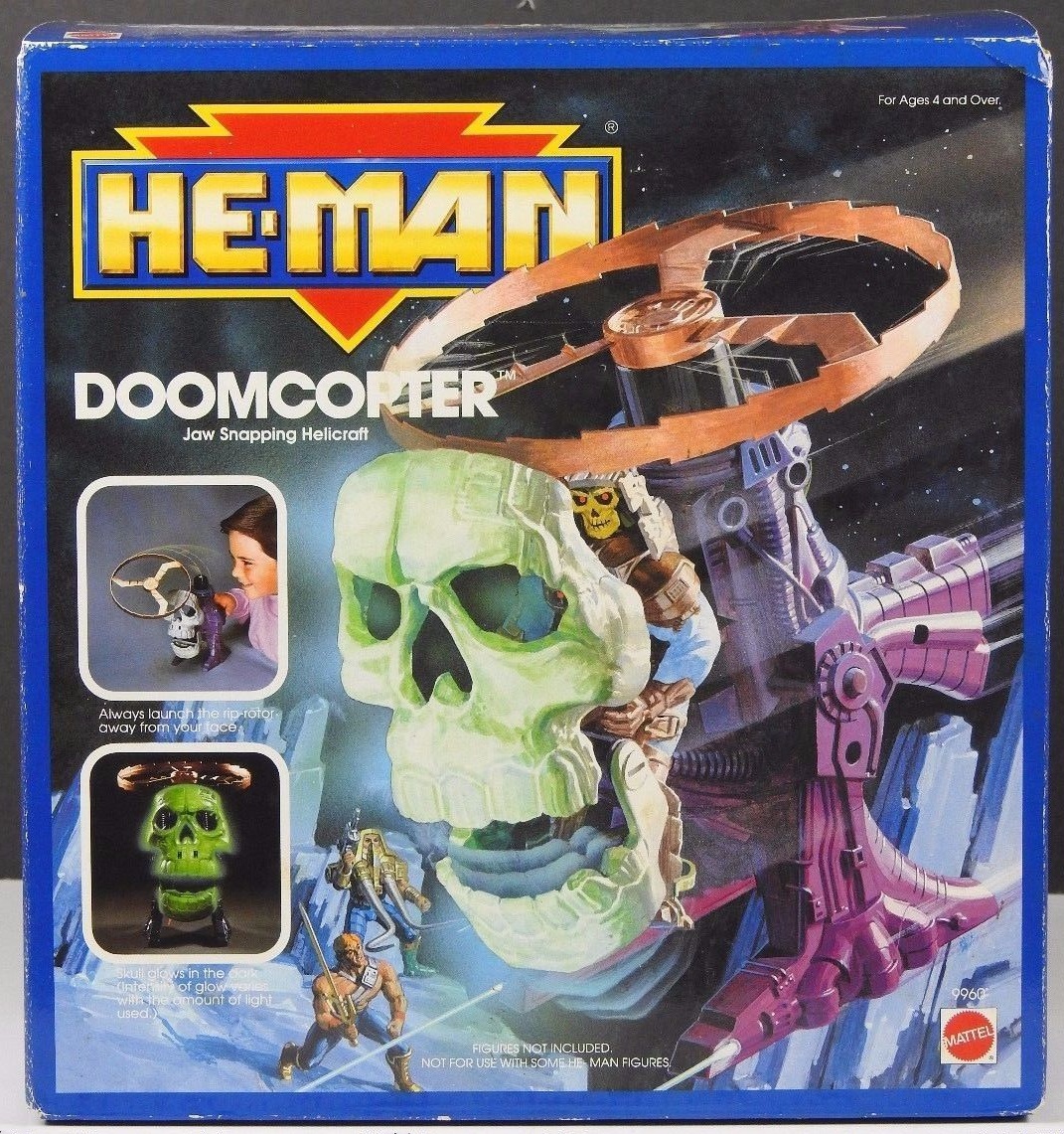
BR: After 22 years at Mattel, what came next for you? I see on your website that you currently do a lot of fine art, focusing on outdoor subjects. Who are your influences, artistically?
DW: After getting ‘whacked’ along with a number of other senior Mattel people in a major management change, I started doing fine art. I was only two years away from when I planned to retire, and really didn’t have the need or desire to go back to work. The very first time I went painting plein air (on location) was with Martin Arriola. I work mostly in oils and pastels. My website is mostly landscapes, by design for ‘branding’ reasons, however I do other more experimental art as well.
I am on the executive board of a number of art organizations, and have a studio in an art co-op in Old Torrance which I helped found, where I also teach. Art keeps me pretty busy, and it is a great excuse to travel. For this year and next I am leading painting workshops in France.
As far as my influences are concerned, I have many: Kim Lordier is probably my favorite pastellist, but I have taken workshops with, and become friends with many of the top artists in the country. This weekend I am doing an Advanced Mentoring workshop with Richard McKinley, another of my favorites. In fact, he was the one who suggested I do the France workshop.
BR: Hoove’s early concept art was included in the Dark Horse book. In this version he actually has metallic hooves, and a very different color scheme compared to the final toy, which was all in copper and bronze (and no hooves). What’s the story behind the changes? Did it have to do with the color limitations you mentioned earlier?
DW: Wow! you’ve got me there!!! I guess I have forgotten over the years. I can tell it is Hoove, because there is a gun mounted on the leg that would kick up, but other than that I can’t remember why the look changed. And yes, the molded copper and bronze were among my go-to evil colors.
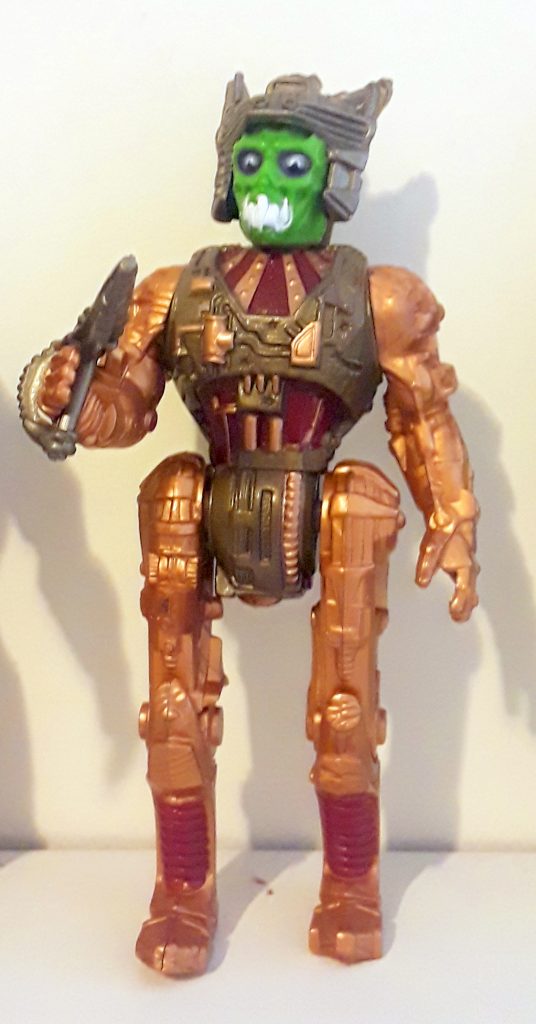

BR: You mentioned you did the revised drawing for Mosquitor – did someone else take a first crack at designing it then? Also, who designed Laser Power He-Man?
DW: I think Pat Dunn did the first Mosquitor design, and I’m pretty sure that Martin Arriola would have done the [Laser Power] He-Man, maybe with some influence from Dave McElroy.
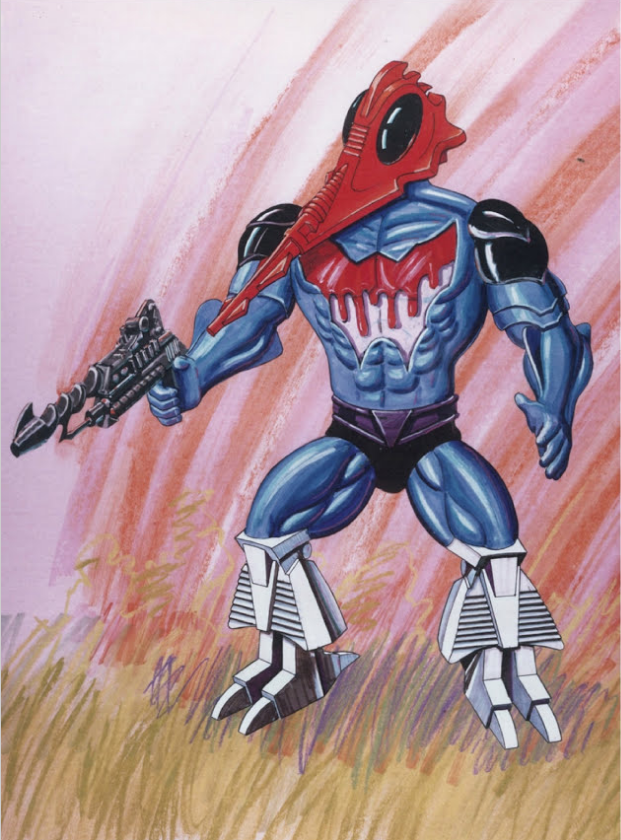

BR: How did Mattel decide on what themes to go for in a given year? For instance, in 1987 Mattel did the three dinosaur figures, of which you designed Tyrantisaurus Rex. Were dinosaurs particularly popular that year? How much of it was market research and how much of it was guess work, is I guess what I’m asking.
DW: I came to the party relatively late, so I don’t have a lot of insight into how the Pre-Eternia theme came about. I think that Marketing and the powers that be at Mattel were hoping for new entertainment to support that theme that didn’t happen. There were also a couple of characters that didn’t come out, which made the Grayskull theme even more of an outlier. They were He-ro and Eldor. John Hollis worked on both of those. Eldor had a book, based on a simple magic trick prop. I ended up working on real holographs of the dinosaurs and Pre-Eternia that went inside the book. FYI, I also designed Bionatops.

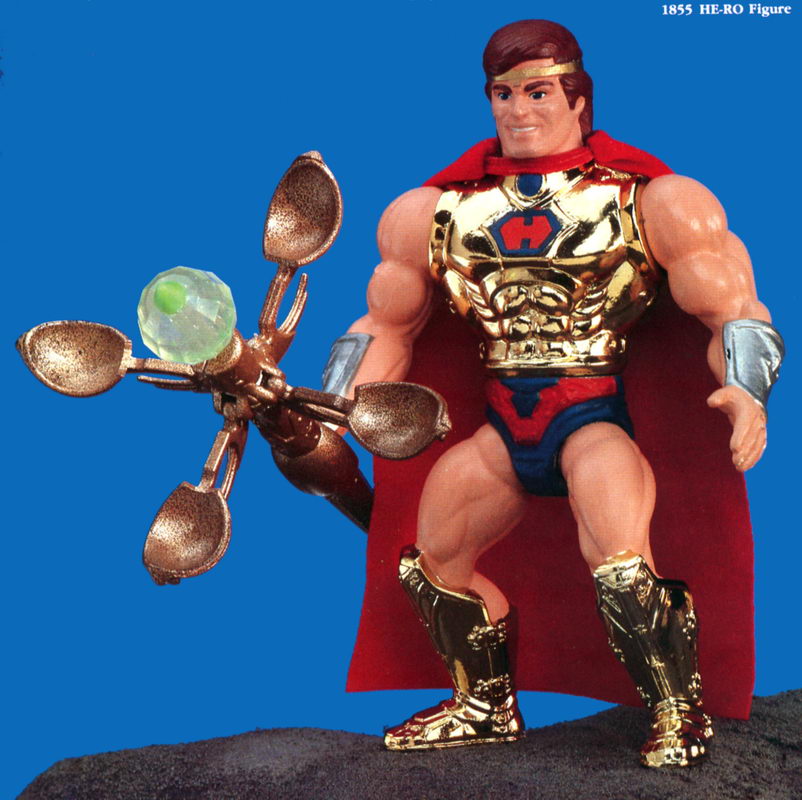

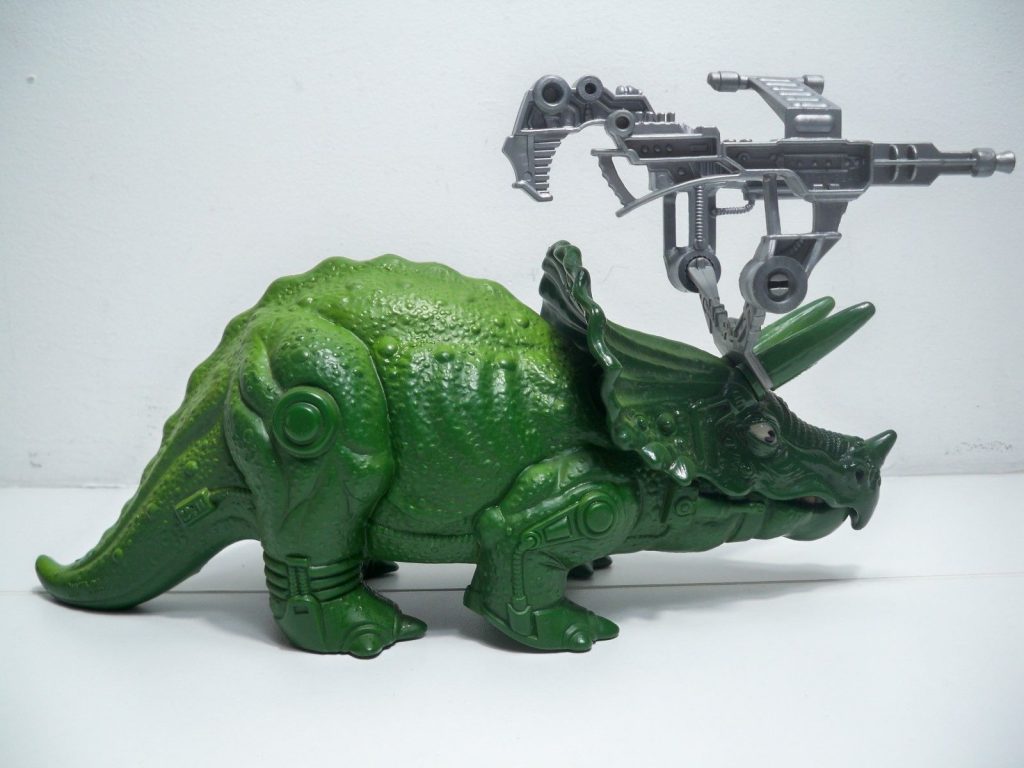
BR: I’ve heard that [Gigantisaur] has something of a storied history. Were you the main designer on that? That one showed up in the 1987 Mattel Catalog, but of course was never released. Could you share some of the background on that?
DW: Yes, I was the designer on the many iterations. When it was first shown to me, there was a beautiful, but totally unrealistic painting by Ed Watts, and a white prototype model that was submitted by a well known outside toy invention company.
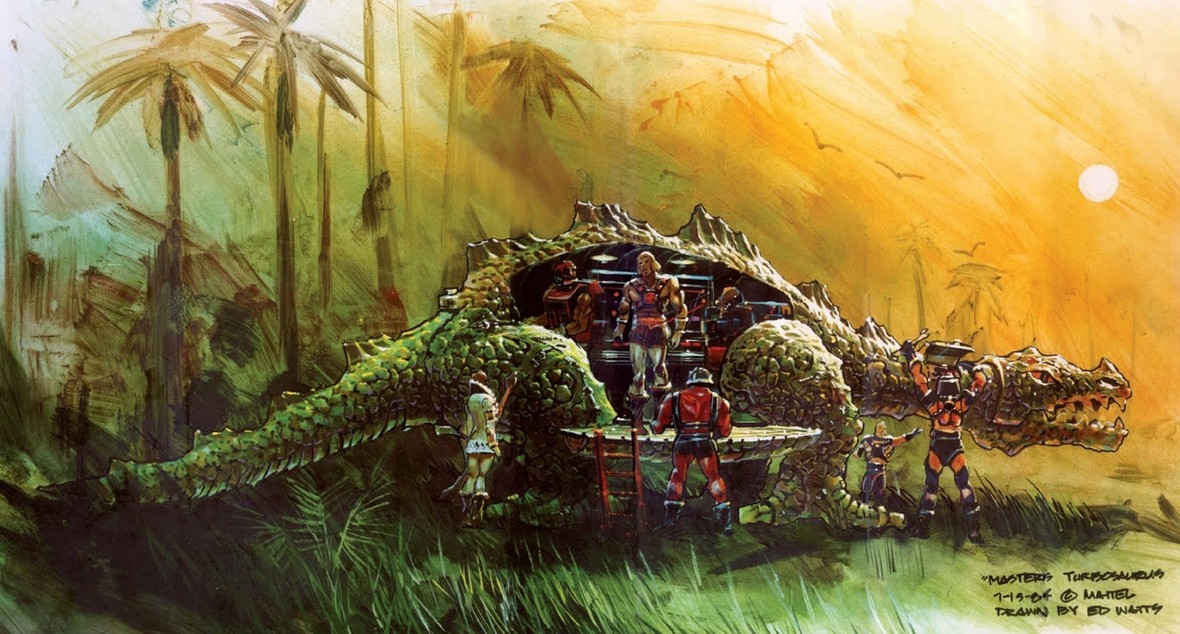
DW: My first boards (especially the side view) show the reality of what I had to work with. One of the big visual issues is that the feet had to be huge to extend past the center of gravity. Ed’s (a great guy by the way, who went way too soon, and not in a way I would want to go) drawing hinted at this voluminous interior, when in fact, because of the cockpit, could only hold one figure.
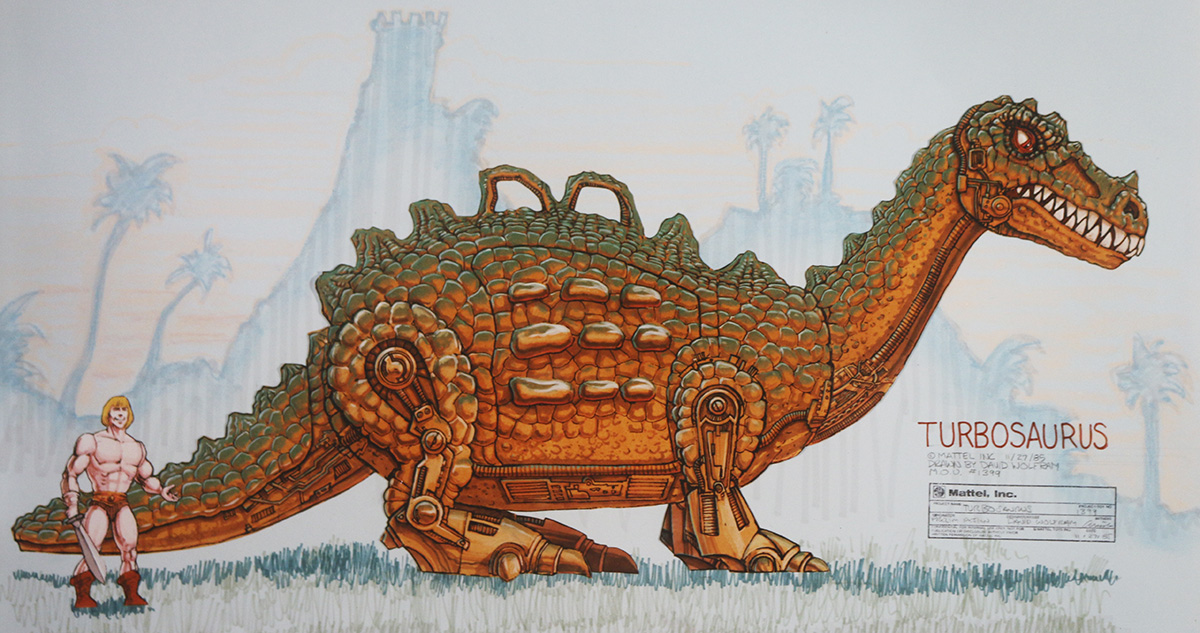
DW: There was also a figure that was supposed to hide in the tail section, but in the model it looked like the dinosaur was taking a dump! There were lots of meetings when marketing and management were forced to confront the reality of this turkey-like bastardization rather than the seductive drawing. I was given the go ahead to take some of the elements of the old model, and another provision was that it had to swallow a figure.
I did a lot of work with foam and clay to work out a better proportioned creature, and the engineer that I worked with, Ben Guerrero (Tony the sculptor’s brother) came up with the idea of marrying the tail with the part of the body with the rear legs to create a tripod which eliminated the need for gigantic feet to let it stand up. It not only stood up, it shot up, because Ben used a very strong spring. Of course, after all that it went to pre-Toy fair, where the line was for all intents and purposes dead domestically.
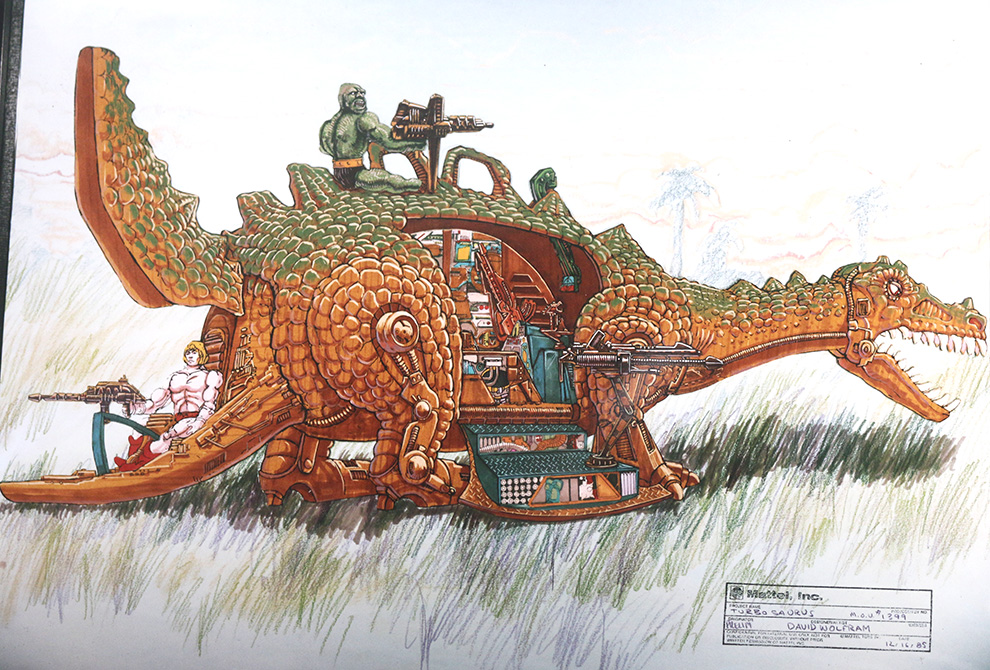

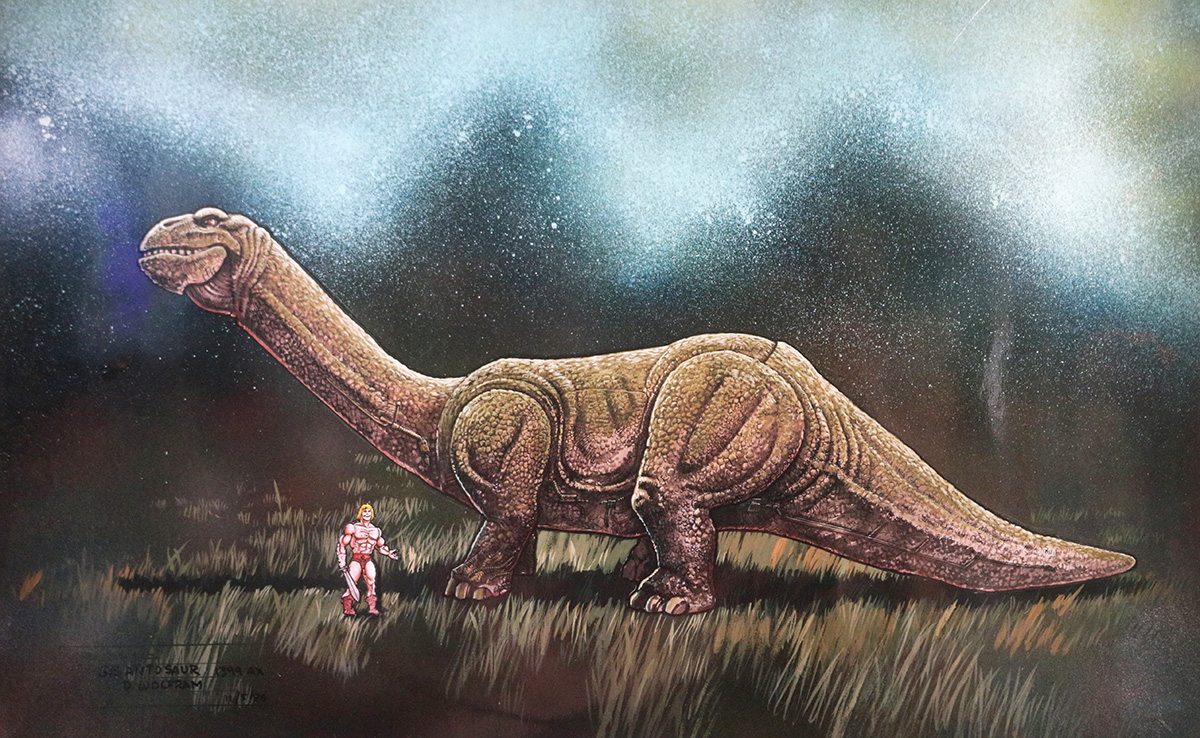
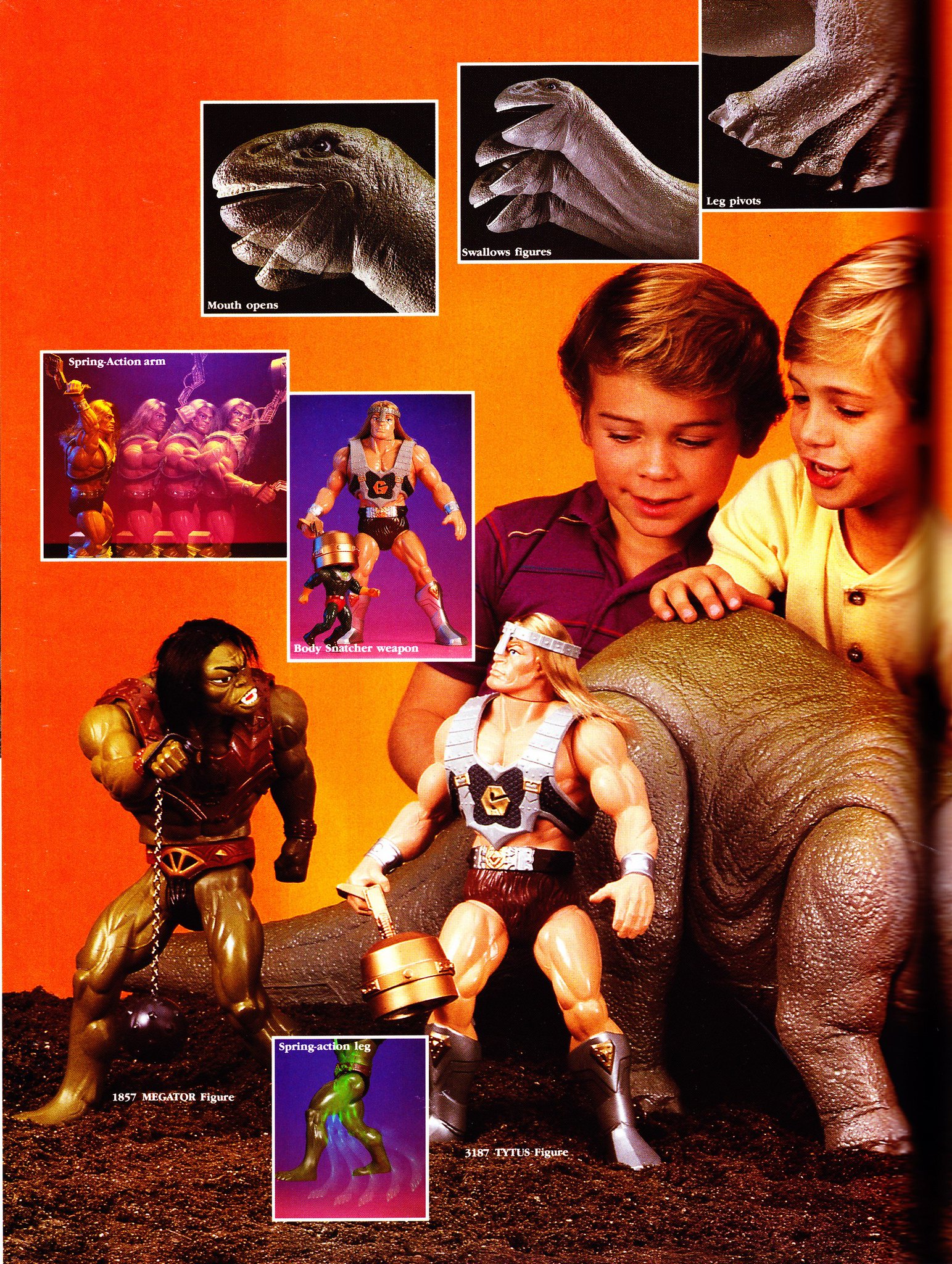
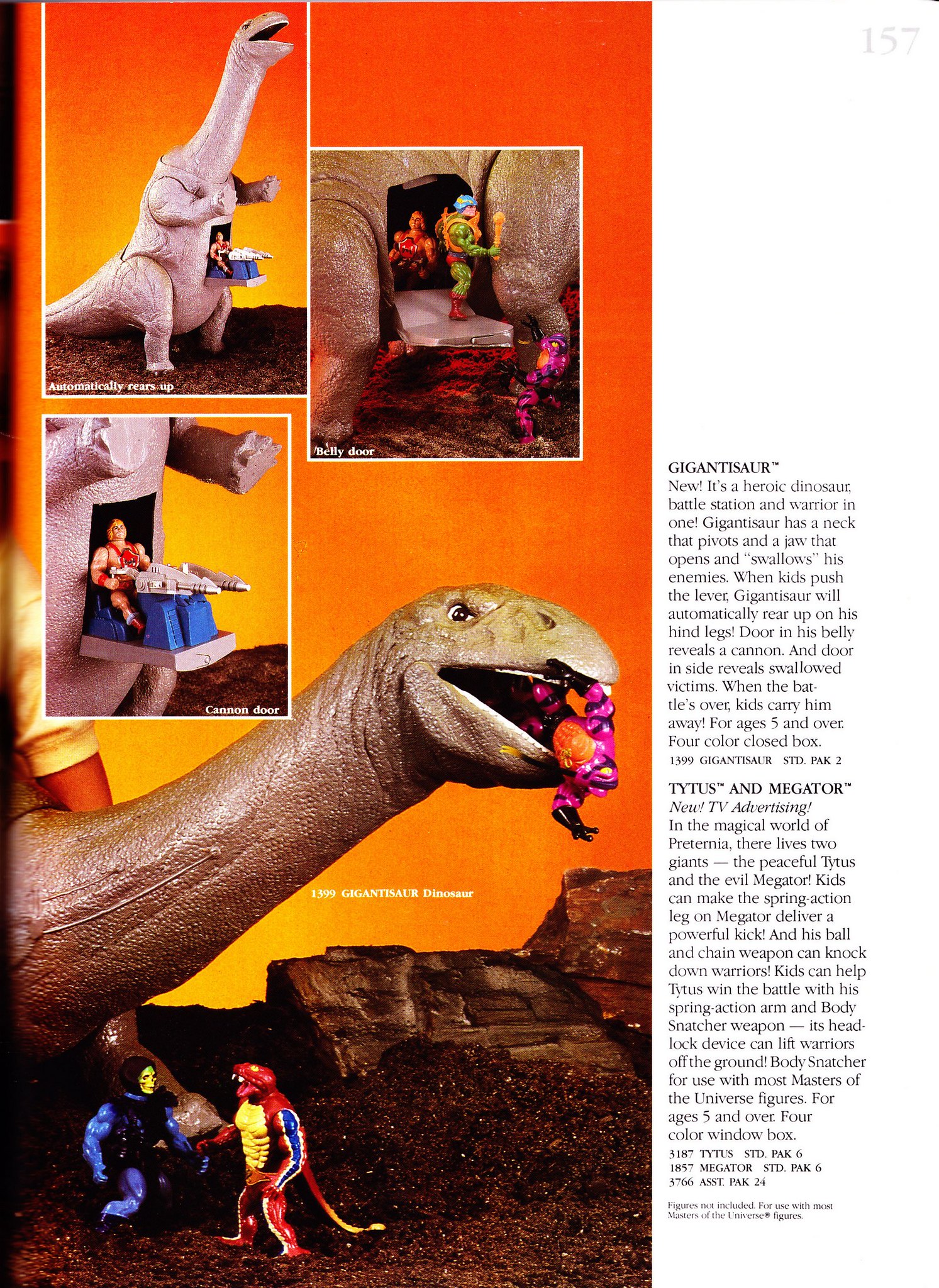
DW: As I was thinking about Ed Watts, I flashed on a fundraiser idea my design group had to help raise money to help with his medical expenses. As you probably know, the Four Horsemen sculpted their figures very large – at least 12″ tall. I had them cast up six figures. I remember He-Man, Skeletor, Trap Jaw, for sure, and I’m pretty sure there was a Mer-Man, too. I’m pretty sure we had six all together. Each member of the group, including myself took a figure, created a base, and did a tricked-out version of that character. The figures were then auctioned off to fans (I’m not sure if it was through eBay, or if it was done some other way). Anyway, we ended up making something like $15,000 to give to Ed’s family. We also had a little internal competition, and my cadaverous Trap Jaw won. Stupidly, we didn’t take good pictures of them, but I think at the time we used he-man.org to promote them. If you ever come across any of those pics I’d love to see them.
Note: Some images are available here and here.
BR: You talked before about figures like King Randor, Scare Glow, Clamp Champ and Ninjor, for which you were given very minimal new tooling to work with, for the most part just new heads. But, you also did Snake Face (great drawing, by the way), which is of course all new tooling except for the staff he came with. It seems like for some figures they would go all out on new tooling, and others they would provide very little new tooling – kind of feast or famine. Why was that?

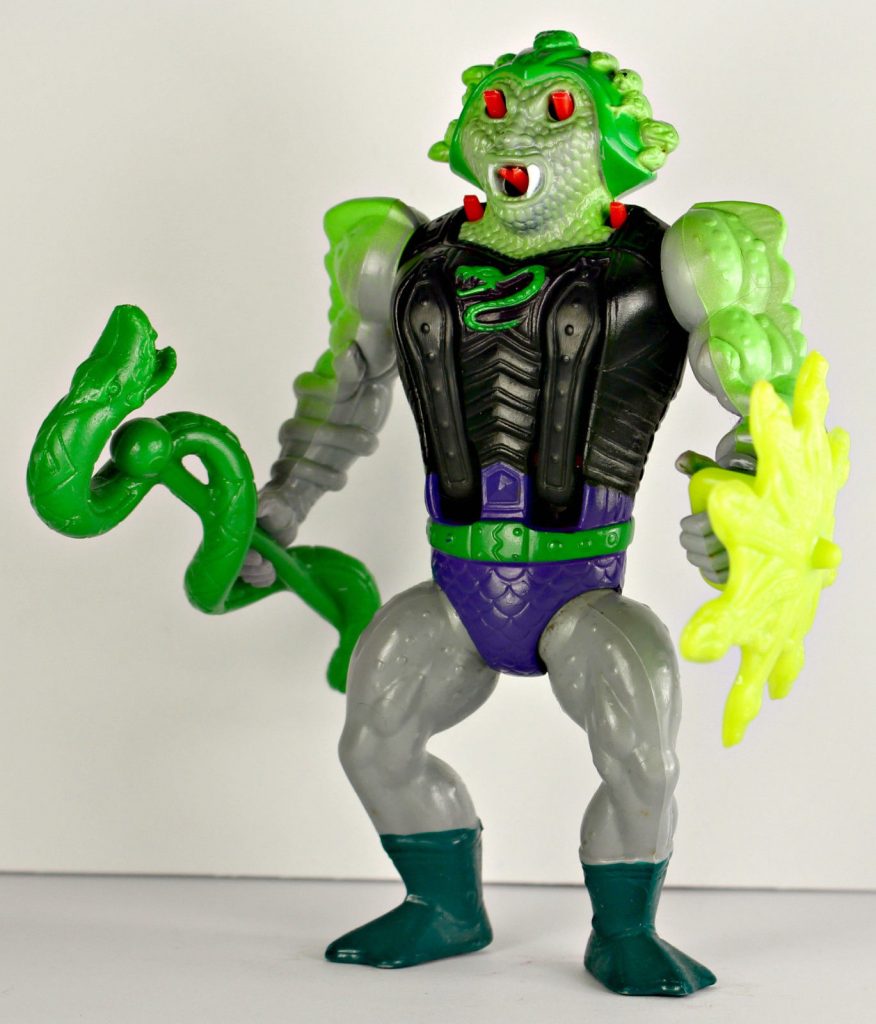
DW: I guess they were still trying to make some money, partly by not spending as much on tooling, but still having new characters to launch to keep the trade happy. Outside of the movie figures, Snake Face (or Medusa man) was one of the last-newly tooled MOTU figures. Again, the preliminary concept sketch showed all these gnarly fully sculpted snakes coming out from everywhere, when the reality forced on me from engineering was they had to use nylon that couldn’t be detailed.
BR: David, thanks once again for the fascinating information and wonderful artwork. I really appreciate you taking so much time to share this with me!
DW: This has been fun, and has dredged up a lot of old memories.
Many thanks to David for taking so much of his time to answer my questions and share his art.
David’s fine art can be seen at his website: http://davidwolframart.com/
Want more information? Check out David Wolfram answers fan questions.
